
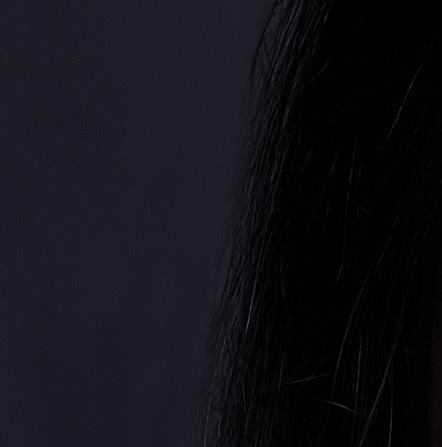




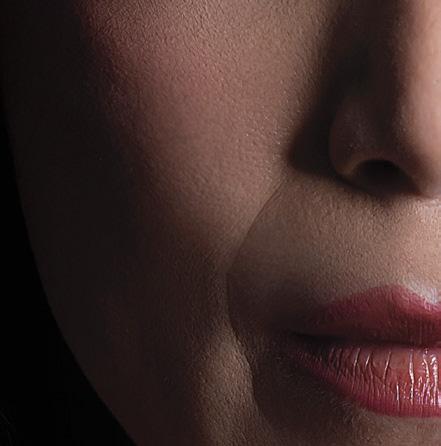









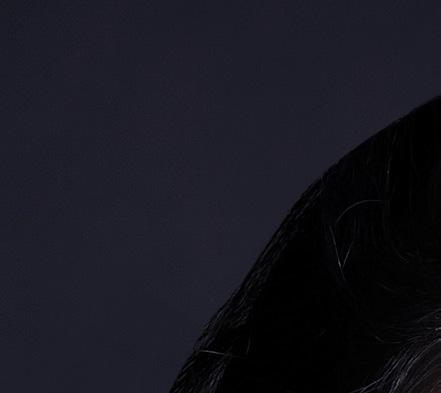
















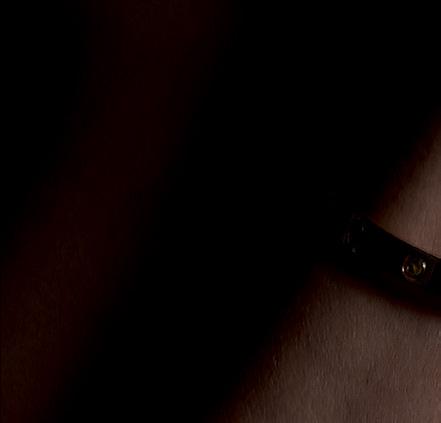









BD 2.10 KD 1.70 RO 2.10 SR 20 DHS 20 P.60 A TIMEHONOURED LEGACY: Watchmaker Vacheron Constantin has a close connection to the Middle East P.38 WOMEN IN TECH: How the region’s trailblazers are challenging the status quo SCAN TO WATCH PUREHEALTH’S SHAISTA ASIF SHARE THE HEALTHCARE GIANT’S KEY VALUES AND GOALS VIA A SPECIAL AUGMENTED REALITY EXPERIENCE SPECIAL REPORT: POWER LETTERS 2023 - PERSPECTIVES FOR THE YEAR gulfbusiness.com / JANUARY 2023
TIME SHAISTA ASIF, GROUP COO OF PUREHEALTH, IS FOCUSED ON TRANSFORMING THE PRESENT AND FUTURE OF HEALTHCARE AS WE KNOW IT, WITH A STRONG FOCUS ON LONGEVITY
UNLOCKING

A premier business, lifestyle & entertainment destination BOOK NOW +971 4 427 1000 | cu@mediaonehotel | i mediaonedubai | f Media One Hotel EAT PLAY STAY REPEAT
07 The brief






























An insight into the news and trends shaping the region with perceptive commentary and analysis
















26




Giving years to life

Shaista Asif, group COO of PureHealth, shares why longevity is key to the company’s vision for healthcare



43 Special report: Power Letters 2023
The region’s business leaders and executives share their outlook for the year

gulfbusiness.com January 2023 3
CONTENTS / JANUARY 2023
Gulf Business



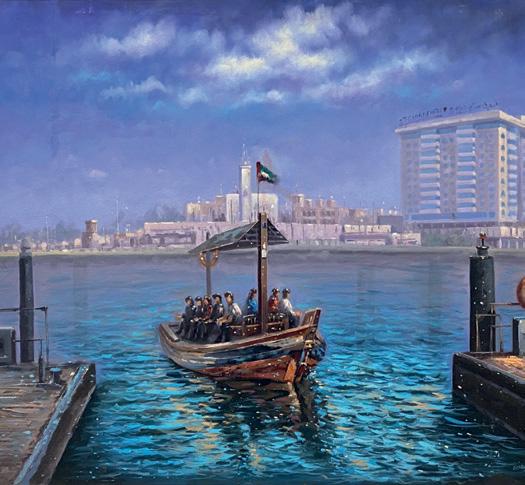

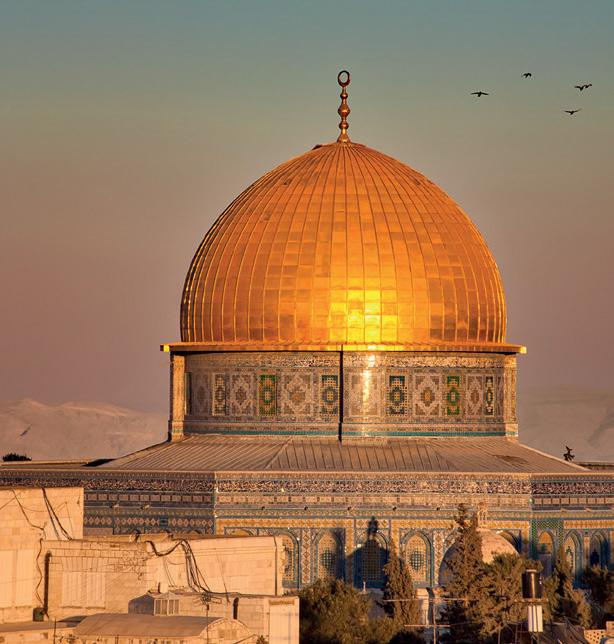



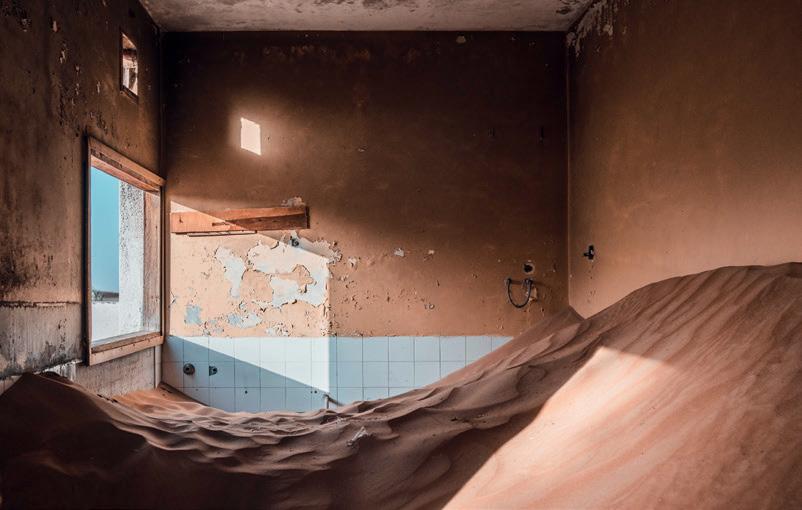































 Handcrafted chiming clock by David Galbraith
Photograph by Joachim Guay
Painting by Andrew Vicari
Photograph by Noam Chen
Painting by Mai Majdy Painting by Faisal Abdulqader
Painting by Faisal Abdulqader
Painting by Shadab Khan
Painting by Sonu Sultania
Handcrafted chiming clock by David Galbraith
Photograph by Joachim Guay
Painting by Andrew Vicari
Photograph by Noam Chen
Painting by Mai Majdy Painting by Faisal Abdulqader
Painting by Faisal Abdulqader
Painting by Shadab Khan
Painting by Sonu Sultania
Choose from our extensive range of original works by award-winning international and local artists. USE CODE FESTIVE2022 TO AVAIL 10% DISCOUNT
Painting by Liz Ramos-Prado
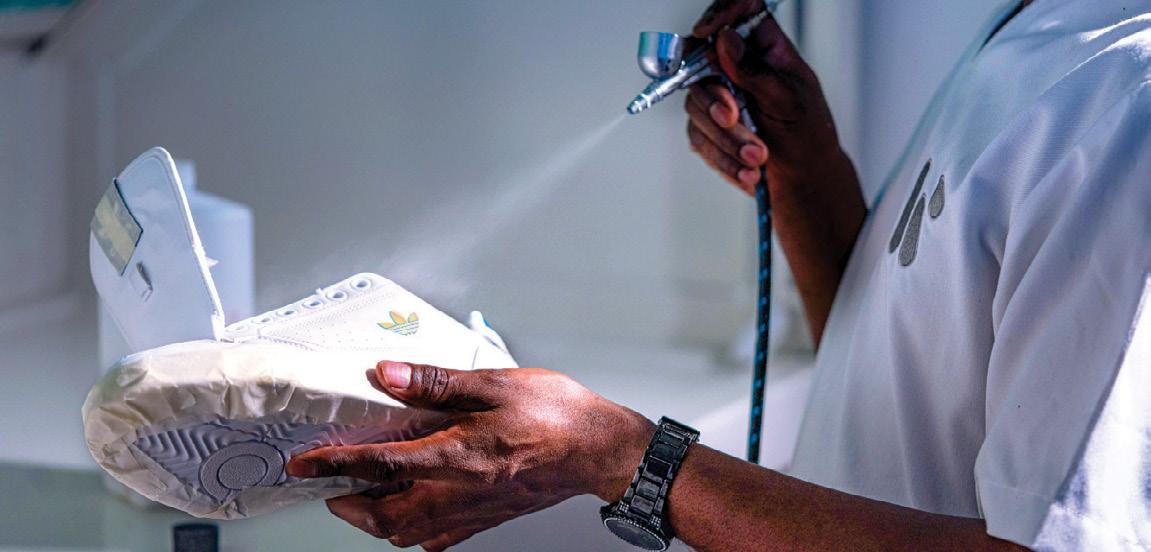
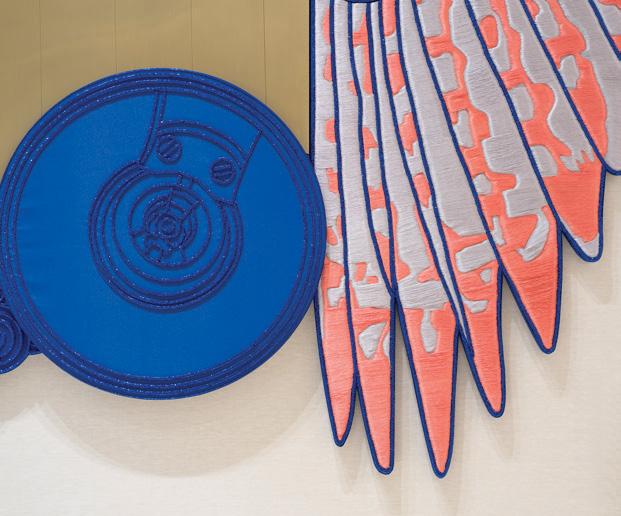


gulfbusiness.com January 2023 5
Sheikh
Rashid
59 Lifestyle A close connection Showcasing Vacheron Constantin’s deep bond with the region
The future of home retail We look at the emerging trends in the sector p.64 A shopper’s delight Dubai’s retail calendar for 2023 is packed with 18 events p.68
OFFICE: Media One Tower, Dubai Media City, PO Box
Dubai, UAE, Tel:
427
Fax: +971
428 2260, motivate@motivate.ae DUBAI MEDIA
Floor,
UAE, Tel:
Fax:
ABU DHABI: PO Box
UAE, Tel:
Fax: +971
motivate-adh@motivate.ae LONDON: Acre House, 11/15 William Road, London
UK, motivateuk@motivate.ae Follow us on social media: Linkedin: Gulf Business Facebook: GulfBusiness Twitter: @GulfBusiness Instagram: @GulfBusiness Cover: Freddie N. Colinares Editor-in-chief Obaid Humaid Al Tayer Managing partner and group editor Ian Fairservice Chief commercial o cer Anthony Milne anthony@motivate.ae Editor Neesha Salian neesha.salian@motivate.ae Tech editor Divsha Bhat divsha.bhat@motivate.ae Contributing editor Zainab Mansoor editorial.freelancer@motivate.ae Contributing editor Zubina Ahmed zubina.ahmed@motivate.ae Senior art director Olga Petro olga.petro @motivate.ae Art director Freddie N. Colinares freddie@motivate.ae Photographer Ahmed Abdelwahab General manager – production S Sunil Kumar Production manager Binu Purandaran Production supervisor Venita Pinto Publisher Manish Chopra manish.chopra@motivate.ae Digital sales director Gurjeet Kaur Gurjeet.Kaur@motivate.ae Sales executive Sonam Sharma sonam.sharma@motivate.ae Group marketing manager Joelle AlBeaino joelle.albeaino@motivate.ae 70
with entrepreneurs and insights from experts on how the regional SME ecosystem is evolving CONTENTS / JANUARY 2023
“Our next stop is 384,400km away. We look forward to Rashid leaving an Arab footprint on the surface of the Moon. We thank Team Mohammed Bin Rashid Space Centre for the launch of the Rashid Rover and for raising the UAE flag in space”
Hamdan bin Mohammed bin
Al Maktoum, Crown Prince of Dubai and Chairman of the Dubai Executive Council
p.60
HEAD
2331,
+971 4
3000,
4
CITY: SD 2-94, 2nd
Building 2, Dubai,
+971 4 390 3550,
+971 4 390 4845
43072,
+971 2 677 2005,
2 677 0124,
NW1 3ER,
The SME Story Interviews
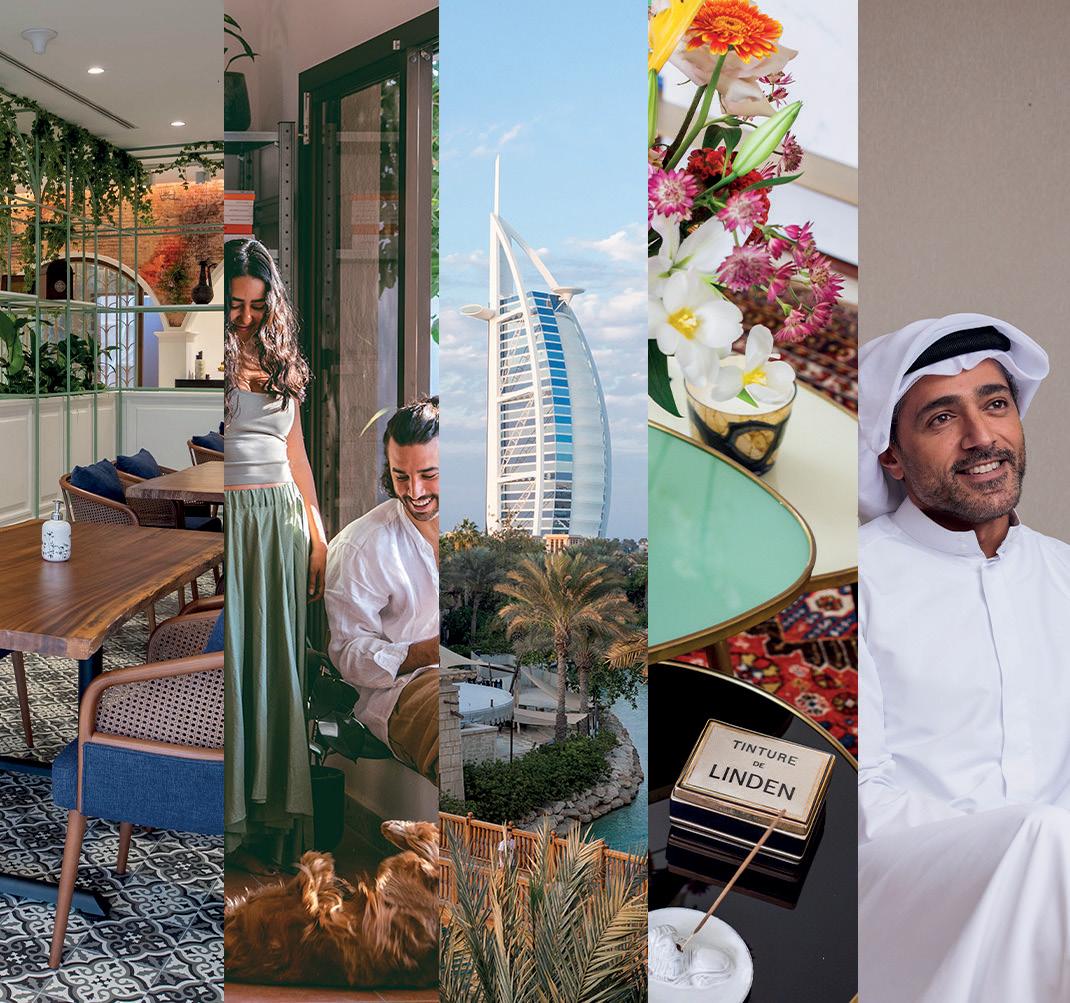




| +971 4 427 3040 motivatecreate.com VIDEO | PHOTOGRAPHY | ANIMATION | STREAMING | STUDI0 & EQUIPMENT RENTAL | CONSULTING SERVICES WE BRING CONTENT TO LIFE


gulfbusiness.com January 2023 7 Investment 08 Banking 09 Leadership 12 Startups 14 Customer Service 18 JAN
management
Demographic shifts and the expansion of wealth globally are creating new customer segments p.10 23 The Brief WHAT IS THE OUTLOOK FOR THE WORLD OVER THE NEXT THREE YEARS? Source: World Economic Forum Global Risks Perception Survey 2021-2022 Negative scenarios Positive scenario 41.8% Consistently volatile with multiple surprises 37.4% Fractured trajectories separating relative winners and losers 10.1% Progressive tipping points with increasing catastrophic outcomes 10.7% Accelerating global recovery
Wealth
gains ground
An index strategy that’s all about customisation is expected to grow faster than other investment vehicles over the next four years as investors’ desire for personalisation intensifies.
Cerulli Associates expects assets in so-called direct indexing to climb to $825bn by 2026 from roughly $462bn now, according to the research shop’s new paper sponsored by direct-indexing provider Parametric Portfolio Associates. That’s a five-year compound annual growth rate of 12.3 per cent, exceeding growth forecasts for exchange-traded funds (ETF), mutual funds and separately managed accounts.
Direct indexing essentially allows investors to cherry-pick which stocks to buy in a benchmark index instead of owning a fund that tracks a specific gauge like the S&P 500. In recent years, the strategy has boomed in popularity. It
gives specialisation-minded advisers the ability to tailor portfolios at lower costs, which has become more important as asset management firms vie for clients’ dollars.
“Competition continues to intensify in the wealth management industry as investors exercise more control over their

portfolios and providers are challenged to differentiate,” the paper said. “This has continued to amplify industry interest in direct indexing and, more broadly, mass customisation of client portfolios.”
Wall Street has been pouring billions of dollars into direct indexing. Franklin Resources Inc., better known as Franklin Templeton, bought O’Shaughnessy Asset Management in September 2021 for its custom-indexing business known as Canvas. In 2020, BlackRock Inc. purchased Aperio for $1bn, while Morgan Stanley paid more than $7bn for Eaton Vance and its custom portfolio business Parametric in 2020.
To be sure, total assets in direct indexing are still dwarfed by ETFs and other products. Though Cerulli sees mutual funds’ five-year compound annual growth rate shrinking 2 per cent, they would still command nearly $19tn in 2026. Meanwhile, money in ETFs is projected to climb 9.5 per cent to $11.3tn in that span, while separate accounts are seen rising 7.2 per cent to $2.5tn.
“Direct indexing, once hailed as an ‘ETF killer’ that would revolutionise investing, has yet to make much of a dent,” Bloomberg Intelligence senior ETF analyst Eric Balchunas wrote in an October [2022] report. “Direct indexing could find some niche uses, but we don’t think it will surpass 2-3 per cent market share given it’s more complex, active and expensive than ETFs.”
To that point, Cerulli sees “mass-affluent and high-net-worth clients” as the largest addressable market for custom indexing, despite shops such as Fidelity and Altruist offering services for accounts with balances less than $10,000.
Franklin Templeton’s custom-indexing platform Canvas, for instance, isn’t offered to retail investors, according to O’Shaughnessy Asset Management client portfolio specialist Jamie Catherwood. But Canvas has crossed $3.5bn in assets and 2,000 accounts since launching at the end of 2019, he said.
“Just from our experience, it’s growing very rapidly, and it’ll only continue to grow as technology and software evolves and price points become lower and fees fall,” Catherwood said on Bloomberg Television’s ETF IQ.
gulfbusiness.com 8 January 2023
ILLUSTRATION: GETTY IMAGES/CSA IMAGES The Brief / Investment
Bloomberg ANALYSIS Direct indexing allows investors to cherry-pick which stocks to buy in a benchmark index Choosing your stakes SO-CALLED DIRECT INDEXING TO CLIMB TO $825BN BY 2026 FROM ROUGHLY $462BN NOW 0 200 400 600 800 1000 DIRECT INDEXING $825bn $462bn
Overall, banks recorded higher profitability as return on equity (RoE) improved 1.3 per cent quarter-on-quarter to reach 15.1 per cent and return on assets increased by 0.1 per cent quarter-on-quarter to reach 1.7 per cent during the third quarter, owing to stronger economic activity, higher interest rates, and higher oil prices. More so, the local banking sector did not witness any major M&A deals during the third quarter, the report added.
Going strong
Faced with innovation-led competition, growing consumer awareness and dynamic market conditions, the traditional banking landscape has experienced a considerable shift. However, despite digital-led disruptions to the financial services ecosystem and global economic challenges, local and regional banks posted promising results.
The aggregate net income of top UAE banks for Q3 2022 increased by 12 per cent quarter-on-quarter, a report by Alvarez & Marsal (A&M), which examined the data of the country’s 10 largest listed banks, comparing last year’s Q3 results against the previous quarter, revealed.
In the neighbouring country of Saudi Arabia, aggregate net profit of the country’s top banks increased 9.3 per cent quarter-on-quarter in Q3 2022, another A&M report, that compared last year’s third quarter results of the kingdom’s 10 largest listed banks against Q2 2022 data, revealed. In the third quarter of 2022, aggregate loans and advances (L&A) grew by 2.9 per cent quarter-onquarter, while aggregate RoE improved by 1.3 per cent points quarter-on-quarter to total 14.8 per cent. “Profitability growth is expected to continue for Saudi banks as the interest rate outlook remains in an upward trajectory,” the report read.
Meanwhile, gross loans for the listed banks in the GCC reached a high of $1.9tn at the end of the third quarter of 2022, while deposits also reached $2.2tn, a report by Kamco Invest read. “In terms of topline performance, the [third] quarter benefitted from higher net interest income that increased by 8.4 per cent to reach $18.6bn,” the report added.

Lenders across the region fared well. QNB (Qatar National Bank) Group posted $3bn in net profit after the impact of hyperinflation for the first nine months of 2022, increasing 7 per cent year-on-year, while its total assets reached $312bn. National Bank of Kuwait also recorded a 46.9 per cent year-onyear rise in net profit for the first nine months of 2022, totalling $1.2bn. Bank Muscat clocked in a net profit of RO148.29m for Q1-Q3 of 2022, rising 5.8 per cent year-on-year, while National Bank of Bahrain reported an increase of 11 per cent in net profit attributable to equity shareholders to $134.7m for the first nine months of 2022.
While rising interest rates may benefit lenders, themes such as digitalisation, consolidation and shifting consumer expectations may carve a new reality for GCC’s banking.
gulfbusiness.com January 2023 9
The Brief / Banking
ILLUSTRATION: GETTY IMAGES/CSA IMAGES
“In terms of topline performance, the [third] quarter benefitted from higher net interest income that increased by 8.4 per cent to reach $18.6bn”
LENDERS ACROSS THE REGION FARED WELL.
QNB (QATAR NATIONAL BANK) GROUP POSTED $3BN IN NET PROFIT AFTER THE IMPACT OF HYPERINFLATION FOR THE FIRST NINE MONTHS OF 2022
ANALYSIS
The local and regional banking landscape remained on strong footing, writes Zainab Mansoor

gulfbusiness.com 10 January 2023 EXPLAINER DIGITALISATION AND TECHNOLOGICAL INNOVATION IN WEALTH SOLUTIONS ACROSS THE GCC IS EXPANDING INTERVIEW HOW IS WEALTH MANAGEMENT FARING ACROSS THE GCC? ILLUSTRATION: GETTY IMAGES/SORBETTO
Wealth management in the GCC is undergoing significant transformation. In 2021 alone, the high-net-worth-individual (HNWI) population and wealth in the Middle East grew by 5.5 per cent and 6.3 per cent, respectively.
The growth was led primarily by Israel and the UAE, which witnessed HNWI wealth and population growth higher than the global average due to their increased tech-industry focus, according to Capgemini’s World Wealth Report 2022. The UAE’s ultra-HNWIs outperformed global growth rates with a 17.5 per cent increase in population and an 18.6 per cent increase in wealth.
Having said that, shifting client expectations due to volatile market conditions and fundamentally different expectations and investment goals of next-generation investors are redefining norms in the industry, in terms of how wealth advice and investment products are offered.
The traditional, time-tested 60/40 allocation strategy to bonds and stocks is no longer viable. With challenging equity and bond markets, wealth managers are finding it harder to generate superior returns for their clients.
Another trend is the huge transfer of wealth from baby boomers to their successors. As per estimates, baby boomers are set to pass more than $68tn on to their children. This transfer will disrupt the established norms between wealth managers and their clients, while creating opportunities for technology-driven firms to grow market share.
How can wealth managers in the GCC region create a valuable client experience?
Digitalisation and technological innovation in wealth solutions across the GCC are expanding as clients seek more sophistication and ease of access.
Abdulmohsin Al Omran, founder and CEO, The Family Office

Fintech investments in the MENA region have already reached $819m in the first half of 2022, according to data by dealroom. This is almost as much as in all of 2021 and 14 times more than in 2016. That also explains why a growing number of wealth firms, including ours, are investing substantially in technological solutions.
Having said that, digital developments have not only enhanced wealth solutions and client experience but have also enabled advisors to reach new customers and grow market share. Wealth managers must adopt a hybrid approach where their clients can access products through digital channels, while easily approaching their relationship managers and advisors to address their investment needs.
The severe impact of the pandemic on wealth management, particularly on advisor-client relationships, left many wealth firms navigating through uncharted waters. However, the health crisis gave way to a significant wave of innovation and experimentation across the wealth management ecosystem.
It is therefore understandable that the attention of relationship managers would shift towards mitigating the impact of the pandemic and refocusing their efforts and priorities by aligning them with their client needs.
How is digital technology accelerating the transformation of wealth management?
In recent years, the penetration of technology into the wealth management business has been increasing, with many players offering digital-only services. While digitalisation, artificial intelligence, and roboadvisory have advantages as tools to attract and retain clients, being technology-savvy doesn’t mean compromising value.
As wealth managers adopt next-generation technology, they must provide an exceptional experience to clients and follow robust portfolio review processes to stay ahead.
The number of young wealthy people, especially millennials, is rising in the GCC. How are you adapting your platform to cater to the growing millennial segment?
Demographic shifts and the expansion of wealth globally are creating new customer segments. An estimated 250 million Generation Y and Z customers – those born between 1981 and 2012 – will have an annual income of over $100,000 by 2030, according to Bain & Company.
While millennials are expected to become one of the most significant segments of our client base, they are not a homogenous customer class. Their investment needs and strategies differ widely from one group to another.
Wealth management is an ever-evolving industry. But in recent years, it has experienced a set of disruptions, and the Covid-19 pandemic has been among the foremost disruptions.
Therefore, advisors must understand the needs of a millennial client carefully and offer bespoke services accordingly. Also, relationship managers must be flexible and adaptable in their approach to retain such clients.
gulfbusiness.com January 2023 11
QWhat are the key emerging trends in wealth management across the GCC?
Did the pandemic change the UAE wealth management playbook fundamentally?
DEMOGRAPHIC SHIFTS AND THE EXPANSION OF WEALTH GLOBALLY ARE CREATING NEW CUSTOMER SEGMENTS. AN ESTIMATED 250 MILLION GENERATION Y AND Z CUSTOMERS – THOSE BORN BETWEEN 1981 AND 2012 – WILL HAVE AN ANNUAL INCOME OF OVER $100,000 BY 2030”
Rebuilding resilience
It will be no surprise for readers to learn that the most frequent subject I have been asked to speak, coach, or consult on by corporations is the title of this piece — under the umbrella of the wider issues of employee wellbeing, mental health, and welfare among others. The desire to increase or enhance employee grit, resilience, staying power, and determination is universal.
I concur with the consensus that these skills have been in steady decline for decades. And no, it’s not the sole fault of Generation Z. In fact, one of the principal factors is the result of our increasingly riskaverse, protected society – particularly in developed countries. We aren’t exposed to the risks, hardships and above all, a sense of personal responsibility that can get us through challenges.
How do we reverse this trend? You can use several awareness lessons, tools, and techniques. Taking grit first: it is defined as the ability to summon the passion and perseverance required to achieve a goal. It goes without saying, therefore, that the goal or objective in question needs a large degree of brainstorming to clearly define. Yet I am astonished at how little e ort goes into this critical skill – indeed watching or listening to countless experts being interviewed in the media on various issues, I find myself muttering “What is your goal?”, “What precisely is your objective?” or “What exactly are you trying to
SIX STEPS TO IMPROVING GRIT AND RESILIENCE
 Hayes , adventurer, author, team and executive coach, and consultant
Hayes , adventurer, author, team and executive coach, and consultant
achieve here?”. It seems that 95 per cent of people in our fast-paced world have little time for defining objectives and instead naively rush towards solutions. There is more to the goal-setting process than the well-known SMART (specific, measurable, achievable, real, and time-bound) acronym. Define your goal and objectives clearly and the ability to tackle them will flow easily.
Meanwhile, resilience has several definitions but is broadly defined as the ability to cope with and recover from setbacks. How do we gain this positive mindset? One lesson to remember is to accept that “bad things” can happen. Challenges, hardships, despondency, despair, and even depression are part and parcel of life. It’s what makes the mystery of life worth living. But it also gives us the greatest learnings — it’s the challenges we face in life and not just the successes that define who we become as people.
Secondly, it is vital to know your capabilities and it requires stepping outside the sanitised comfort zones that society o ten encourages us to confine ourselves to. And whether that is using one’s own senses, awareness, and gut instinct to navigate from A to B, testing yourself to complete a physical goal, or doing something equally tough, they will enable you to cope far better with challenges and boost your resilience skills.
Thirdly, while I am the first to support speaking about one’s personal issues – something our forebearers never did – the entire subject of ‘mental health’ has become a life-diminishing and selffulfilling negative prophecy. Many people feeling bad, low, or lonely will jump on the ‘mental health’ bandwagon in situations where it may just be normal emotional responses to what life throws at us. These can be managed.



For me, the term ‘mental health’ conjures up an assumption of being unwell, sick, and needing help. I use the term ‘mental fitness’ instead – it implies building up your mental muscles in the same way you strengthen your physical muscles to cope with life’s challenges with a positive mindset.
There are several more skills to impart, but the greatest one of all is the lesson of finding the gi t in every circumstance. I will bet that a majority of people reading this article will look back on the greatest challenges they’ve faced in their life, and recognise the value that these have brought them. Creating that mindset in any hardship, and the awareness to find the “gi t” in it is a lesson all of us can use to boost our resilience. Life is tough out there – but it’s also where opportunities dwell.
gulfbusiness.com 12 January 2023
01 Define the clear,
and authentic
02 Anticipate that
things could happen 03 Live outside your comfort zone 04 Compartmentalise the issue 05 Always have a plan B, C, D, and more on hand 06 Find the ‘gift’ in every circumstance The Brief / Leadership
detailed
objective
“bad”
Build your mental muscles in the same way you strengthen your physical body to help you cope with life’s challenges
ILLUSTRATION: GETTY IMAGES/SVETAZI
Adrian
All about the experience
News flash: Consumer behaviour has evolved. The clients’ ask has changed. My job is to see around corners, staying ahead of the game so you don’t have to.
So, what are the most important trends that business leaders should be prepared for and what experiential activations are gaining the most traction? Here is what you need to be prepared for.
First, you need to look back before looking forward. Brand values are increasing in importance and should be at the heart of everything you do with all projects. Consumers own your brand and you’re just the custodian. Even with one pandemic, and yes sadly, we are still in the hangover phase, consumers look deep into the values of the brands they support leading me to my first big points: sustainability and transparency.
WALK THE WALK
Consumers are paying more attention to brands’ stated values. Economic powerhouse Generation Z cares deeply about brand values – and they demand transparency. They are shifting their support to brands that support causes they care about and that “walk the walk,” meaning brands that authentically engage in cause marketing versus a showy yet insincere attempt. Additionally, consumers want to know the ethicality of and where experiential popups are being manufactured and what happens to them afterward.
Pop-ups will continue to generate more lines and are a great way to immerse your audience in a unique experience and they must be unique. Enabling them to chat and share their experience with others in realtime, but it’s also about taking things to the next level.
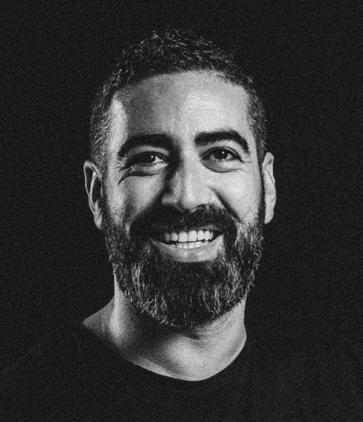
AN ELUSIVE APPEAL
Digital interactive experience is a must; consumers crave and expect them from an activation – from live streams on TikTok to Twitch or shareable by-design experiences, brands need to take advantage, thus allowing our audiences to interact more personally, resulting in more eyes, for example, a pop-up shop must sell limited-edition merchandise to make it
worthwhile. If a person can go online and snag the same things, then all the sense of FOMO you’re trying to invoke will simply evaporate.
People will want to get their hands on that limitededition item, no matter what it happens to be. Weaving these technologies into experiential marketing activations will help brands engage with consumers and create curated memorable experiences.
Personally, I’m in love with digital art installations (specifically AI Data Sculpture) and big statement activations. Digital artwork can stimulate thought and conversation around a particular brand or topic and creating prominent installations can effectively get consumer attention. People will always want to pull out their smartphones to snap photos of art because it’s something interesting and noteworthy in their day. If they can interact with the art using augmented reality, it can also serve as an excellent organic social media marketing strategy, but it must be authentic –how the brand and art intersect gives the consumer confidence that the artist hasn’t “sold out” to the highest bidder. Being culturally relevant and part of the conversation will get you the win you want.
THE WAY FORWARD
In 2023, we’ll see a continued push toward making experiential activations stand out from the crowd, but increasingly relevant to the weary consumer. Experiential marketing that stands out and captures attention will be meaningful, adding worth to the consumer experience, and ensuring they listen to the message you are trying to share.

gulfbusiness.com January 2023 13
The Brief / Marketing
COMMENT
Here are some of the key emerging experiential marketing trends to look out for
ILLUSTRATION: GETTY IMAGES/SORBETTO
Dave Balfour, co-founder and partner of LightBlue, a creative experience agency
ILLUSTRATION: GETTY IMAGES/NUTHAWUT SOMSUK
Three lesser-known reasons why startups fail

Ahealthy entrepreneurship ecosystem is good for economies. And massive funding for regional players, driven by businessfriendly government initiatives, sends a signal that the good times are just getting started. But while the region has become an undeniable epicentre for global entrepreneurship, success does not come with a guarantee. For every Careem, Washmen and RemotePass, there are hundreds of promising prospects that none of us have ever heard of because they failed to go the distance.
If you go looking for answers, answers you will find. There are plenty of reports packed with impressive-looking figures and charts in which the usual suspects are paraded for all to see. Access to capital, tough market conditions, talent shortages –the list goes on. And yet, it is incomplete. While the
usual suspects undeniably play their part, in my own experience, the major culprit emerges as one of three factors that are often overlooked.
01.
INABILITY TO PIVOT
Business founders have a vision. And sometimes, they can get so locked into that vision that it makes them hard-headed at the very moments when they need to be flexible. Obsessed with the central idea that
FOR EVERY CAREEM, WASHMEN AND REMOTEPASS, THERE ARE HUNDREDS OF PROMISING PROSPECTS THAT NONE OF US HAVE EVER HEARD OF BECAUSE THEY FAILED TO GO THE DISTANCE
gulfbusiness.com 14 January 2023
The Brief / Startups
With the right focus and partners along with right information about potential pitfalls, a business can survive in the darkest of days
COMMENT
launched their business in the first place, it can be di cult to detach themselves from it when cashflow tightens and market dynamics shi t. The simple fact is this: if you are unable to monetise for a sustained period, it is time to pivot. For a younger company, the skills may not yet exist in-house for the more dramatic changes, but if the founder cannot consult the board on revenue models and operations shi ts, then they can turn to a coach, mentor, trainer or other neutral third party.
Certain scenarios will have obvious solutions. For example, if a B2B business model is bringing in a steady stream of revenue but a B2C product is not, then expending resources on the latter is wasteful. Formal and continual assessment of the e ectiveness of a product or service is critical. And businesses should not be afraid to discontinue those that do not measure up, despite what they may mean personally to a founding team member. Early focus is vital. Monetise that which is easily magnetisable and leave the more adventurous ideas for later.
02.

INFLATED VALUATIONS
In lean times – such as during a pandemic, economic downturn or period of sustained inflation – this is especially prevalent. Without an accompanying rationale, founders set high valuations. In the absence of any real data to back them up, high valuations rely on being able to convince a few angel investors to overlook how much of the company they obtain as long as they have skin in the game. Inflated valuations can be highly detrimental to the company’s valuation in the future as institutional investors, who may warm to the founders and their ideas, will not see eye
Ryaan Sharif, general manager, Flat6Labs UAE
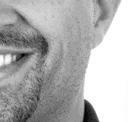


EARLY FOCUS IS VITAL.

to eye with them on valuation terms. This will lead to a struggle to find a solid institutional investor willing to give the same terms as the angels. Unfortunately, many founders have fallen into this trap, and have consequently been forced to take a “down round” which causes a loss in valuation, decelerates growth momentum, and becomes a permanent blemish on the company’s record, potentially warding o future investment from most institutional investors.


03.









POOR FUNDRAISING PLANNING



Fundraising takes time and in fact, it takes a lot of time. The people to whom entrepreneurs pitch, typically require the approval of their bosses and their bosses’ bosses. Such an approval chain involves several rounds of due diligence, the sharing and verification of data, multiple rounds of conference calls, and ultimately, a few investment committee meetings before all the required legal steps have taken place and before the funds can be released.
The most successful founders I have encountered had such meticulous plans in place that they knew which investors they would call, on a specific date and why. For example, they might start conversations with a Series A investor while they were still in the process of raising pre-Series A rounds. It is all about building rapport ahead of time, getting to know potential investors and allowing them to get to know you. You keep them informed of your milestones and explain how the fundraising is progressing for your current round. This builds confidence so that when the time arrives for their support, you do not need to start from scratch. You should also be able to show that you have money in the bank. This also contributes towards building investor confidence because it demonstrates good cash flow management.
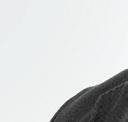
HARD TIMES
Yes, we are facing inflation. Yes, we are amid a period of uncertainty. Yes, operational paradigms are shi ting, and we must adapt. All these things are true, but so is this: every challenge presents opportunity. With the right focus, the right partners and access to the right information about potential pitfalls, a business can survive and thrive in the darkest of days.
gulfbusiness.com January 2023 15
“THE MOST SUCCESSFUL FOUNDERS I HAVE ENCOUNTERED HAD SUCH METICULOUS PLANS IN PLACE THAT THEY KNEW WHICH INVESTORS THEY WOULD CALL, ON A SPECIFIC DATE AND WHY. FOR EXAMPLE, THEY MIGHT START CONVERSATIONS WITH A SERIES A INVESTOR WHILE THEY WERE STILL IN THE PROCESS OF RAISING PRE-SERIES A ROUNDS”
THE SIMPLE FACT IS THIS: IF YOU ARE UNABLE TO MONETISE FOR A SUSTAINED PERIOD, IT IS TIME TO PIVOT
MONETISE THAT WHICH IS EASILY MAGNETISABLE AND LEAVE THE MORE ADVENTUROUS IDEAS FOR LATER
Alan’s Corner






 Alan O’Neill Managing director of Kara, change consultant and speaker
Alan O’Neill Managing director of Kara, change consultant and speaker





Four cultures of leadership
markets. We just don’t give enough airtime to the topic of culture. I want to focus here on two key dimensions of leadership culture. One is authority and the other is decision-making. In some cultures, they are one and the same. But let me illustrate how they are very di erent.
Since modern management theory started to develop (mainly in the US) in the 1960s, we learned that being authoritarian is much less preferable and e ective than being democratic. In this culture, leaders encourage their people to speak up, to use first names and, ultimately, are more inclusive. Empowerment became a buzzword and ‘management by objectives’ has become the norm. Tentative problem-solving is encouraged at ground level and then escalated to management for a decision. And it is expected that decisions are then made quickly by the boss.





In this context, Americans see the Japanese, Germans and Dutch as very hierarchical. Yet in Japanese and German culture, where positional authority is indeed still prevalent, decision-making is much more consensual and collaborative.
About 10 years ago, the London-headquartered Selfridges Group acquired the Dutch de Bijenkorf chain of department stores. Buying and integrating any acquisition is a challenge, but in this case, the fit with the overall group was strong. It was very clear that de Bijenkorf had more potential to grow sales and profitability, once the expertise of the wider group was employed.
As the ink was drying on the contract, Selfridges Group team started to immerse itself in the new business and was careful to be non-directive and inclusive. Within a few months, I was invited to delve in and get to grips with the culture, the strategy and the mechanics of how the organisation was run.

It quickly emerged how cultural leadership can di er across countries. Despite us treading lightly, some of the Dutch leadership team saw us as interfering. Their expectation was that they would continue to operate forever as a standalone business, with the occasional update on progress to the group. That made for a steep learning curve.
AUTHORITY VERSUS DECISION-MAKING
The thing is, regardless of whether it’s during an acquisition or even just with business as usual, doing business across di erent cultures is challenging. In our day-to-day activities, most of us concentrate on strategy and operational detail.


We busy ourselves talking about new products, cutting costs, driving synergies and developing new










Problems are also discussed at the ground level and solutions are sought. Leaders then act more as facilitators, rather than decision-makers. It’s interesting that the di erent management styles I described earlier between the Selfridges and de Bijenkorf teams were within Europe, where only a few hundred miles separate us.
What can we say about culture differences from Dubai to Doha, Chicago to Cebu, and Mumbai to Mombassa?
gulfbusiness.com 16 January 2023 The Brief / Alan’s Corner
How cultural differences can impact leadership styles and tips to effectively adapt to them
AMERICANS SEE THE JAPANESE, GERMANS AND DUTCH AS VERY HIERARCHICAL. YET IN JAPANESE AND GERMAN CULTURE, WHERE POSITIONAL AUTHORITY IS INDEED STILL PREVALENT, DECISION-MAKING IS MUCH MORE CONSENSUAL AND COLLABORATIVE
HOW THE FOUR CULTURES OF LEADERSHIP WORK

Consider two dimensions, hierarchical and collaborative. Then consider the team you manage, their preferred style, and adapt accordingly.
01. Hierarchical and top down
I was speaking with an Irish organisation that has a joint venture with a Saudi Arabian partner in Riyadh. This hierarchical culture of leadership is very prevalent in Saudi Arabia. My client needs to flip its default collaborative and democratic style and be more directive. That’s what the locals expect and need.
02. Hierarchical and collaborative
This is where teams expect the boss to make decisions but will also expect to be consulted beforehand. The leader should therefore ask lots of questions but check for quality of input and reasoning behind opinions, before making a decision. I personally use this style in Germany.
03. Democratic and top down
Regardless of your status in the team, speak up before the decision is made. But even if you don’t agree with the final decision, support it as if it was your own. You’ve had your say and you didn’t manage to convince the relevant person. So accept it and move on positively.
04. Democratic and collaborative
This is where the team gets involved in making decisions and may get upset if the leader takes over. The leader’s job is to facilitate the process. Accept decision-making will take longer but the execution of decisions will be swift.
THE LAST WORD
Every organisation has a culture, even if it is not defined or written down. The challenge is to take time to understand differences. After all, individuals bring different styles to the job based on past experiences of other organisations. Recognising and embracing difference is your challenge.
gulfbusiness.com January 2023 17
ILLUSTRATION: GETTY IMAGES/AKINDO
SINCE MODERN MANAGEMENT THEORY STARTED TO DEVELOP (MAINLY IN THE US) IN THE 1960S, WE LEARNED THAT BEING AUTHORITARIAN IS MUCH LESS PREFERABLE AND EFFECTIVE THAN BEING DEMOCRATIC
ACQUISITION
BUSINESS
DIFFERENT CULTURES
DAY-TO-DAY ACTIVITIES,
STRATEGY
OPERATIONAL
THE THING IS, REGARDLESS OF WHETHER IT’S DURING AN
OR EVEN JUST WITH BUSINESS AS USUAL, DOING
ACROSS
IS CHALLENGING. IN OUR
MOST OF US CONCENTRATE ON
AND
DETAIL
The human factor




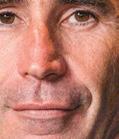
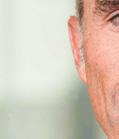

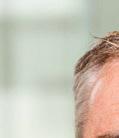
Just when regional business leaders think their customers cannot get any more demanding, those customers find a way. For example, in a recent Oracle study, 90 per cent of the respondents said they thought brands could “do more” to “deliver happiness”.

UAE businesses have always sought to get the customer experience just right, but up until recently, these e orts centred on keeping promises, delivering quality goods and services, catering to omnichannel engagement and making sure that
digital workflows were intuitive, responsive and always on. Now customers, jaded by the pandemic years, require even more.
At the heart of this challenge lies visibility. Customers may take to channels outside of corporate control to vent their frustrations, which is vital information lost to stakeholders. And even where the customer shares their concerns with the business, by way of complaint or query, engagement channels can o ten be split across roles, with one team in charge of email and others in charge of social, chat or voice.
SEE FAR, SEE WIDE
Brands must be able to see the customer experience as it happens to the customer. This is the only way to deliver rapid resolution of issues. The ultimate goal is first-contact resolution, of course, but mainly, customers need to feel heard and need to have confidence that their concern is being addressed. Digitisation would appear to answer many of these concerns, and it certainly goes a long way towards optimal service. Automation tools

gulfbusiness.com 18 January 2023 The Brief / Customer Service COMMENT
By combining human ingenuity and empathy with the efficiency and speed of artificial intelligence, businesses can get a step closer to perfect customer experience
ILLUSTRATION: GETTY IMAGES/FEODORA CHIOSEA
such as chatbots can handle the standard queries so that talent resources can be deployed to tackle more complex issues.

But there are indications that digitisation on its own may not be enough. A recent ServiceNow and ThoughtLab global survey found that investment in digital transformation can lead to deeper customer insights and subsequently to greater loyalty and retention, as well as better security and privacy. But across five industries and 1,000 polled executives, the survey found little reduction in complaints. Only around 25 per cent saw any improvement. The pattern that emerged was that silos of engagement and information were holding back organisations’ ability to head issues off at the pass.
Without having access to the required 360degree view of a customer’s engagement and purchasing history, it is difficult for a brand to infuse its engagements with the right level of personalisation.
THE HUMAN TOUCH
The lesson that emerges is one of an urgent need for human-centred technology. All the artificial intelligence (AI) and chatbots in the world are not going to deliver the personal touch that today’s consumers are seeking. But by combining human ingenuity and empathy with the efficiency and speed of AI, businesses can get a step closer to perfect customer experience (CX).
The implications for such an approach are farreaching for the human side of the equation. Not only can human agents react in real-time to actionable information gleaned by AI systems, but decision-makers can adjust policy, or even their approaches to making policy, by analysing insights at scale. In other words, one complaint can be handled through real-time insights, but a spike in complaints can be studied after the fact to determine a root cause, leading to valuable adjustments to longterm strategies.
AI platforms can also be teachers, guiding customer-facing agents to improve their performance and technique, both in real time and over time. Virtual assistants can keep employees on track in adhering to company guidelines, reminding them of how to greet the customer, how to end a call, and everything in between.

CONTINUOUS IMPROVEMENT
Other AI models can actively mine customer interactions for ideas on how to improve products, services and experiences. The forward-thinking businesses that leverage AI in this way will not wait for net promoter scores and other metrics to tell them how to act; they will move on realtime data and get enhanced experiences to market more quickly than their industry peers. Actions need not necessarily be tweaks to a product or service or even a digital platform. They could be as simple as new guidelines for agents on how to resolve a regularly occurring complaint.
The curious thing is that many enterprises already have the technology in place to implement human-centric solutions. They merely need to take the time and set aside the budget to discover ways in which their talent and their tools can come together to produce a new CX. Once the organisation is set up in a way that allows customer feedback and innovation to be a continuous cycle, customers will be brand ambassadors, and employees will be in it for the long haul. And this is a recipe for longevity.
gulfbusiness.com January 2023 19
“THE LESSON THAT EMERGES IS ONE OF AN URGENT NEED FOR HUMAN-CENTRED TECHNOLOGY. ALL THE ARTIFICIAL INTELLIGENCE (AI) AND CHATBOTS IN THE WORLD ARE NOT GOING TO DELIVER THE PERSONAL TOUCH THAT TODAY’S CONSUMERS ARE SEEKING. BUT BY COMBINING HUMAN INGENUITY AND EMPATHY WITH THE EFFICIENCY AND SPEED OF AI, BUSINESSES CAN GET A STEP CLOSER TO PERFECT CUSTOMER EXPERIENCE”
Mark Ackerman, area vice president – MEA, ServiceNow
IN A RECENT ORACLE STUDY, 90 PER CENT OF RESPONDENTS SAID THEY THOUGHT BRANDS COULD “DO MORE” TO “DELIVER HAPPINESS”
AI PLATFORMS CAN ALSO BE TEACHERS, GUIDING CUSTOMER-FACING AGENTS TO IMPROVE THEIR PERFORMANCE AND TECHNIQUE, BOTH IN REAL-TIME AND OVER TIME
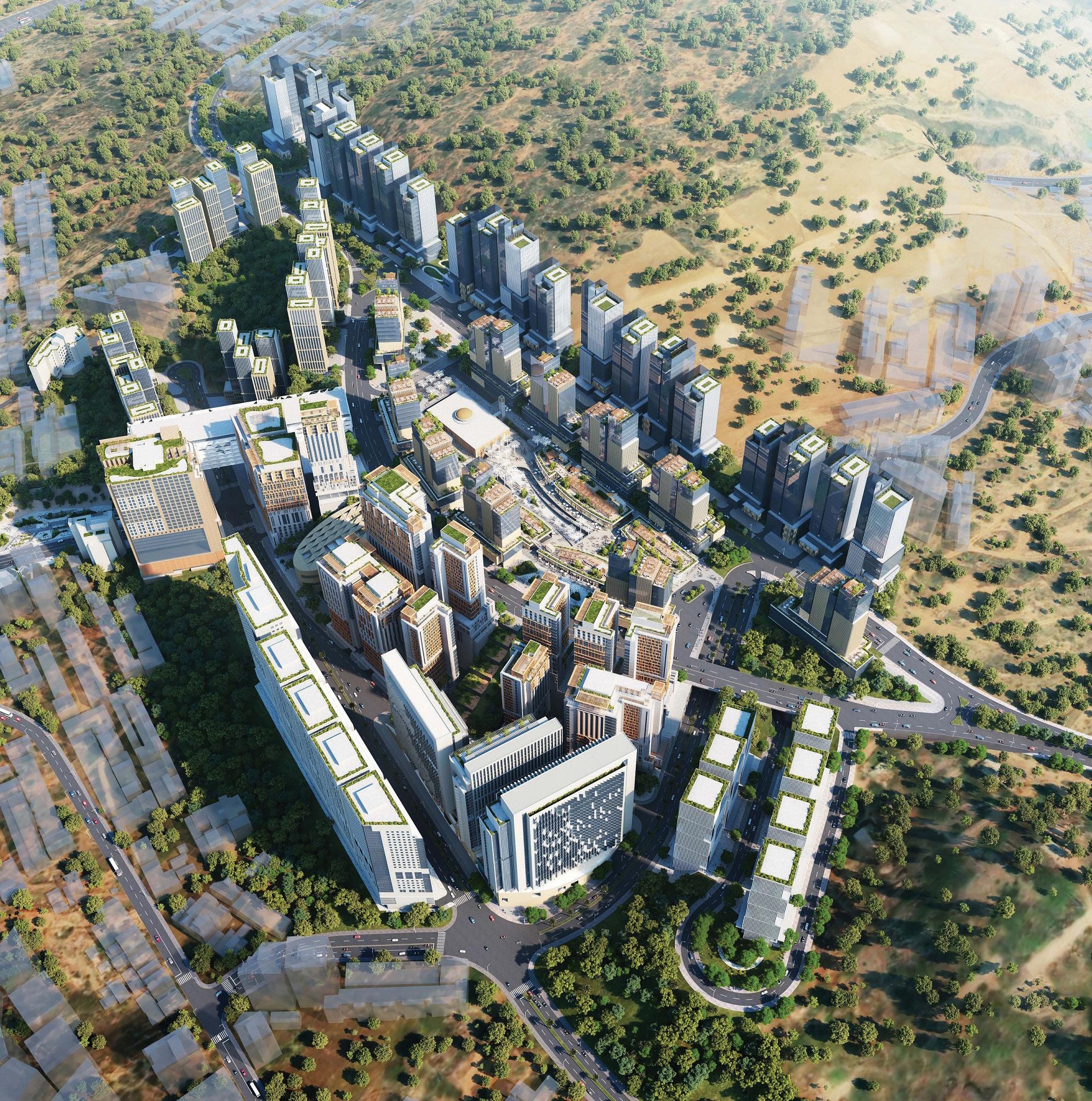
gulfbusiness.com 20 January 2023 CONSTRUCTION ENGINEER ABDULAZIZ BIN SALEH AL-ABOUDI, CEO OF THAKHER DEVELOPMENT COMPANY SHARES HOW IT IS SUPPORTING SAUDI ARABIA’S VISION 2030, ITS KEY MILESTONES AND THE COMPANY’S FUTURE PLANS INTERVIEW BUILDING ON A STRONG FOUNDATION
QTell us about your journey as the CEO of Thakher Development Company and the key milestones of the company.
I joined Thakher Development Company in 2014, which was formed out of a unique vision to create a project in Makkah that would become a benchmark in the sector.
Having worked in different industry sectors, and always eager to learn and succeed, I embraced the challenge and spent seven years leading the project while honing my knowledge of the local real estate sector. One of the company’s key milestones and perhaps my biggest challenge, was during the Covid-19 pandemic. However, the company survived the crisis gracefully, with no effects on the quality of work. We also limited the delays caused by pandemic and resulting [mobility] restrictions.
Tell us about the Thakher Makkah project and its different phases. Thakher Makkah is one of the largest real estate projects in Saudi Arabia, developed by the Thakher Development Company.
The company aims to contribute to the sustainable development of the holy city of Makkah and to become the preferred destination for visitors. The first phase of the Thakher Makkah project is almost complete, while the second phase is expected to be delivered in 2024, with more phases to follow.
15,000 DIRECT
Engineer Abdulaziz bin Saleh Al-Aboudi, CEO of Thakher Development Company
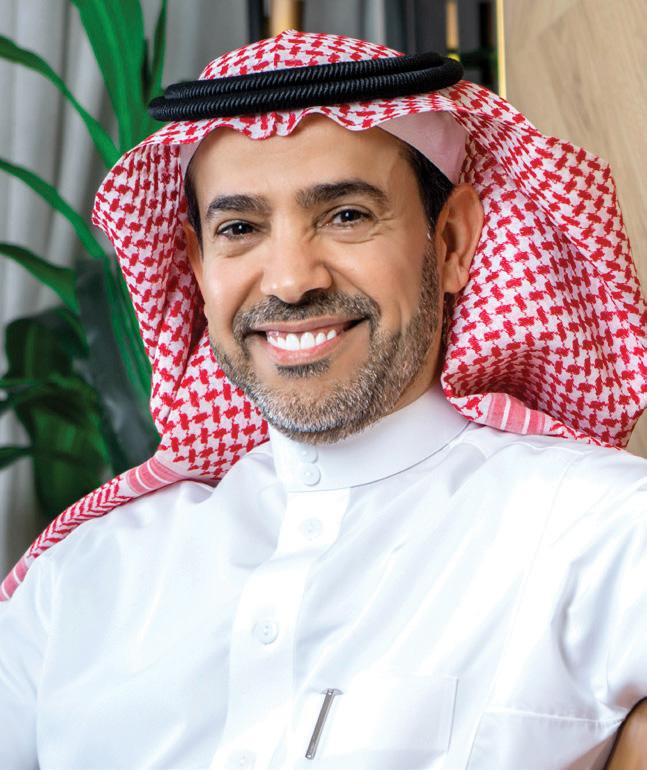
Thakher Makkah hosts pilgrims close to the Holy Mosque, with an approximate distance of one kilometre, providing various options and opportunities for visitors and investors. Spanning over an area of 320,000 square metres, the project’s various facilities make it one of the most comprehensive real estate initiatives in the city.
In close proximity to the Holy Mosque and a few kilometres away from the holy sites of Mina, Muzdalifah and Arafat, the project’s connections to the most important highways enable investors and visitors to reach the Holy Mosque within an hour from King Abdulaziz International Airport in Jeddah.
How is the company supporting Saudi Arabia’s Vision 2030?
The company estimates that upon the completion of all its development phases, the project will host more than 1.6 million visitors and pilgrims, underpinning the objectives of Vision 2030 to host 30 million Umrah performers and six million pilgrims by 2030. This will be achieved through its expansive landscape, variety of hospitality options (hotels, residential, commercial) and typical urban plan.
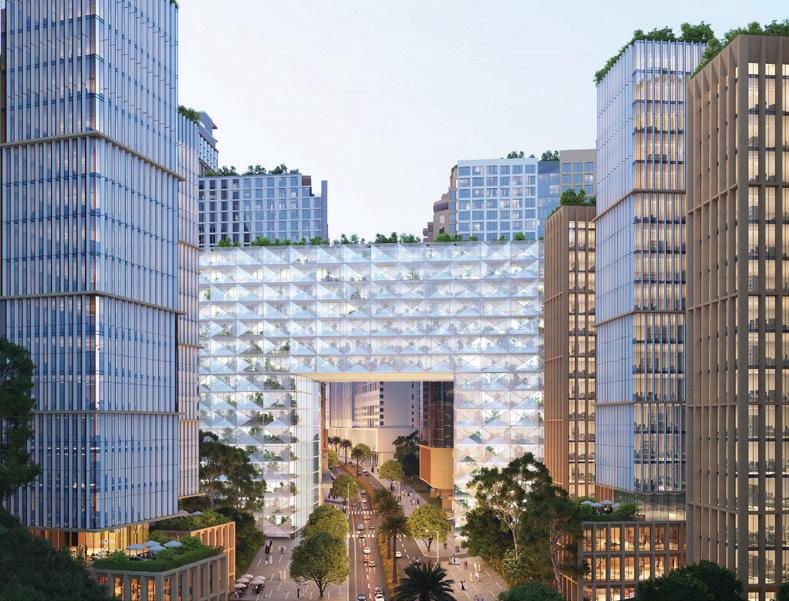
How is the company giving back to the community?
In collaboration with the Ministry of Health in Saudi Arabia, we organised a blood donation event in the kingdom in 2021, as part of the company’s corporate social responsibility programme.
We are also committed to participating in all voluntary and humanitarian activities in Saudi Arabia, which aim to consolidate the values of social solidarity and to spread awareness about the health benefits of donating blood. While business is important, human lives are of the ultimate importance.
The Thakher Makkah project aims to help raise the level of accommodation services in Makkah and create employment opportunities for its residents, by providing 15,000 direct and 18,000 indirect jobs. The project itself exceeds SAR26bn in total value, and will create an area of entertainment, shopping and children’s playgrounds, through open spaces and plazas. This would cater to cultural, art and entertainment activities that help enhance the overall quality of life.
Tell us how sustainability is being adopted across your operations.
It is very important for us at Thakher Makkah, to adopt standards that make our project environmentally friendly, for example in our project – we reused the rocks, that have been cut, in paving roads within the project and we use materials that fulfill energy saving standards, wastage rationing, and so on.
What are some of the company’s plans in the near future?
Our main objective now is focused on the completion of the second phase of the project by 2024. The business success is measured by our commitment in delivering the project according to the set timelines and by providing high-quality services and opportunities to investors and visitors.
Additionally, the company will lead and manage the development of Al Kidawh project as a master developer. This is in addition to the partnerships we have established with several finance entities, such as BIDAYA Home Finance and Saudi British Bank (SABB) to provide the best services and products to our customers.
gulfbusiness.com January 2023 21
THE THAKHER MAKKAH PROJECT AIMS TO HELP RAISE THE LEVEL OF ACCOMMODATION SERVICES IN MAKKAH AND CREATE EMPLOYMENT OPPORTUNITIES FOR ITS RESIDENTS, BY PROVIDING
AND 18,000 INDIRECT JOBS. THE PROJECT ITSELF EXCEEDS SAR26BN IN TOTAL VALUE”


































gulfbusiness.com 22 January 2023 The Brief / Infographics SOURCE: BCG ANALYSIS STAKEHOLDERS ARE BECOMING INCREASINGLY AWARE OF THE CHALLENGES THE PLANET FACES IF A CIRCULAR ECONOMY PARADIGM IS NOT ADOPTED Closing the loop 44% Buy materials that are regenerative or recycled 32% design products that are recyclable and reusable 47% collect and recycle products and materials at the end of their current life to close the loop 41% make product waste-free and resourcee cient as possible 42% use products responsibly, not excessively, to extend their lifetime and to reduce pollution 12% sell access (rather than ownership) leasing or sharing products THE CIRCULAR ECONOMY PROVIDES OPPORTUNITIES ALONG THE VALUE CYCLE THE LARGEST SHARE OF PLASTIC INVESTMENT, $7-10BN, IS REQUIRED FOR ADVANCING RECYCLING TECHNOLOGIES Raw materials Results from a joint study by World Business Council for Sustainable Development (WBCSD) and BCG on ~100 CE companies across industries RECYCLE / NEW INPUT DISTRIBUTE USE DESIGN PRODUCE COLLECT PROCESS PRODUCT BUSINESS MODEL Landfill diversion achieved by Sharjah’s Bee’ah, the waste management company 76% THE DUBAI GREEN BUILDING SYSTEM, A NEW SET OF REGULATIONS TO INCREASE RECYCLED CONTENT IN CONSTRUCTION PROJECTS, HAS RECENTLY BEEN ISSUED IN DUBAI THE ULTIMATE AMBITION FOR RECYCLING RATES FOR CONCRETE AND CEMENT SHOULD BE 95%, PLASTIC 75%, METAL 95%, AND BIO-WASTE 80% IN THE REGION
gulfbusiness.com January 2023 23 SOURCE: BOSTON CONSULTING GROUP REPORT - RECYCLING IN THE GCC: SECURING VALUABLE RESOURCES FOR A SUSTAINABLE FUTURE Many GCC cities are
investing to
waste
recycling
diversion
A CIRCULAR ECONOMY SETS NEW PRIORITIES FOR WASTE MANAGEMENT A VIEW ON WASTE GENERATION IN THE GCC LEAKAGE INTO THE ENVIRONMENT Prevention of use where possible (e.g., in plastics) Reduction of single-use materials Current waste management practices across the GCC region, however, present multiple barriers to achieving increased circularity targets Production of reusable products Design for long life and increased utilisation Recycling of materials Requires sorting technologies or separated collection systems Energy recovery through burning of waste Only favourable as a last resort Indefinite loss of raw material Worst-case scenario Needs to be invested in four key waste streams across the GCC region over the next 20 years to meet targets $60-85BN 01. PLASTICS $11-16bn 02. CONCRETE & CEMENT $3-4bn 03. METALS $11-15bn 04. BIOWASTE $35-50bn SCALE AND FRAGMENTATION DATA AVAILABILITY AND TRACKING REGULATION LANDFILL STANDARDS MATERIAL SORTING CIRCULAR DESIGN CONSUMER AWARENESS Saudi Arabia and the UAE account for approximately 75 per cent of 103-135 million tons waste generated annually in GCC Saudi Arabia 48-65 Mt GCC 105-135 million tons (Mt) 14-17 Mt 7-9 Mt 7-9 Mt 20-38 Mt 7-9 Mt Kuwait Bahrain Qatar UAE Oman PREVENTION AND REDUCTION REUSE, REPAIR, REFURBISHMENT, REMANUFACTURING RECYCLING INCINERATION LANDFILLING
already
improve their
management. In Saudi Arabia, the Public Investment Fund plans to invest $11bn by 2035 to increase
through the Saudi Investment Recycling Company. Overall, Saudi Arabia has earmarked $27 - 32bn for investment to meet its landfill
targets”
Argentina’s Lionel Messi raises the FIFA World Cup trophy in jubilation, marking Argentina’s victory over France in the FIFA World Cup Qatar 2022 final at Qatar’s Lusail Stadium on December 18, 2022

The Brief / Lightbox gulfbusiness.com 24 January 2023



gulfbusiness.com January 2023 25
PHOTO: MB MEDIA/GETTY IMAGES)


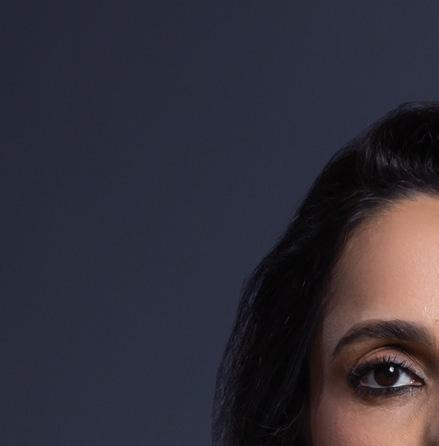
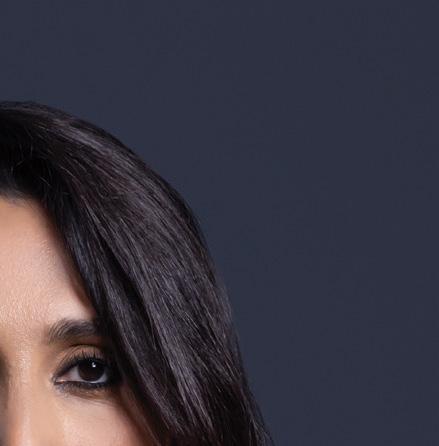




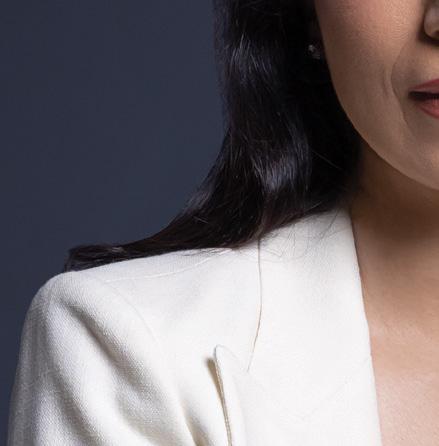
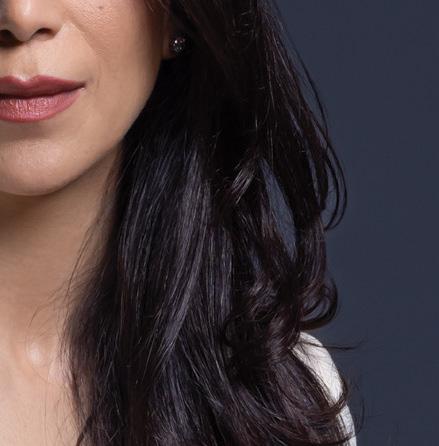



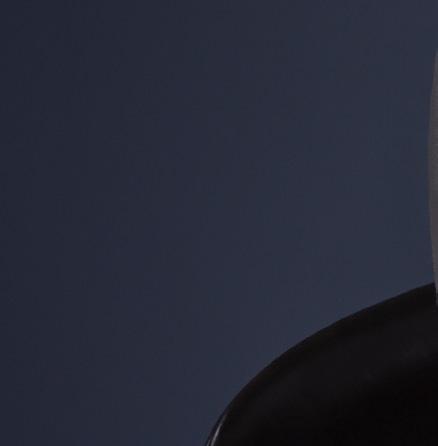
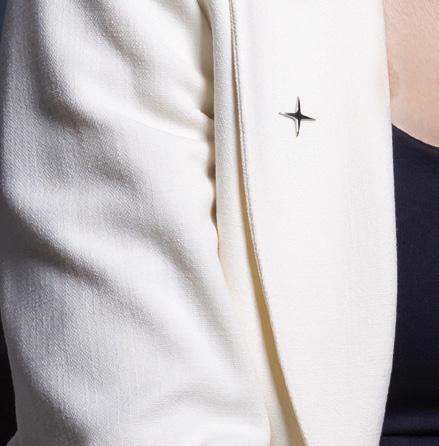











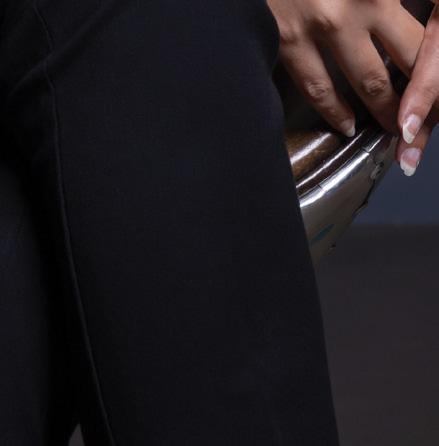



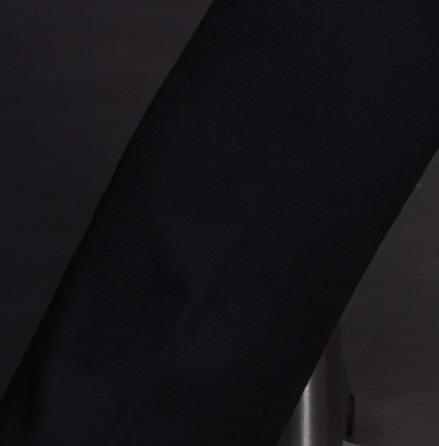
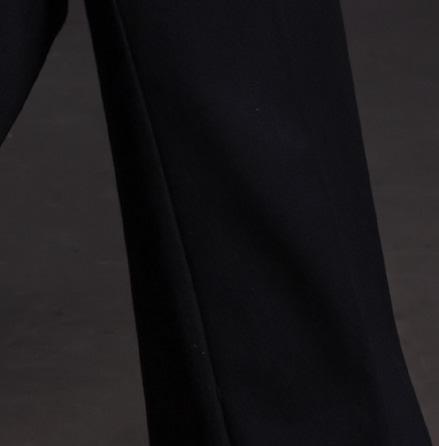


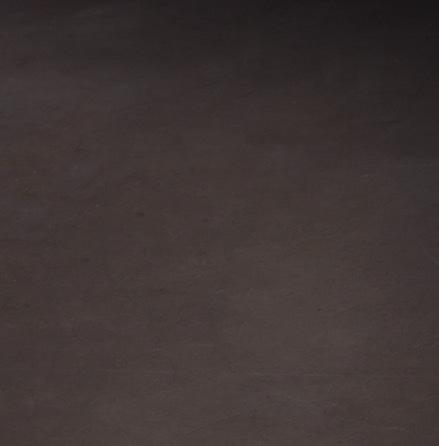
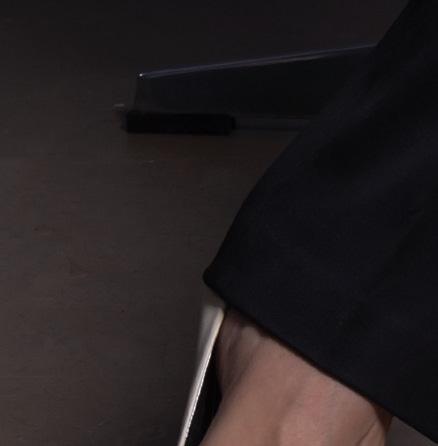
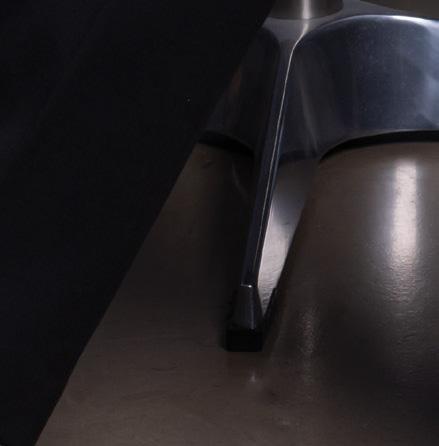
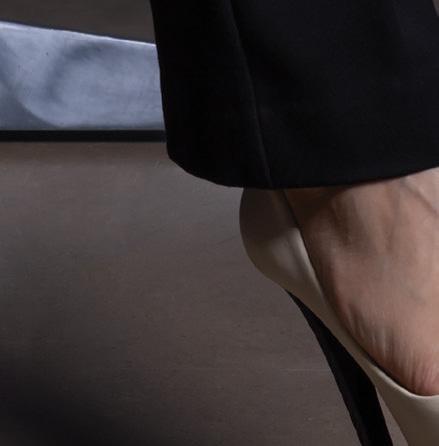
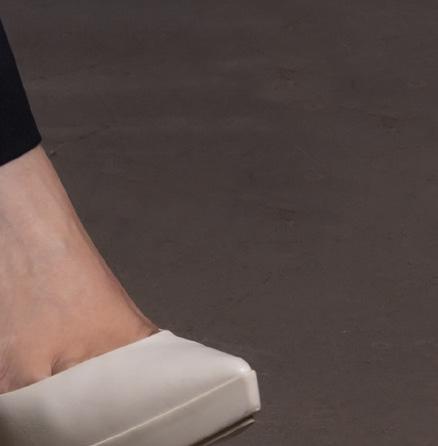





gulfbusiness.com 26 January 2023





gulfbusiness.com January 2023 27
LIFE AND LIFE TO YEARS
SHAISTA ASIF, GROUP CHIEF OPERATING OFFICE R OF PUREHEALTH, IS ON A MISSION TO TRANSFOR M THE UAE INTO THE LAND OF LONGEVITY
GIVING YEARS TO
COVER STORY WORDS: NEESHA SALIAN
Picture a world where people live long, fulfilling lives, performing to their full potential and enjoying good health. As utopian as it may seem to some, this is the world that Shaista Asif is committed to creating, and it’s no pipe dream.
Asif is determined to realise this vision of longevity and transform the existing approach to healthcare along the way. And it’s not just about business. “It’s about enhancing the quality of life and elevating the healthcare landscape,” says the group COO of PureHealth, considered the UAE’s largest integrated healthcare platform.
“Our primary objective and commitment is to increase humanity’s average life expectancy while improving their health-span. This can only be achieved by transforming the healthcare ecosystem and we are starting with the UAE,” she adds.
Asif’s determination and vision is supported by the might of a solid ecosystem that is powering this evolution. Since its inception in 2006, PureHealth has gone from strength to strength, expanding to include more than 25 hospitals, over 100 clinics, 160 plus labs, multiple diagnostic centres, pharmacies, as well as healthtech, insurance and procurement entities, creating a wellconnected healthcare value chain in Abu Dhabi and Northern Emirates. In doing so, the company has garnered influence and experience – all of which underscore its focus on innovation and disruption.
“We are curating a healthcare ecosystem, which is truly outcome-oriented and moves healthcare from a reactive service to a proactive, ‘always-on’ way of life,” she says passionately.
This is clearly demonstrated in the company’s acquisition and consolidation drive in the past few years. Today, its network includes Abu Dhabi Health Services Company (SEHA), National Health Insurance Company (DAMAN), The Medical Office – which oversees Sheikh Khalifa Hospitals and healthcare facilities established as part of the initiatives sanctioned by the UAE’s President Sheikh Mohamed bin Zayed Al Nahyan, Rafed, Pure Lab, Abu Dhabi Stem Cells Centre, One Health and The Life Corner, Abu Dhabi’s first holistic pharmacy.
Combining the strengths of clinical powerhouses with the UAE’s leading health insurer has enabled PureHealth to operate a scalable healthcare platform.
“Additionally, our patients benefit from access to greater clinical expertise and healthcare services across the spectrum of care,” says Asif, who believes that

gulfbusiness.com 28 January 2023
All our healthcare delivery businesses, along with our lab, insurance and procurement businesses are integrating, synergising, setting goals for themselves and defining their collective journeys to the cloud”
value-based healthcare can be best delivered through a vertically integrated healthcare platform wherein all the healthcare value chain capabilities come together to deliver against a common set of goals, improving health outcomes, maximising efficiency, and reducing the burden of care.
The company is also using technology to facilitate change – by digitising healthcare infrastructure. The collection and analysis of a patient’s real-time data in the future will enable real-time intervention and as a result, preventive care. To deliver this, PureHealth has set a strategy defining its transition to the cloud.

“This means that all our healthcare delivery businesses, along with our lab, insurance and procurement businesses are integrating, synergising, setting goals for themselves and defining their collective journeys to the cloud,” says the company’s group COO.
EMBRACING TECHNOLOGY
Circling back to longevity, technology will continue to play a significant role in supporting the company’s goals. Asif says, “We plan to deliver on the promise of longevity by bringing all this knowledge to bear into a data-driven technology platform that industrialises longevity and delivers it consistently and holistically.
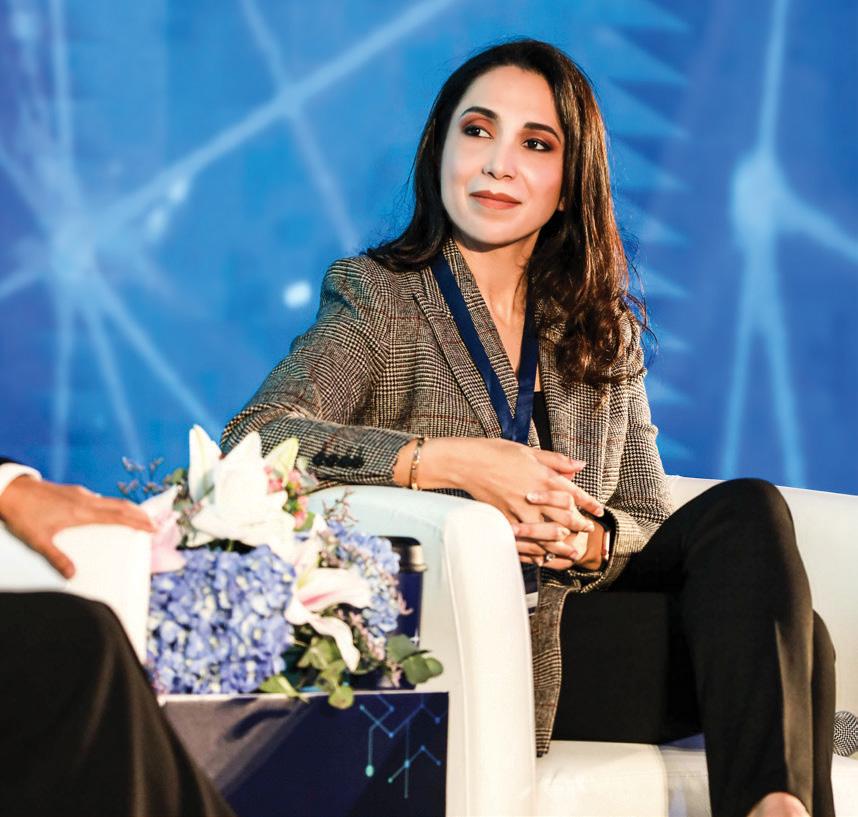
“Through our longevity platform, we will be able to engage with the entire population, to baseline their health and provide them with their digital twin. We will subsequently facilitate their journey to ‘101’ years through integrated care underpinned by the framework and the evolving science of longevity.
“With science and technology improving rapidly, there are already technologies and scientific breakthroughs in the pipeline to enhance the lifespan of people. By focusing on longevity, our North Star, we will ensure we are early adopters of these latest developments and enable it through our technologically advanced ecosystem.”
PARTNERING WITH DOH ABU DHABI
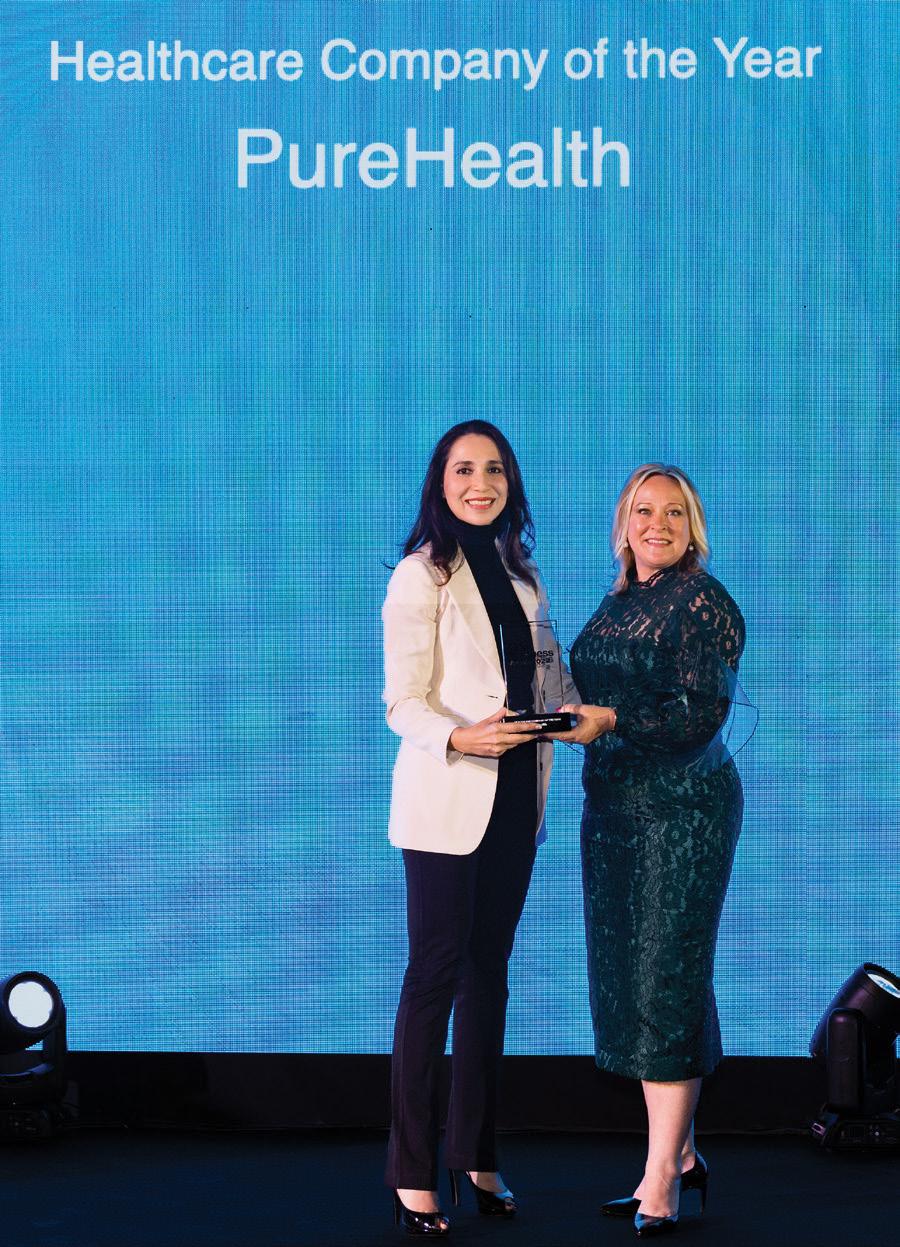


Another key focus for the company is enabling timely organ transplants, which has underpinned its alliance with Department of Health Abu Dhabi (DoH) . The entities have established a state-of-the-art unit to streamline the organ donation and transplant value chain and support timely and e cient interventions, streamlined processes, and most importantly, promote preventive care.
Asif explains: “Longevity is at the core of everything we do and enabling people to lead healthier and longer lives by ensuring timely organ transplants is a critical aspect of
PUREHEALTH HAS MORE THAN 25 HOSPITALS, OVER 100 CLINICS, MORE THAN 160 LABS, MULTIPLE DIAGNOSTIC CENTRES, PHARMACIES AND HEALTHTECH, INSURANCE AND PROCUREMENT ENTITIES
gulfbusiness.com January 2023 29
COVER STORY
COMBINING THE STRENGTHS OF CLINICAL POWERHOUSES WITH THE UAE’S LEADING HEALTH INSURER HAS ENABLED PUREHEALTH TO OPERATE A SCALABLE HEALTHCARE PLATFORM
that. Being a voluntary organ donor is one of the greatest gi ts you can give to humanity.

“One deceased organ donor can help save and extend up to eight lives. Two kidney donations can help two patients get o dialysis. However, globally still less than 10 per cent of organ transplants needs are met and there are thousands of people on the waiting lists desperately awaiting a timely organ donation as we speak.”
Alongside being a humanitarian issue, this situation puts immense burden on public health systems across the globe, stresses Asif, who is committed to making a di erence.
Under DoH’s Hayat (Gi t of Life) campaign, PureHealth is mobilising communities, partners and volunteers across its footprint to raise awareness on organ health and enhance the national donor pool.
“The more people are aware of organ health, means less people will make it to the waiting lists and the more people register as organ donors, those on the waiting lists will have a better chance at life.
“Last month, we kicked o awareness and donation camps, including one at ADNOC Marathon, and in a
matter of just three days, together with the community and volunteers raised the national organ donors pool from 6,300 to approximately 9,000 registered organ donors,” she explains.
SUPPORTING THE UAE’S HEALTHCARE GOALS
In addition to advancing the science of longevity, the company is also focused on establishing the UAE as the health capital of the world – a destination for people across the world seeking high quality, advanced valuebased healthcare.

Earlier this year, PureHealth joined the National In-Country Value (ICV) Program. This is part of the UAE’s ‘Projects of the 50’ initiatives, aimed at reinforcing the country as the preferred destination for industrial investments and a testbed for the latest technologies.
As part of this, the company has committed Dhs10bn in local procurement in line with the national industrial strategy, which supports the localisation of supply chains
gulfbusiness.com 30 January 2023
STILL LESS THAN 10 PER CENT OF
NEEDS ARE MET
ONE DECEASED ORGAN DONOR CAN HELP SAVE AND EXTEND UP TO EIGHT LIVES. GLOBALLY
ORGAN TRANSPLANTS
COVER STORY
science and technology
LOW HIGH 10 20 30 40 50 60 70 80 90 100 110 (Quality
HEALTH AGE 78 (UAE) Average course of life today 101 (UAE) Lift Enhance average quality of life Improve portion of life spent in good health Increase global life expectancy Square Extend
With
improving
rapidly, there are already technologies and scientific breakthroughs in the pipeline to enhance the lifespan of people”
of Life)
by redirecting higher portions of public spending into the local economy.

PureHealth is participating in initiatives with the Ministry of Industry and Advanced Technology (MoIAT) to stimulate local industrial capabilities, capitalise on opportunities within the healthcare sector and conduct training programmes to upskill the national workforce.
“With artificial intelligence, biotech, medtech, genetic engineering and robotics at the core of 4IR, it is imperative that we support the UAE to capitalise on industry 4.0. This will not only support our local economy, but also build resilience within the healthcare sector where we will rely less on imports as we build a strong local healthcare hub,” says Asif.
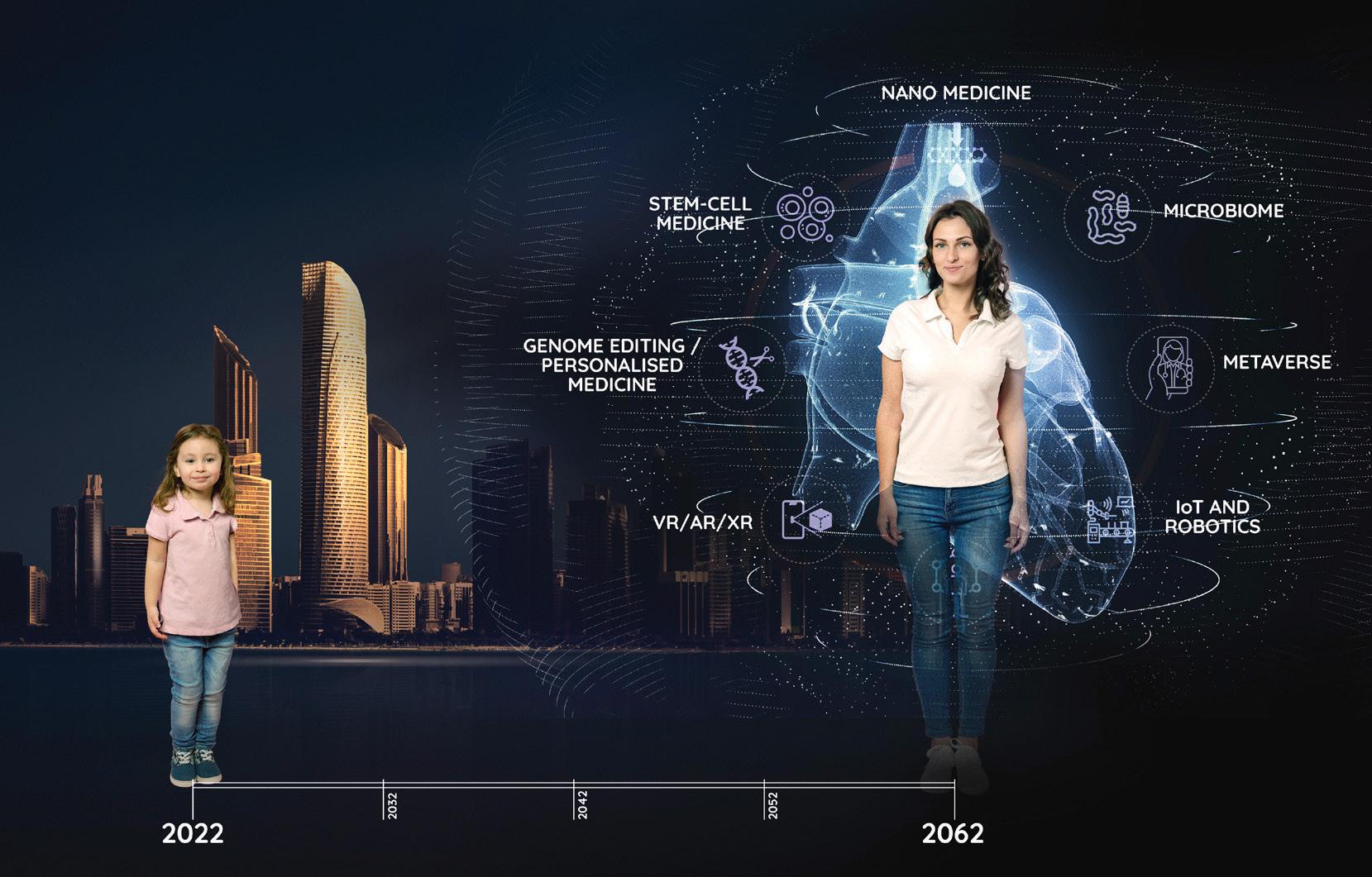
Supporting the UAE is not limited to the manufacturing sector. PureHealth, in collaboration with the Presidential Court, also launched the Baader Command Centre in Umm Al Quwain, which manages emergencies, crises, and disasters for all ‘Presidential Initiatives’ hospitals in the Northern Emirates.

The next phase of this project is to coordinate e orts with all the healthcare regulators in the country and to develop an integrated network of command centres for disaster, emergency, and crisis management.
The centres are to be equipped with modern technologies to detect, respond to and deal with emergencies and
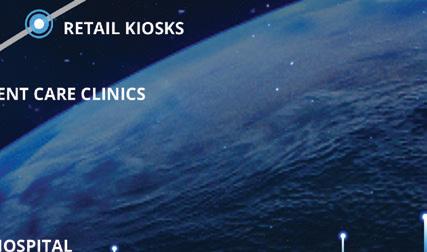
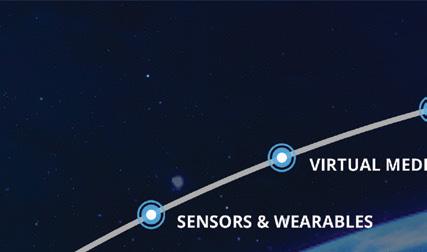
health crises, a ter linking it to the main command centre of the Ministry of Health and Prevention.
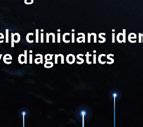

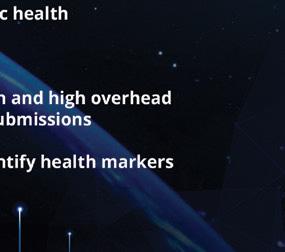
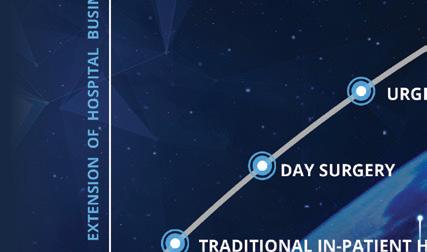
Asif says, “Being the largest healthcare network in the country, we have a fiduciary responsibility to ensure we act with speed and agility in times of emergency and crises. The company has a dedicated team managing such operations at a group level and the team is also responsible for ensuring continuous monitoring of our assets, supplies and protocols to ensure as a group we are ready to support the UAE in situations of unforeseen circumstances.”
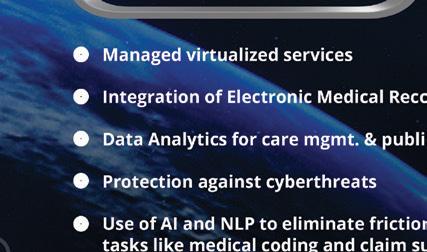
PROTECTING THE PLANET



Climate action is another critical area that Asif is passionate about. She says, “At PureHealth, we talk about the longevity of humankind. But, in equal measure, we all need to work towards the longevity of our planet. We only have one planet and 10 per cent of the global GDP is represented by the healthcare sector, so we need to take climate change seriously, and play our part, in order to leave our next generations with a planet, that is livable and sustainable.”
We look forward to seeing how Asif and PureHealth incorporate climate action into their plans to create a sustainable, healthy world.


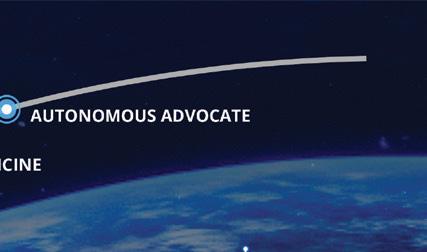

gulfbusiness.com January 2023 31
“WITH ARTIFICIAL INTELLIGENCE, BIOTECH, MEDTECH, GENETIC ENGINEERING AND ROBOTICS AT THE CORE OF 4IR, IT IS IMPERATIVE THAT WE SUPPORT THE UAE TO CAPITALISE ON INDUSTRY 4.0”
PUREHEALTH HAS COMMITTED DHS10BN IN LOCAL PROCUREMENT IN LINE WITH THE UAE’S INDUSTRIAL STRATEGY
AIX Investment Group enters Formula 2

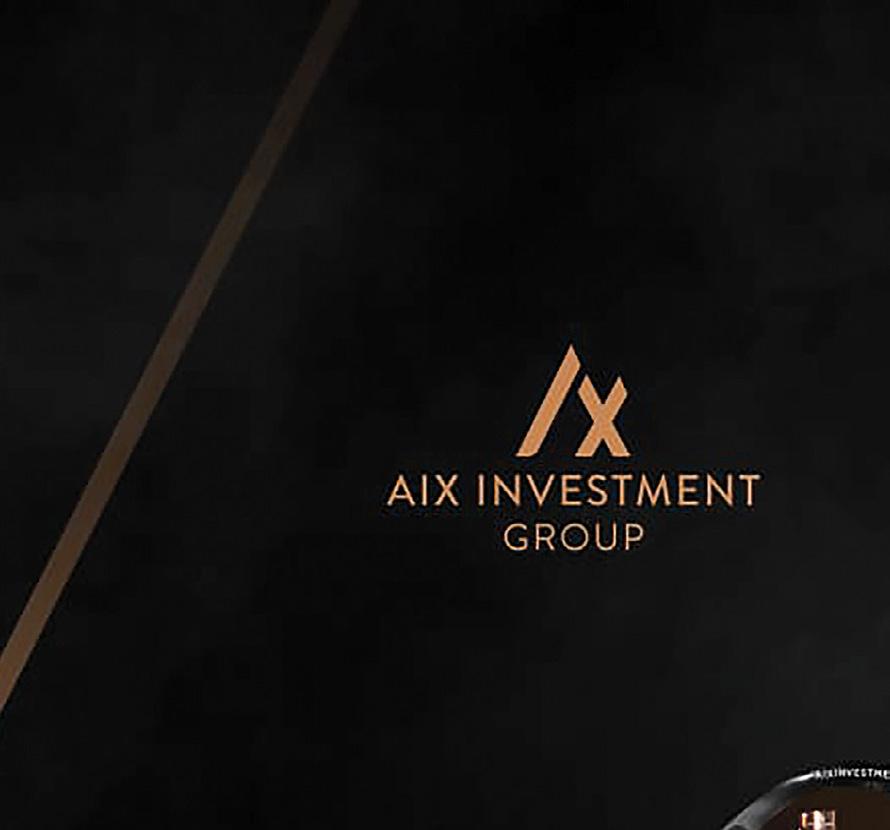
3 campaign, earning a points-scoring finish for Carlin in the Spa-Francorchamps Sprint Race.
In line with its commitment to support sport and upcoming talent, Dubaibased global financial advisory firm
AIX Investment Group has announced a new collaboration with Brad Benavides of PHM Racing by Charouz.

The firm will be his primary sponsor for the 2023 season, supporting him as he debuts and competes across the globe in top Formula 2 (F2) races.
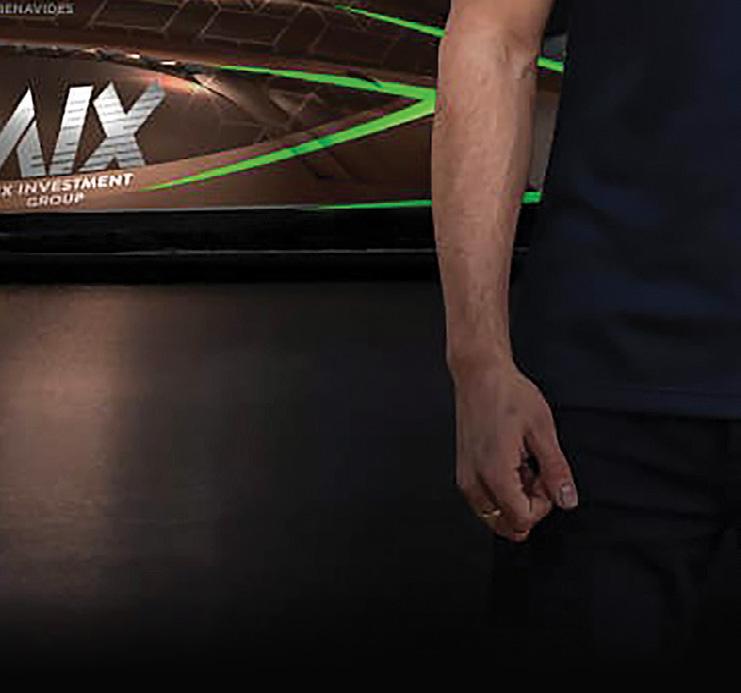

The alliance is a milestone for the company, as its first global motorsport collaboration, and also for Benavides to receive the backing of a successful organisation as he debuts his Formula 2 journey.
ON THE FAST TRACK
Benavides, an American-Spanish racer, is stepping up to F2 after his rookie Formula
The 21-year-old has experience competing in Formula Renault Eurocup, the Formula Regional European Championship and the Euroformula Open Championship, with his best finish being at the 13th place in the 2021 Euroformula Standings.
Benavides is no stranger to motorsport and has been racing since the age of 12. He competed and moved up the categories in single-seaters since 2018.
In 2019, he participated in the Renault Formula 3 European Championship with the new team assembled by Formula 1
The Dubai-based financial firm has signed on as the sponsor of Brad Benavides of PHM Racing by Charouz
driver Fernando Alonso. Benavides is ambitious and fights indefatigably to be at the top in all his endeavours. He is talented and determined to build a successful career in motorsport.
NEW AVENUES
The partnership is seen as a gateway to new opportunities for both parties, which not only includes support for a young talent, but also shines the spotlight on the investment firm’s long-term goals.
The firm, which has consistently introduced innovative products and solutions for active wealth planning, is known for taking effective measures to generate above market return on investments for its clients.
The firm has also had many notable developments in 2022, including the
introduction of new products, promising investments and expansion to new offices.
KICKING OFF THE PARTNERSHIP
The launch of the partnership was held at AIX Investment Group’s office, in Burj Khalifa on the terrace of the firm’s office on the 144th floor.
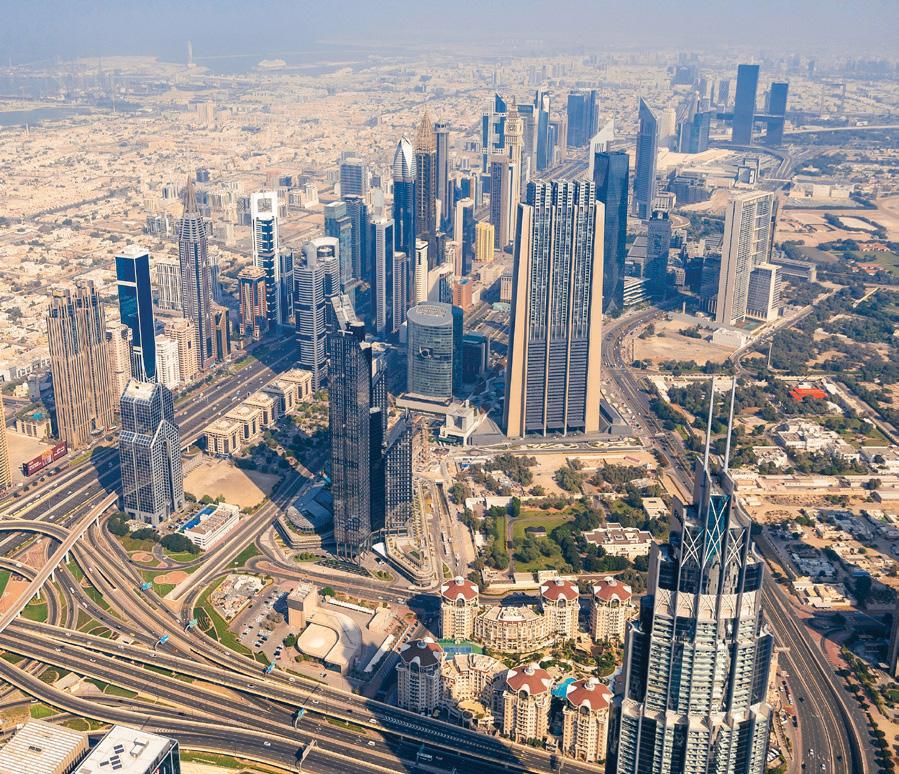
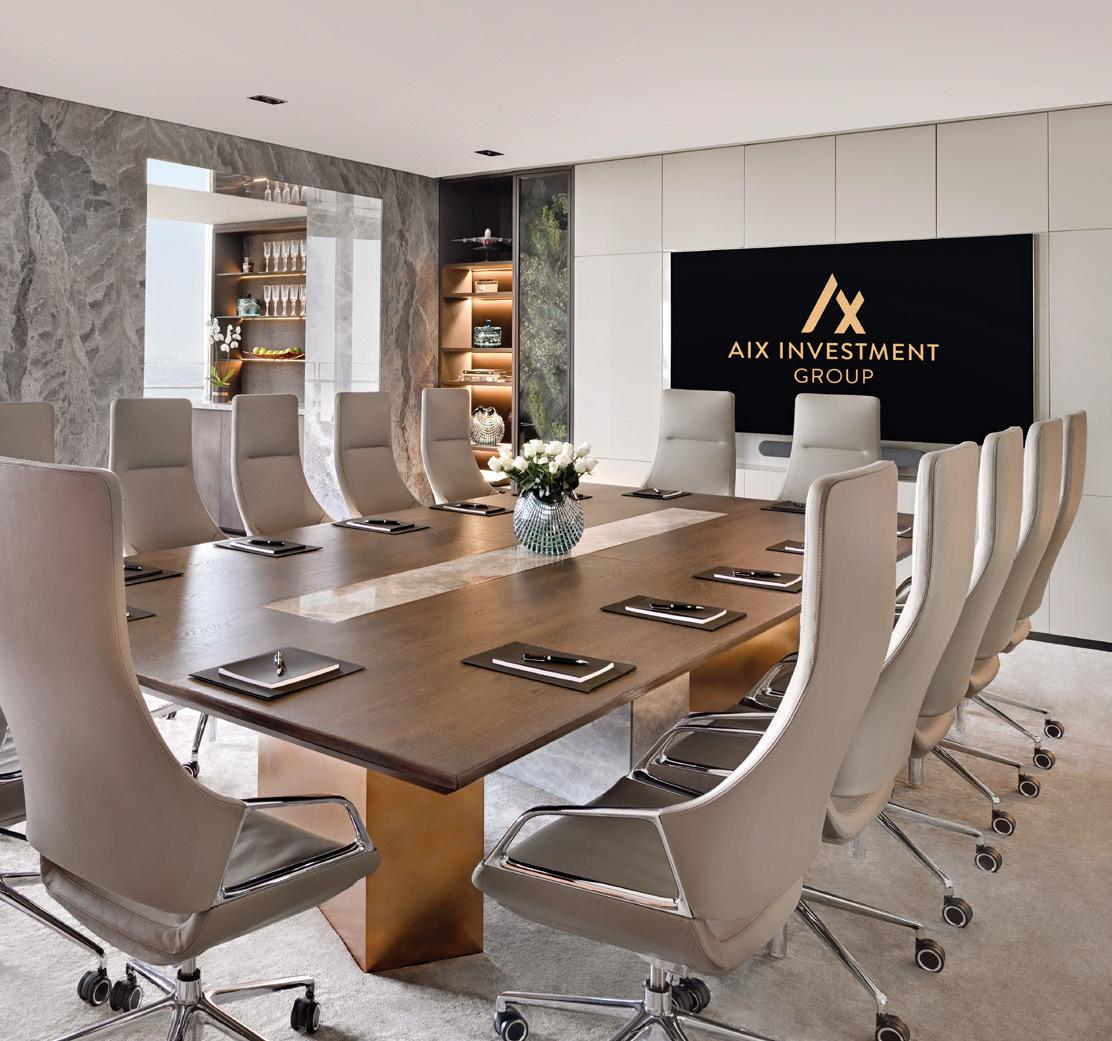
Team AIX and the racing car driver’s representatives inked the agreement at the event, revealing Benavides’ helmet emblazoned with the company’s logo.
The partnership was also made official on November 20 last year, with an announcement on the official Formula 2 Championship website.
THE CHAMPIONSHIP
This year, the Formula 2 championship will kick off in Sakhir, Bahrain on March 3, and
move to Saudi Arabia, Melbourne’s Albert Park, Baku, Imola in Italy, the prestigious Monaco track, Barcelona, Spielberg in Austria, the UK’s Silverstone, Budapest and Spa-Francorchamps in Belgium, all before the summer break. The next stop is Zandvoort in the Netherlands.
The season will wrap up alongside the Formula 1 season at the Yas Marina Circuit, Abu Dhabi towards the end of November.
PHM Racing and Charouz Racing System also made recent announcements that they will be operating as Charouz Racing System this year. They stated that the team will race under PHM Racing by Charouz in both the FIA Formula 2 and FIA Formula 3 Championship.
OTHER SPONSORSHIPS
AIX Investment Group is also the main sponsor of the Fursan Hispania FC, a football club led by Michel Salgado, a former Real Madrid football player. The club offers children in the UAE the opportunity to develop their skills through professional training.
In 2021, the firm signed a partnership with the football legend Iker Casillas as the main sponsor of his academy, Iker Casillas Academy Dubai. It also sponsored the La Liga Santander team RC Celta. The partnerships extend well beyond the sport, with an ongoing commitment to support talent and ambition.
The alliance is a milestone for the company, as its first global motorsport collaboration, and also for Benavides to receive the backing of a successful organisation as he debuts his Formula 2 journey
BENAVIDES IS NO STRANGER TO MOTORSPORT AND HAS BEEN RACING
BRAND VIEW / FEATURE
SINCE THE AGE OF 12. HE COMPETED AND MOVED UP THE CATEGORIES IN SINGLE-SEATERS SINCE 2018
PIONEERING INNOVATION
THE GULF COOPERATION COUNCIL IS UNDERGOING A DIGITAL PARADIGM SHIFT AND THE COUNTRIES IN THE REGION ARE LOOKING AT NEW TECHNOLOGIES AND DIGITAL TRANSFORMATION AS WAYS TO DIVERSIFY THEIR ECONOMIES
WORDS: DIVSHA BHAT
Digitalisation has swept the globe as the precursor to the fourth industrial revolution, increasing business efficiency and cutting operational costs. Organisations have integrated digital transformation into operational areas as information, and communications technology permeates daily life.
International Data Corporation (IDC) reports that global spending on digital transformation will reach $1.8tn in 2022, an increase of 17.6 per cent over 2021. Furthermore, over






2021-2025, this spending growth is expected to continue at a 16.6 per cent compound annual growth rate (CAGR).
In the Middle East, Turkey, and Africa, digital transformation investments are estimated to double across the 2020-25 period, with spending forecast to reach $58bn in 2025.
Meanwhile, the GCC is undergoing a digital paradigm shift. The countries in the region are looking at new technologies and digital transformation as ways to diversify their economies.
gulfbusiness.com 34 January 2023
200,000 ROBOTS
OVER THE NEXT 10 YEARS
UNITED ARAB EMIRATES
It is evident from the recent success stories emerging in the UAE that technology is entering a new era here, and the country is leading the way.
Last year, Sheikh Mohammed bin Rashid Al Maktoum, Vice President and Prime Minister of the UAE and Ruler of Dubai, issued the Dubai Virtual Asset Regulation Law to establish a legal framework to protect investors and implement international standards for virtual assets (VA) industry governance.
Sandbox’. It is the world’s first regulator to debut in the metaverse.
Meanwhile, Dubai also announced a comprehensive robotics and automation programme to support the development of various vital and future-oriented sectors in the emirate.
The ‘Dubai Robotics and Automation (R&A) Programme’ aims to boost the development, testing and adoption of R&A and is based on three pillars – governance, support for research and development and adoption and utilisation of technologies.

VARA has established a metaverse HQ in the virtual world, ‘The Sandbox’. It is the world’s first regulator to debut in the metaverse
Except for the Dubai International Financial Centre (DIFC), the law applies throughout the emirate, including special development and free zones.
By way of the law, a Dubai Virtual Asset Regulatory Authority (VARA) was also established. It is responsible for licensing and regulating the sector on Dubai’s mainland and free zones (excluding DIFC). Additionally, VARA has established a metaverse HQ in the virtual world, ‘The
The initiative will provide 200,000 robots over the next 10 years to improve productivity and efficiency in various industries, including services, logistics, and manufacturing.
Positioning itself as a frontrunner in emerging technologies, Dubai launched its metaverse strategy. Over the next five years, Dubai Metaverse Strategy is expected to contribute Dhs4bn to the national economy while creating 40,000 virtual jobs.


Features / Technology
THE ‘DUBAI ROBOTICS AND AUTOMATION (R&A) PROGRAMME’ WILL PROVIDE
gulfbusiness.com January 2023 35
SAUDI ARABIA
There has been a dramatic increase in digital transformation projects over the last couple of years due to Saudi Arabia’s Vision 2030.
In an announcement earlier this year, Saudi Arabia’s Crown Prince Mohammed bin Salman bin Abdulaziz Al Saud, announced the design of a new zerocarbon city, ‘The Line’ in Neom.
The design of ‘The Line’ shows how futuristic urban communities will be free from roads, cars and emissions, run on renewable energy, prioritise people’s health and contribute to preserving 95 per cent of Neom’s land. The city’s design will be completely digitised, and the construction will be industrialised to a large degree by using advanced construction technologies and manufacturing processes.
Saudi Crown Prince Mohammed bin Salman bin Abdulaziz Al Saud.
Among the strategy’s objectives is to make the kingdom the global hub for this sector by 2030, contributing to Vision 2030 goals to diversify the economy and create new jobs in several sectors.
Earlier this year, Saudi’s sovereign wealth fund took a 5.01 per cent stake in Nintendo, marking its third investment in a Japanese games company.
On the other hand, the Royal Commission for AlUla entered the metaverse with an immersive 3D model of Hegra’s Tomb of Lihyan, son of Kuza, a UNESCO World Heritage site.
Created in the vast digital landscape of Decentraland, the AlUla monument will be accessible to virtual tourists where they can take a 360degree tour of Hegra’s tomb.
Neom has announced a $175m Series
E investment in Volocopter, a German aircraft manufacturer
Meanwhile, Neom has announced a $175m Series E investment in Volocopter, a German aircraft manufacturer. The investment builds on the Neom–Volocopter joint venture (JV) launched in December 2021. This JV will offer electric air taxi services in Neom to connect areas such as The Line, Oxagon, and Trojena together.
Additionally, there is significant growth in the gaming and esports industries in the kingdom at the moment. This growth has also been reflected in the government’s announcement of a National Gaming and Esports Strategy, which was unveiled by
QATAR
MCIT, Qatar Free Zones Authority and Google Cloud expanded their partnership last year
Embracing the opportunities and challenges of the fourth industrial revolution, Qatar’s National Vision 2030 focuses on digital transformation. According to data analytics company Global Data, the state’s ICT spending is expected to reach an estimated $9bn by 2024, at a CAGR of 9.2 per cent. In addition, the government is investing $200bn in technology and attracting foreign investment and talent.
Qatar is enabling the digital ecosystem by leveraging technology tools such as cloud computing and artificial intelligence (AI). For instance, in partnership with Microsoft, Qatar’s Ministry of Communications and Information Technology (MCIT) announced the launch of the country’s first hyper-scale cloud data centre region.
Regardless of size or industry, businesses can now host cloud workloads in these data centres. Microsoft Azure enables customers to develop AI, data and analytics, internet-of-things (IoT) and hybrid applications with advanced digital security.
Similarly, MCIT, Qatar Free Zones Authority and Google Cloud expanded their partnership last year to include a new Centre of Excellence training facility and Google office in Qatar.
The kingdom has also given utmost importance to cybersecurity. Saudi’s National Cybersecurity Authority has launched the ‘CyberIC’ programme for the wider development of the cybersecurity sector.
It is designed to develop the skills and knowledge of more than 10,000 Saudis. As part of the programme, over 60 national cybersecurity startups will be established to help increase the localisation of cybersecurity technologies in the kingdom.
In terms of connectivity, the country has the world’s first commercially available 5G network, which has enabled businesses to accelerate the digitalisation of their operations.

Furthermore, to host the FIFA World Cup, Qatar upgraded its digital infrastructure – AI was being used at the core of its operations to monitor spectators, forecast crowd swells and regulate stadium temperatures.
A total of 2,000 security cameras were used throughout the eight World Cup stadiums to monitor images that were displayed on 200,000 integrated units at the Aspire Command and Control Center. In addition, the centre could apply a threshold and count the number of individuals in a space using AI.
Local media also reported that experts could identify bottlenecks, monitor entry gates, and guarantee smooth traffic flow if more than 100 people were to gather in one area.
The Lusail Stadium, the 88,966-capacity arena, had facial recognition technology allowing the crew to zoom in on fans. The centre also housed experts in cybersecurity, counterterrorism and transportation.
Features / Technology
gulfbusiness.com 36 January 2023
OMAN
Equinix, the digital infrastructure company, announced plans to build a data centre in Salalah
Throughout the past few years, the Sultanate of Oman has embarked on an ambitious journey aimed at transforming the country by empowering its people through the e.Oman initiative, which has opened up thousands of job opportunities for Omanis in the IT sector within the digital economy.
In line with the government’s vision, private sectors are also supporting the industry’s growth by staying a step ahead of technology adoption. For example, logistics provider Aramex recently concluded the pilot phase of its drone delivery programme in Muscat. The test flights were conducted in association with US-based UVL Robotics, a drone technology provider.
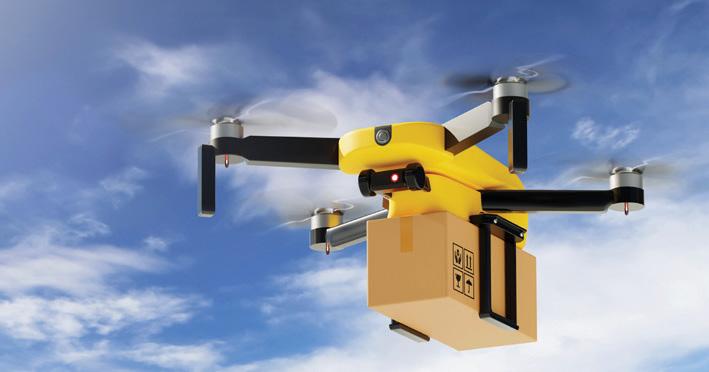
BAHRAIN
STC Bahrain has announced plans to build a 5.5G network in partnership with Huawei
The concept of digital transformation is a key component of Bahrain’s Economic Vision 2030, a national development plan focusing on sustainability, competitiveness and fairness. Furthermore, the government’s Digital Government Strategy 2022 outlines the commitment to transforming its services through emerging technologies, enhancing the lives of citizens and residents.
In pursuit of these significant goals, the kingdom has adopted a wide range of digital tools. As a result, Bahrain has witnessed a surge in economic growth and employment opportunities.
Meanwhile, during the first three quarters of 2022, Bahrain’s Economic Development Board received $98m in direct investments from 14 international firms. These
KUWAIT
The ICT market in Kuwait was valued at $20.61bn in 2021 and is estimated to grow to $30.58bn by 2026
The New Kuwait 2035 vision goes beyond infrastructure mega-projects to challenge Kuwaitis, especially the youth, to boost their role in the economy and society. Laying out long-term development plans for the country, ICT rightfully sits at the heart of the government’s strategy for the New Kuwait plan.
The Kuwaiti government has prioritised the digital transformation of the public and private sectors. According to Global Data, the ICT market in Kuwait was valued at $20.61bn in 2021 and is estimated to grow at a CAGR of 8.2 per cent to reach a value of $30.58bn by 2026. The expected growth drivers for the country’s digital transformation are
It is the first phase of a multi-phase programme by which the logistics provider plans to transition its fleet to emission-free electric and hydrogen fuel cell vehicles. In addition, the pilot tested an autonomous drone to deliver packages safely and efficiently in Muscat, regardless of terrain, distance or weather conditions.
Meanwhile, earlier this year, Equinix, the digital infrastructure company, announced plans to build a data centre in Salalah. The data centre is being built in partnership with Omantel, the regional wholesale carrier. The new site, SN1, will be the second carrier-neutral data centre built in Oman after MC1 in Muscat. Once open, SN1 will become a key interconnectivity point for traffic flows between Asia, Europe, and Africa.
investments are expected to create over 770 jobs to support the kingdom’s Economic Recovery Plan objectives.
Regarding connectivity, STC Bahrain has announced plans to build a 5.5G network in partnership with Huawei, making it the first company in the Middle East to adopt this technology. The announcement is part of stc Bahrain’s strategy to develop the infrastructure for the next generation of 5G (5.5G) within three years.
A 5.5G network is an improvement over 5G, containing features that will transform telecommunications.
The network will also create opportunities and pave the way to use the latest AI. It will improve global data storage capabilities, empowering green technology, nurturing the environment and reducing energy consumption.
mobility, cloud computing and data analytics. Meanwhile, the telecom landscape in Kuwait is widespread and robust. stc was the first operator in Kuwait to launch an end-toend 5G SA network based on a cloud-native core, while Ooredoo is hailed as the fastest operator in 2021. Additionally, Zain completed the first live trial in the region of open and virtual radio access networks in Kuwait. In June 2022, Virgin Mobile Kuwait became the first mobile virtual network operator to enter the market.
Analysys Mason estimates that 5G will drive a cumulative increase of more than $1bn in Kuwait’s GDP between 2018–2025 and will create almost 25,000 jobs cumulatively by the end of the period.
gulfbusiness.com January 2023 37
RESONATING WORDS
FEMALE TRAILBLAZERS ON INNOVATION, INSPIRATION AND CHALLENGING THE STATUS QUO
TRIXIE LOHMIRMAND
they o ten have a smaller peer professional or social network, or they feel more inhibited, hence limiting access to opportunities. Fortunately, there are generous meritocratic-biased people out there who will bet on you.
For me, the year 2022, was one of making sense of the wild swings in the tech space, from stock slides and layo s to new realities’ craze, figuring out what still excites and matters to businesses. Definitely, a year of strategic manoeuvring and purpose.
For Dubai World Trade Centres’ tech events, in 2022, we welcomed a record number of attendees from 176 countries to Gitex Global and North Star Dubai. Meanwhile, Gisec, the cybersecurity event, extended its leadership with its largest edition ever.
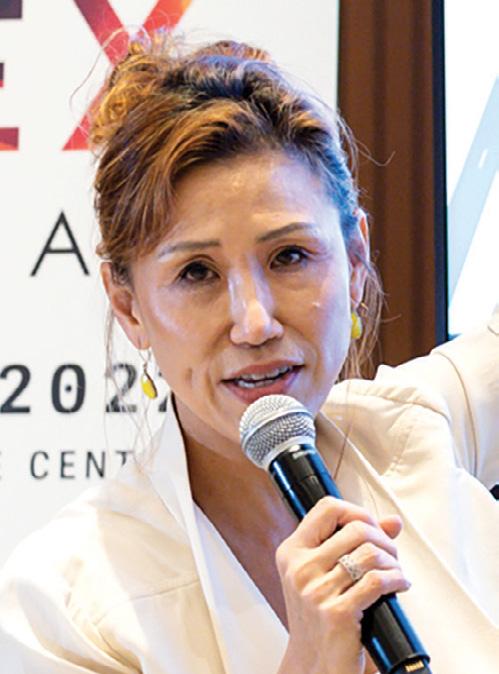
For the industry, it was a year of focus on creating new generational tech, while recalibrating growth and value propositions against international trading forces, seeking out tech talents and exploring sustainable ways to build digital green businesses.
This year, we are focused on supporting companies in the region to accelerate their transitionary journey into green digital businesses through decarbonisation e orts and green tech solutions. With COP28 to be hosted in the UAE, there is an impetus to rally industries on this environment conservation mission.
However, as a woman leader, I feel the challenge of bias extends beyond one’s demographic attribute. Women executives may not assert themselves in the same way as their male counterparts and
In a male-dominated tech industry, vital steps should be taken to attract more women. Gaming and STEM-focused fun clubs have an influential role to play in attracting girls into tech-related curriculums. International exchange programmes are a great source of cross-cultural inspiration. Coaching and mentorships should be instituted early in schools to engender and develop interests in this field. Companies and societies should develop initiatives to connect women and promote upskilling to support them in pursuing STEM-oriented careers.
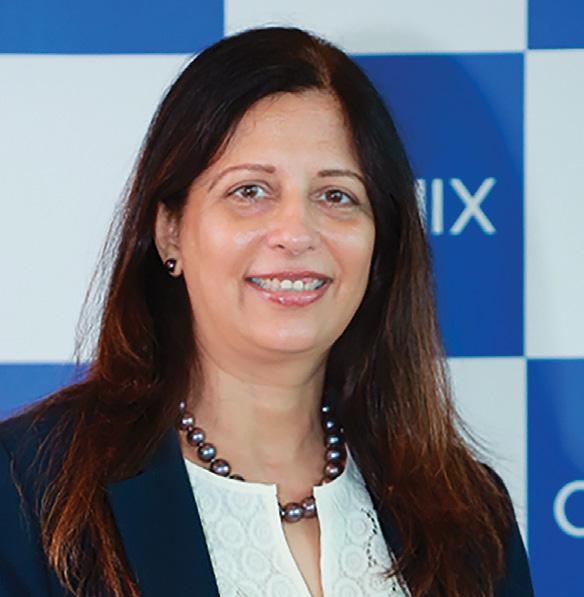
While the technical skills are core, for women to succeed as leaders in this male-centric industry requires leadership, people and business management competencies. This can be generated through the institutionalised e orts of companies to provide on-the-job experimentation of opportunities, a great peer-support corporate and social network, coaching, creative job roles and decision-making empowerment. Explore every opportunity and work hard on them. Women are scrutinised much more and unfortunately judgements are sometimes tougher and less forgiving. You are the sum total of all the decisions you’ve ever made. So, make every decision count.
As the world slowly but steadily emerged from the grip of the Covid-19 pandemic, we, at Omnix, have witnessed rapid progress in multiple technologies – computing power, smarter devices, quantum computing, extended reality, artificial intelligence (AI), machine learning and 3D printing, to name a few.
Seeding in new technologies, focusing on vertical industry segments and geo expansion are among our top priorities. For example, AI is set to advance in a big way in 2023.
In another emerging trend, drones will soon be able to fly for everyone. Currently, they are used primarily by professional photographers
gulfbusiness.com 38 January 2023 FEATURES
Executive vice president – Events Management, Dubai World Trade Centre
SIMRAN BAGGA Vice president, Omnix Engineering and Foundation Technologies
and videographers. However, by 2023, drones will be a ordable enough for every person to own. And, thanks to improvements in aerial technology, they’ll be able to fly for hours without needing a recharge.
As fas as a woman’s journey to attain a leadership role is concerned, it is filled with
challenges. A key hurdle is being treated unequally compared to her male counterparts – women are o ten placed on an uneven playing field.
Recruiting more young females with a clear intent to balance gender diversity, harnessing their skill sets, encouraging them to step out of their comfort zones,
empowering them to drive new initiatives, and introducing recognition for high achievers are some of the factors that can contribute to the making of future tech women leaders.
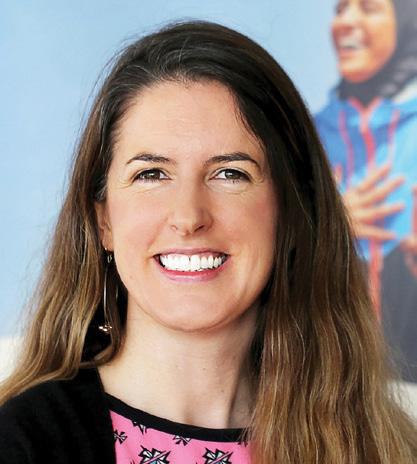
By the year 2030, women can and will be critical to leveraging this revolution to benefit our global society.
JOANNE SAVAGE
Early on in my career, I chose to work for international businesses and had to rapidly develop my leadership skills to be able to deliver in o ten male-dominated tech boardrooms. In the beginning, I probably tried too hard to be ‘tough’ and was being a bit robotic, but as my career progressed, I realised that being myself and using my so t skills was much more impactful. And what matters the most are the relationships you build along the way, regardless of gender. Therefore, at Google, we share a responsibility to represent and support the rich diversity of talent in our region.
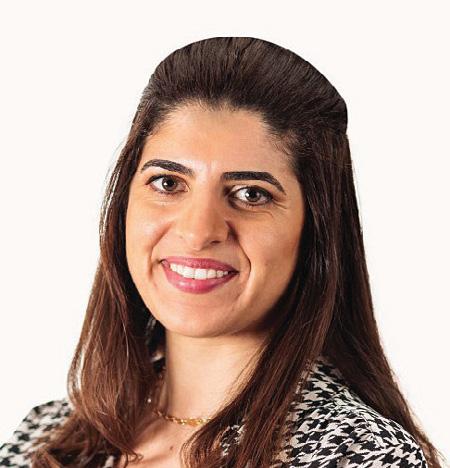
In the year 2022, FitBit continued making health resources more accessible to people in the region and around the world. Post-Covid, mental and physical health were more important than ever, and we saw people understand the connection between the two.
I believe there are a lot of ‘unknowns’ in 2023, and I am preparing myself and the business to be more nimble depending on how the economic environment evolves. We know that the overall health and wellness segment will continue to be relevant, and people might want to focus on the most essential aspects such as getting fitter or logging their daily sleep.
We believe there is an opportunity for wearables in making the invisible, visible by providing even more information about one’s body, allowing us to take better control of our health and wellness, and continuing to push the boundaries on what we can provide. We as Fitbit, continue to remain committed to bringing to the region premium devices that combine our health and wellness expertise with Google’s computing capabilities.
Lastly, an advice to aspiring women leaders would be to embrace your true self and be open about your ambitions. Also, be very open to failures as you would to successes as we o ten learn more from mistakes than any victories.
ODETTE MALKOUN
The year 2022 recorded numerous achievements and growth opportunities for Milestone Systems. Despite the challenges, we showcased faster growth than the average market.
As a people’s manager, I have been working on expanding the team across our major markets in the region. I have also been focusing on my professional development and ways to benefit the company by gaining new skill sets.
As a woman working from home and the youngest person in my team, I have struggled with the bias and prejudice surrounding leadership positions, especially within the tech space. People managers have traditionally been selected based on their age or physical location – both of which didn’t apply to me. In addition, if you look at the female presence in the tech industry, you’d be surprised to learn that the ratio of female CEOs or women in leadership roles in top technology firms today is roughly only 10.9 per cent.
This meant that I have had very few role models in the industry. However, I didn’t let that stop me as a woman in tech. I believed in my skills and passion for leading my team to continuous success and building a culture of trust and respect between us. I took it upon myself to mentor and guide my colleagues even before a managerial title. I’m thankful that my company has an inclusive and supportive culture for women leaders, and we have many female VPs and CxOs to look up to.
The tech industry is a fascinating world where knowledge is the key to success. Women must seize every opportunity to learn about what’s new. They should, also, have faith in themselves and forget the stereotype of the industry being male dominated. Finally, they shouldn’t let their age, gender or background keep them from achieving their goals.
gulfbusiness.com January 2023 39 WOMEN
IN TECH
Director marketing – EMEA, Fitbit at Google
Area manager, Levant and North Africa, Milestone Systems
I BELIEVE THERE ARE A LOT OF ‘UNKNOWNS’ FOR 2023, AND I AM PREPARING MYSELF AND THE BUSINESS TO BE MORE NIMBLE DEPENDING ON HOW THE ECONOMIC ENVIRONMENT EVOLVES”
Over the last 12 years, I have faced unique opportunities in either creating brand awareness of a new security technology player in the regional market or helping create an organisation’s brand equity as a thought leader in cybersecurity. To attain these objectives in totally separate scenarios, I have successfully devised marketing programmes with a measurable mix of direct channels and digital mediums, collaborating at any
given time with various partners like marketing/PR agencies and media houses, among others.
A planned approach towards the programme’s key objectives, optimum utilisation of resources and budget helped me to achieve the desired results from the marketing campaigns for the organisation and the channel community.
The growth opportunities are enormous, and so are the challenges associated as you successfully climb the corporate ladder.
A challenge I constantly try to overcome in all my marketing initiatives is to develop accurate metrics. This is to measure the outcome of marketing activities concerning the direct sales and revenue generated from such campaigns. The result of a successful marketing campaign may not be immediate, and it may take a while to derive actual lead generation and ROI from the activity. Also, limited budgets, timeframes and marketing perception in the
industry add to the list of challenges. Meanwhile, gender has been a di erentiator. However, women have overcome all challenges with their strengths in conceptualising, executing and creativity in marketing. Therefore, women should believe in their capabilities, be quick learners and acquire di erent skills.
One can be a good leader with important qualities such as integrity, accountability, empathy, humility, resilience, vision, influence and positivity. In addition, being passionate and committed are the mantras for success.
My constant endeavour would be to keep myself updated with all changes and always deliver my best in my current role. Stay agile and up to date on industry trends with a constant thirst and focus on knowledge enhancement. Finally, balancing personal and professional life is essential, giving both the required importance for a healthy worklife balance with constant support from the organisation and family.
JANE HARVEY
We’ve seen a lot of global challenges last year but the MENA region’s fintech ecosystem has been resilient and thriving. The past year has been great for Savii; we closed our pre-seed funding at the start of last year, launched our youth banking app and Visa cards in the UAE and rolled out our money management for teens workshops across Bahrain.
As a woman in tech, I learned from a very early age that the only way to earn the respect of male peers and superiors, was to demonstrate my ability to deliver in whatever role I was in. I grasped every opportunity to push myself out of my comfort zone and take on a new role.
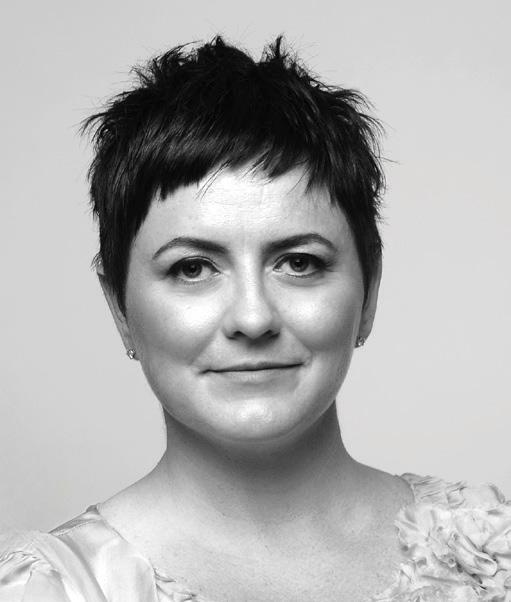
Going forward, to address the gender imbalance in tech, we need to start with pupils at school. We need to create an awareness of the plethora of di erent roles available in the industry and dispel the myth that working in tech means one needs to be a developer. Young girls need role models and as women
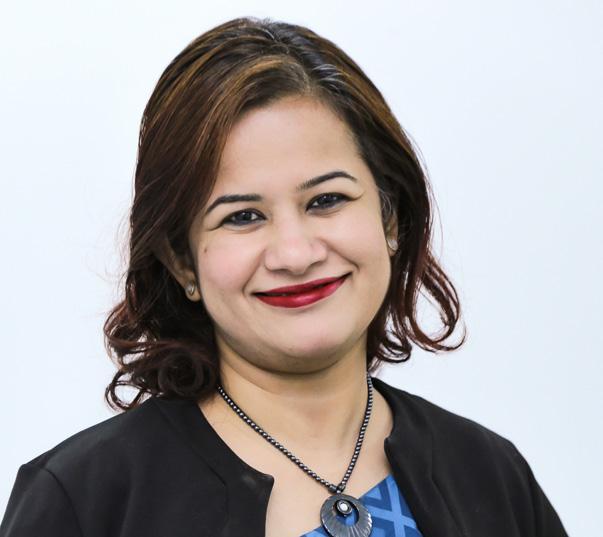
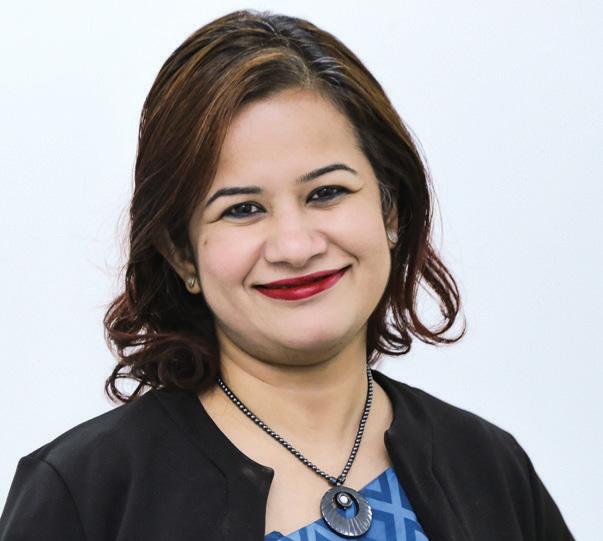
operating in this space, it is incumbent to show that there is a seat for females at the table. I’m proud to say that 60 per cent of the Savii team are women, and I wish to see this number grow.
My advice to women regardless of their industry or role, is to know what you want and ask for it without fear. When we’re afraid to ask for what we want, we create automatic rejection for ourselves. People value authenticity – so be brave in asserting your point of view and sharing your voice in important conversations.
Looking ahead, this year is going to be an important and exciting year as we continue to roll-out Savii in the UAE and gear up for the public launch in Bahrain and Saudi.
gulfbusiness.com 40 January 2023 FEATURES
SONALI BASU ROY
Marketing manager, Bulwark Technologies
AS A WOMAN IN TECH, I LEARNED FROM A VERY EARLY AGE THAT THE ONLY WAY TO EARN THE RESPECT OF MALE PEERS AND SUPERIORS, WAS TO DEMONSTRATE MY ABILITY TO DELIVER IN WHATEVER ROLE I WAS IN”
Co-founder and
CEO, Savii
OREABETSE MATLHARE LEYLA
Iwould summarise 2022 as a year of realising the power of self-reflection and execution. It’s been an incredibly powerful exercise to understand, not only my strengths, but also the company’s strengths and double down on that to do what we do best, even better. Market sentiments have never been so mixed, yet I find myself incredibly lucky to be in a position where I can help businesses deal with the uncertainty.
I am typically against the idea of seeing myself as a “woman” leader as opposed to just a leader. However, the statistics speak volumes and I cannot ignore the fact that the playing field is not even. I have o ten found myself ba ed at why I did not get the deal despite clearly ticking far more boxes than my male counterparts.
Over the last few years, I have been more conscious of this and have recognised that the challenges that I have faced as a woman are both internal and external. There is always that internal voice that makes you doubt yourself, that requires daily a rmation and pep talks. Externally, I am an introverted, artistic, petite, black woman operating in a predominately male world. This can be very tough and possibly lead to overexerting myself. How I overcome this is by reminding myself that this game is about excellence and not perfection.

But broadly speaking, if we are to increase the number of women in tech, we need to focus on three areas. The first is to recognise the unconscious bias. The second is that we need more male allies who understand how important it is for women to be supported. The third is for investors to shi t their mindset from viewing women as a risk but rather as a de-risking strategy. These steps will foster an environment that is healthier to women.
If I had to advise aspiring women leaders/entrepreneurs, I would lean heavily on my own experience. Firstly, never give up under any circumstance. It takes longer for women to get there but it doesn’t mean you will not get there. It is also important to realise that you can venture into the tech industry despite not having a tech background. Don’t be afraid of what you don’t know, however, be ready to upskill yourself and ask for help.
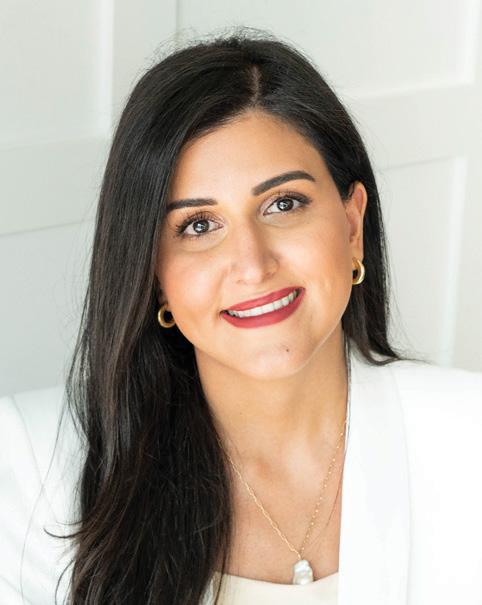
In terms of the digital tech industry, I believe the year 2022 has seen more focus on businesses with a social impact, especially in the fields of healthcare and sustainability. Within digital health, there has been a surge in business models that improve not only patients’ health but also their experience of receiving health, with predominantly more accessible, remote health models.
Personally, the past year has been transformative as I shi ted my career from strategy consulting to entrepreneurship and co-founded Wema Health, a membership-based virtual clinic for the treatment of obesity. We launched our platform in Denmark and the UAE last year. What has been most special for me has been seeing the weight loss results of our members.
However, working in the more male-dominated industries of strategy consulting and now digital tech, the biggest challenge for me has been the lack of female role models. I believe role models are important for inspiration and support early on as well as at critical crossroads in a woman’s career.
I also believe it is important to create more opportunities for established female leaders in tech to connect with young, aspiring talent – this helps to inspire and encourage more women to enter the digital tech industry.
An advice that I would give to aspiring (female) entrepreneurs is ‘just do it’ (‘follow your heart’, ‘build that business’, ‘take that risk’), but I actually think careful planning is important for any major business or career decision. Carefully assessing the opportunity at hand, speaking to your network and mentors, and weighing out the pros and cons can help you dive into a new business endeavour with more certainty.
Going forward this year, we have ambitious plans for Wema Health – to scale in the markets we are already active in and expand into new countries in Europe and the Middle East. We also want to expand our technology platform and unlock new and existing features. In terms of the industry, I expect 2023 to not be easy for young digital tech startups given the increasing di culty to raise funding in the challenging economic climate. I, therefore, expect it to be the year in which companies with a clearly profitable business model prevail versus those that are focused on high growth only.
gulfbusiness.com January 2023 41 WOMEN IN TECH
AZIZOVA
and head of MENA, Wema Health
Founder, The Scalable CFO
Co-founder
WOMEN IN
I AM TYPICALLY AGAINST THE IDEA OF SEEING MYSELF AS A “WOMAN” LEADER AS OPPOSED TO JUST A LEADER. HOWEVER, THE STATISTICS SPEAK VOLUMES AND I CANNOT IGNORE THE FACT THAT THE PLAYING FIELD IS NOT EVEN”
Creating a ‘data-driven’ organisation
digital transformation must adopt data management and analytical platforms to welcome and e ectively utilise the true power of data. Adopting cloud platforms to manage and secure confidential and important data assists companies in redefining the meaning of being a datadriven enterprise.
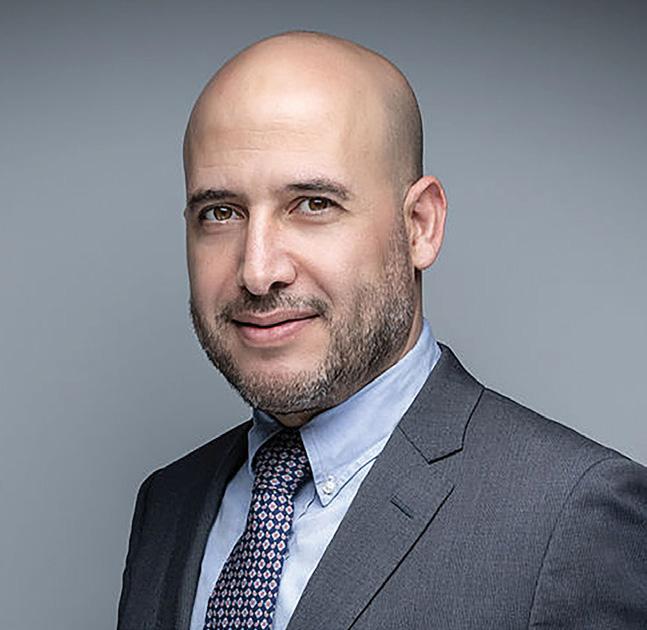
Enabling flexibility, innovation and risk management



Over the past decade, most enterprises have learned how to use data and numbers and relied on data for innovation and growth. However, as technology is advancing, companies need to learn how to keep up with AI tools for optimal data-driven activity.
The rise of artificial intelligence (AI) and available data promises the power to analyse, foresee, and rebuild a business regardless of the company’s stage. Business can access enormous amounts of data with the technology tools available today, including multi-cloud or hybrid cloud computing, machine learning, AI and data analytics. However, to grow e ciently and build a brand, it is essential to learn how businesses can leverage the gathered data to create a data-driven organisation.
What is a data-driven organisation?
Being a data-driven organisation means using data as a strategic investment in everyday work operations rather than just using this information during decisionmaking time. In other words, data-driven organisations are companies that understand the power of collecting data regularly, regardless of whether it is structured or unstructured. The collected information is then dissected, organised and analysed to build e ciency, profitability and growth for the business.
Becoming a data-driven organisation requires building a data-driven culture. This means that companies need to collect data religiously, appoint analytical experts, and consciously use the data to implement improvements within the enterprise at all organisational levels.
Being data-driven today

With the technology available today, it is easier than ever to become a data-driven enterprise. Think of the top-most brands you know – their success is based on influential insights from collected data. Leveraging data and AI demands a new architectural approach to data management – an enterprise data cloud and the ability to unlock the value of any data anywhere. This approach empowers consumers with self-service access to the tools needed to foster the data-driven technologies of tomorrow.
Research shows that 59 per cent of businesses today use data analytics to make better decisions and increase their business performance. Future-focused organisations implementing significant



The right AI tools and data management platforms enable companies to create an innovative and flexible data environment where information can be accessed from anywhere at any time by authorised personnel.







Securing the data on a cloud platform means that the information can never be lost, considering the multiple backups. Additionally, robust data monitoring and management across multiple domains assures that information roots are clear, explaining insights from research or forecasts from models.
Going above and beyond Consistent data use calls for an exciting future for multiple industries as we consider the opportunities in a more interconnected world. Internet of things and edge computing o er the prospect of integrated business solutions, superior consumer experience and service responsiveness across di erent sectors.
Data technologies, including AI and hybrid cloud infrastructures, operated by self-regulating management processes, o er the ability for businesses to create smart platforms.
Data enables you to go above and beyond your capabilities without any additional time taken o your clocks. The ability to leverage data helps companies predict and catch up to consumer demands and market trends and create a futuristic business environment that stays ahead of the curb.

BRAND VIEW
To grow efficiently and build a brand, it is essential to learn how businesses can leverage the gathered data
Zayed
Abualhaj, regional vice president - Middle East, Cloudera
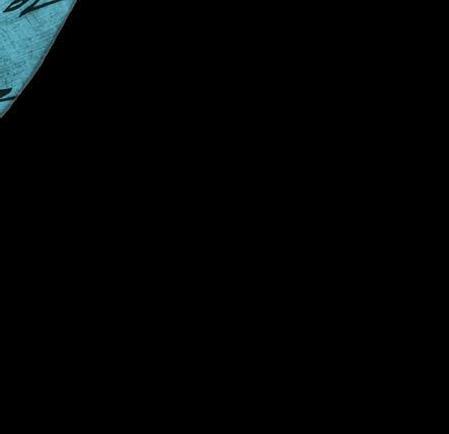







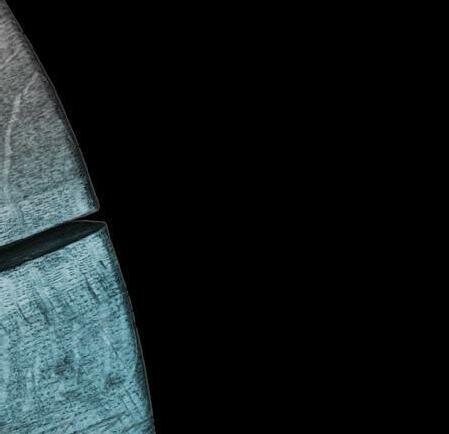








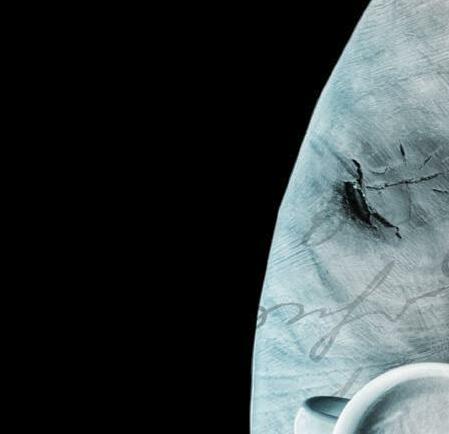
THE YEAR 2022 WAS ONE OF GROWTH AND POSSIBILITY. AND OF STRONG COMMITMENT TO BUILD A GREENER, INCLUSIVE AND TECH-CENTRIC FUTURE
SPECIAL REPORT O E R
SAIF HUMAID AL FALASI














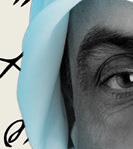



















We began the year 2022 with a continued focus on ‘reimagining energy’, a theme that struck a chord with over a million visitors who we welcomed at our pavilion and Zoom stores at Expo 2020 Dubai. From representing the energy sector – and the UAE –on a global stage to showcasing how service stations can truly be sustainable through our Service Station of the Future, our strong commitment to the nation and the industry remained at the forefront of our activities.
We also demonstrated our investment in strengthening the country’s infrastructure to meet the growing demand of our customers with over 180 service stations. Additionally, we realised our ambitious plans of opening 10 new eLink stations – a mobile fuelling format that enables motorists and customers with easy access and convenient fuelling services.
Our projects, including the completion of construction of our jet fuel pipeline linking Horizon Emirates Jebel Ali Petroleum storage terminal in Jebel Ali to Al Maktoum International Airport; the inauguration of our first emergency response centre; and our recent partnership with Japan’s IHI Corp to explore green ammonia production in the UAE, show our ongoing
commitment to supporting Dubai’s strategy and its vision for the future.








Looking ahead, our focussed e orts and investments across the upstream, midstream and downstream segments of the business will continue to drive our strategy in 2023 and beyond, and we will expand operations both in the UAE and internationally. We will continue to place our customers at the heart of our business while we undertake our robust retail expansion plans. We expect to further strengthen our service station network while also increasing market share of diesel, jet fuel, LPG and other products.








Furthermore, we will focus on driving e ciency and executing our digitisation and innovation strategy as part of our e orts to support the growth and diversification of Dubai and the wider UAE economies, in addition to contributing to realising the UAE’s Energy Strategy 2050.

Finally, as the UAE prepares to host COP28 in 2023, we will demonstrate the latest technological and sustainable developments in our integrated business through the Service Station of the Future, and drive conversations with like-minded stakeholders, potential business partners and customers as we address the dual challenges of meeting the world’s growing demand for energy while reducing the impacts of energy use on the environment.
As we embark on our collective future towards 2071, we will continue to strengthen our role as an innovative and integrated energy partner to the UAE and beyond – delivering sustainable value and industry-leading performance.
SPECIAL REPORT 44
GROUP CEO, ENOC
As the UAE prepares to host COP28 in 2023, we will demonstrate the latest technological and sustainable developments in our integrated business through the Service Station of the Future”
RAKI PHILLIPS

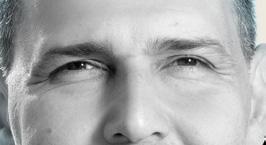
 AUTHORITY
AUTHORITY



























The year 2022 has been one of robust growth for Ras Al Khaimah against a backdrop of ongoing global uncertainty. Due to our ability to pivot and respond quickly to both the pandemic and ongoing challenges such as global inflation, soaring fuel costs and geopolitical uncertainty, we have raised the overall competitiveness of Ras Al Khaimah’s tourism industry.
Our highest visitor numbers since the onset of Covid-19 were achieved – representing a 14.5 per cent growth last October versus year-to-date October 2021. This put us firmly on track to reach our targetted 1.11 million arrivals by the end of the last year.
We have opened the first Mövenpick and InterContinental properties in the emirate as well as announced the biggest foreign direct tourism investment project with a partnership between Wynn Resorts, Marjan and RAK Hospitality Holding to open an integrated resort development on Al Marjan Island. We have expanded our connectivity with the addition of several new direct flight routes from Europe and India as well as
the development of our cruise tourism. We have also played host to a series of sports events and MICE.
Our ability to develop the tourism and hospitality sector is aligned with the UAE Tourism Strategy 2031 to bolster new investment in the sector and attract 40 million hotel guests across the UAE. Looking ahead to 2023 and beyond, we anticipate over 5,600 keys by 2026.
To achieve this growth, we are putting sustainability at the heart of our development and investment strategies. Increasingly, consumers are seeking out green businesses, with 81 per cent of global travellers stating that sustainable travel is important to them – a 10 per cent increase over 2021, according to booking.com.
It is also the right thing to do and the right time to do it as the industry seizes opportunities presented by the pandemic to completely revolutionise and rethink its ways.




Balanced Tourism is something we are firmly embracing as an emirate. Our goal is to nurture a tourism industry that is economically, environmentally and socially sustainable, as well as supports quality of life, while conserving our environment. With this goal in mind, we have adopted a measured approach with a controlled pipeline of hotels and have committed a Dhs0.5bn investment to ensure we are developing attractions that will enhance the natural environment. We are also investing in Cultural Conservation, with four tentative UNESCO World Heritage Sites.
We are diversifying our portfolio with sustainable accommodation on Jebel Jais including Earth Hotel Altitude, an eco-based pop-up hotel concept and Saij, a Mantis Collection Mountain Lodge that will provide a mountain retreat experience.
Furthermore, a Tourism Business Accreditation Program was unveiled that will provide a management framework to help individual businesses grow their sustainability e orts as a means of benchmarking their performance. This approach to development is the cornerstone of our ambition to triple visitor numbers by 2030 and increase tourism’s contribution to Ras Al Khaimah’s GDP by 12 per cent.
SPECIAL REPORT 45
CHIEF EXECUTIVE OFFICER, RAS AL KHAIMAH TOURISM DEVELOPMENT
Our ability to continuously develop the tourism and hospitality sector is aligned with the UAE Tourism Strategy 2031 to bolster new investment to the sector with a view to attracting 40 million hotel guests across the UAE”
ARIF AMIRI









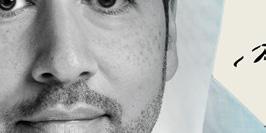


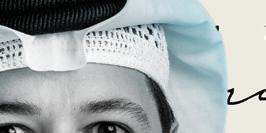




For us, the year 2022 has been one of accelerated innovation. We have seen substantial progress in terms of how we shape and regulate the financial sector in Dubai and how we influence our counterparts globally by providing innovative regulation and thought leadership in new and exciting spaces.
Emerging from 2021, we began to experience some acceleration as globally we started to come out of the pandemic. However, 2022 has been a stepchange year, attracting new businesses and talent to our ecosystem at an unprecedented pace. Our success has come through spearheading fintech and innovation initiatives, evolving our laws and regulations and influencing thinking with counterparts across the world.







During last year, the total number of registered companies in DIFC grew from 3,297 to 4,031, a 22 per cent year-on-year increase. DIFC is now home to 1,252 financial and innovation-related companies.
In particular, fintech has been a huge growth area for DIFC in 2022. Between January and September, DIFC-based fintech firms secured more than $559m of funding. Our innovative thinking has opened new
doors for us, and last year, we established the region’s first Open Finance Lab, which works in collaboration with banks, fintechs, regulators and the industry to unlock the next wave of growth for the sector and increase consumer protection, financial inclusion, social benefits and economic opportunities.



We committed to become a regulatory innovator in the world of finance, as we set out in our 2030 Strategy. DIFC and FICCI LEAD, a technology and business incubator of the Federation of Indian Chambers of Commerce & Industry, signed a landmark agreement to launch the “India-UAE Start-Up Corridor”. This partnership will help expand the startup ecosystem between India and the UAE, and will target a minimum of 50 validated startups based in both the countries over a period of five years, with the vision to grow 10 of them into unicorns by 2025. This forms a large part of the UAE’s aspiration to create 20 unicorns by 2031.
Our innovations have led us to expand beyond being a financial centre into a place where people want to work, live and play. Our growth into the lifestyle space will continue into 2023, following the ground-breaking of DIFC Living and Innovation Two, which will feature 174 upscale built-to-lease residences embracing flexibility, technology and the future of living.
In 2023, we will also continue to focus on expanding our influence to become the largest ecosystem of financial services, technology and innovation in the region. In addition, we will look to expand our infrastructure virtually with our first Metaverse Accelerator programme.
SPECIAL REPORT 46
CEO, DIFC AUTHORITY
During last year, the total number of registered companies in DIFC grew from 3,297 to 4,031, a 22 per cent year-on-year increase. DIFC is now home to 1,252 financial and innovation-related companies”
EASA AL GURG
















 GROUP CEO, EASA SALEH AL GURG GROUP
GROUP CEO, EASA SALEH AL GURG GROUP



The year 2022 was a challenging but productive one for Easa Saleh Al Gurg Group. In the competitive race of the ‘new normal’, prioritising advanced technology, digital transformation, innovation, cybersecurity, data-protection and regulatory compliance was essential. Hence, we adopted and adapted to new technologies.







The pandemic wasn’t the only challenge we faced in the recent past. We have seen an economic slowdown because of market fluctuations caused by crashes in stock markets. There have been a few other global circumstances that stunted business growth sporadically. However, the UAE has always triumphed in addressing challenges and accepting changes to better its economy, helping businesses flourish.
One such change the UAE introduced last year was the new visa regulation, which will help bring in an influx of people into the country and benefit its GDP. That said, the UAE is not disconnected from global issues – these impact the smallest of businesses, which then have a ripple e ect on medium and large-sized companies. Everyone must plan and prepare.
Despite challenges, we have seen a lot of positive changes in 2022 and we expect the results will be felt most keenly in 2023. We have set up two new businesses in the last quarter of 2022: Al Gurg Joinery (AGJ) and Al Gurg Distribution (AGD).

To increase e ciency, we also plan to have more consolidated operations. We will be investing in five, new large-scale real estate projects for the group to further strengthen our business. Additionally, we are going into 2023 with a solid start through healthy order bookings and are expected to perform even better this year.
Global e-commerce share of retail sales is set to continue to grow and reach 24 per cent by 2026 which is a 5.2 per cent increase in just over half a decade. With 2022 heralding new technology and customer behaviour trends, the concerted push within the group is to utilise e-commerce platforms as e ective tools to drive customers to our products and industry solutions.


ESAG2025 is the road map for the group’s future, focussing on diversity and intrapreneurship. We would like to empower one another to accept no limits, think alternatively and drive positive change.

The recently announced ‘We the UAE 2031’ is an integrated programme shaping the future of the country within the next 10 years with a focus on social, economic, investment and development aspects. The plan, which includes goals for economy, society, diplomacy and life in the UAE, is looking to raise GDP to $816bn and increase foreign trade to $1.09tn by 2031.
As effective partners and contributors to the nation’s economy, our future path will support this GDP growth. The common purpose is to create a flourishing local business environment, enabling UAE companies to excel and lead worldwide.
SPECIAL REPORT 47
Global e-commerce share of retail sales is set to continue to grow and reach 24 per cent by 2026 which is a 5.2 per cent increase in just over half a decade. With 2022 heralding new technology and customer behaviour trends”
ABDULLA BELHOUL
















increase access to investment. Listing has also allowed shareholders to tap into Dubai’s positive business climate and attractive dividend yield. We have seen some of our strongest occupancy levels for commercial and industrial assets in years, and retention remains high. Not only are new customers making long-term commitments with our group, but several strategic customers are expanding their presence in our districts.
All six sectors in which we operate have enjoyed sustainable growth, which we expect will continue as we head into the new year. Higher-level strategies such as Operation 300bn, the National Strategy for the Cultural and Creative Industries and Make it In the Emirates reflect the government’s commitment to upli ting vital economic sectors. Free trade agreements with India, Indonesia and Israel, respectively, are opening Dubai to even more trade and investment networks, with several promising negotiations still in the works.
This past year we welcomed the promised return to normalcy. Our leadership’s swi t response to the Covid-19 pandemic set the UAE up for a transformative 2022. Economic growth has been strong, underpinned by a rebound in domestic business, travel and tourism, and events. The International Monetary Fund projected the UAE’s GDP to cross six per cent this year – a 3.8 per cent increase from 2021 that nods to renewed business and investor confidence.
We are seeing e orts to sustain that momentum through several government-led initiatives. Increased access to work and residency visas, enhanced business frameworks and strategic trade agreements, are directing greater investment and business to the UAE. Complemented by our strategic location on the world map, Dubai is truly a global business hub.
This reflects in the surge of new licences and residents, which are boosting demand in the commercial leasing sector. Citywide o ce occupancy levels in Q3 2022 hit the highest peak since 2014, and demand for high-quality spaces is swelling as more people return to the o ce.
Last year, we opened our investor base by listing shares on the Dubai Financial Market (DFM) to














As Dubai embeds innovation into its economic framework, we will continue to attract international brands, services and products, while enhancing the o ering as a regional epicentre of R&D and creativity.
Dubai Science Park and Dubai Internet City already feature purpose-built innovation and R&D centres by the likes of Himalaya, Firmenich, Motorola Solutions and Intel. Ecosystems like Dubai Design District and Dubai Media City are turning our emirate to the frontlines of the design, creative and culture industries. Where there was Paris, Milan and New York, there is Dubai. This year will see our imprint as influencers of global ideas, trends and breakthroughs, grow.
Digital transformation has accelerated in every sector, from manufacturing to education. As many parts of the world look to accommodate new work environments, Tecom Group remains committed to providing companies with modern and flexible spaces to engage. Our ecosystems will continue to be where diverse businesses, talent and industries can converge, exchange ideas and create lasting impact. Alongside attracting global brands, we will concentrate on nurturing entrepreneurship and homegrown talent.
By creating synergy across key economic sectors like design, education, manufacturing, media, science and technology, we can deliver a business ecosystem where the whole is greater than the sum of its parts.
SPECIAL REPORT 48
CHIEF EXECUTIVE OFFICER, TECOM GROUP
Alongside attracting global brands, we will concentrate on nurturing entrepreneurship and homegrown talent”
HATEM DOWIDAR






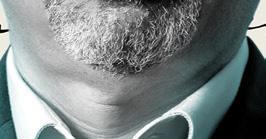


















We started 2022 as ‘Etisalat’, a telecom company and ended it as e&, one of the global tech conglomerates. For the upcoming years, we will strengthen customer and community experiences and add shareholders value.
The pandemic accelerated the global digital revolution, and the rapidly changing world created new white spaces for businesses and customers alike. These emerging gaps provided massive opportunities for new and innovative solutions, prompting e& to become a leader in a range of technology fields, from artificial intelligence (AI) to the Internet of Things (IoT), fintech, and the latest digital content, bringing technology solutions to customers.
We envision e&’s transformation as a long-term journey with calculated strategic growth, whilst we advance in various future directions for each of our e& verticals. We have taken the initial steps to enable the digital transformation for UAE government entities, large-scale enterprises, corporates and organisations, unlocking possibilities with advanced digital solutions. We have already made advancements in delivering and deploying future technologies such as the metaverse, AI, blockchain, virtual reality (VR), augmented reality (AR), IoT, data centres and cloud computing. During 2022, we partnered with G42 to create the UAE and Middle East’s largest data centre provider; collaborated with Meta to drive innovation with enhanced AR and VR experiences; ventured into the metaverse with ‘e& universe’; dfree voice and video calling app Gr; introduced the region’s first Telco NFT collection; expanded collaboration with Amazon Web Services to serve key industries and meet the growing demand for digitalisation, among other initiatives.
While taking steps to strengthen our position as a global technology player, we have declared the group’s net zero targets in the UAE by 2030 during COP27, becoming the first UAE private sector entity to join the UAE Independent Climate Change Accelerators (UICCA). This rea rms the group’s commitment to climate change e orts by focusing on key initiatives to reduce our carbon footprint.
As e& remains focused on maintaining its environmental, social and governance business model, we are actively seeking opportunities to invest in industries currently experiencing high-growth and sharp focus, including fintech, entertainment, worktech,


healthtech and edtech. This allows us to sit in the front row, sometimes jointly at the helm, acquire, grow and support the visionary tech startups moving this world forward.



With a year of achievements behind us, we look forward to amplifying and accelerating our e orts and aspirations in 2023. With a focus on forging business partnerships in research and development, technology applications and procurement that enable the digital transformation of governments, large-scale enterprises and corporates and further our mission to be the leading international tech group that makes it possible.

SPECIAL REPORT 49
GROUP CEO, E&
While taking steps to strengthen our position as a global technology player, we have declared the group’s net zero targets in the UAE by 2030 during COP27, becoming the first UAE private sector entity to join the UAE Independent Climate Change Accelerators (UICCA)”
NASSER AL AWADHI
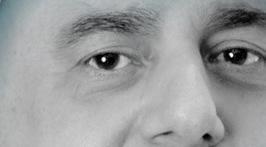
 CHIEF EXECUTIVE OFFICER, ABU DHABI ISLAMIC BANK
CHIEF EXECUTIVE OFFICER, ABU DHABI ISLAMIC BANK








The year 2022 has been significant for Abu Dhabi Islamic Bank (ADIB) as we have achieved many milestones and remained on track with our sustainability agenda. ADIB’s vision was revamped to be the world’s most innovative Islamic bank and had a fantastic year in terms of financial performance and investment in innovation. We further digitised our banking ecosystem and maximised positive impact by adhering to our ESG and sustainability measures among other initiatives, all in line with UAE and Abu Dhabi’s economic vision.
Over the year, we have witnessed a growing demand for digital services and personal finance. In response to customers’ needs, we promoted our digital transformation programme to enhance productivity and improve the banking customers’ experience. We also introduced the ADIB express finance programme, providing customers with easier access to personal finance through our mobile app. Ultimately, it was witnessed that the rate of usage of our digital channels has significantly increased.
launched ‘Yusr Salary Advance Finance’ to support customers across the retail landscape. Another key milestone last year was celebrating the first anniversary of “Amwali”, the digital Islamic bank for youth. With over 8,000 active accounts, its gaining high traction among digital savvy users.
ADIB delivered an outstanding performance on all fronts for the year 2022, which in combination with our renewed strategic vision and drive, provides a solid platform for sustained value-creation into the medium term ahead as we make progress on delivering our five-year growth strategy.
Continuous innovation, segment focus, digital excellence and sustainable future are the core tenets of our 2025 growth strategy. We are committed to the future prosperity of Abu Dhabi and the UAE, and seek to further support the country’s sustainability objectives, UAE Green Agenda 2015-2030 and the Abu Dhabi Economic Vision 2030.
As part of its commitment to provide innovative Sharia-compliant products and services, the bank























We will continue to be at the forefront of the banking industry, supporting the UAE’s mission to achieve national economic development and competitiveness. Our strategy supports our ambition of being a lifelong partner for our clients, community and colleagues. We will remain firm on our key strategies which include continuous innovation, segment focus, digital excellence and a sustainable future.
As we look ahead, we will continue to work towards creating value for all our stakeholders. We are confident in the economic outlook for the UAE and the region and will look to accelerate our progress for both customers and shareholders alike.
SPECIAL REPORT 50
As part of its commitment to provide innovative Sharia-compliant products and services, the bank launched ‘Yusr Salary Advance Finance’ to support customers across the retail landscape”
ALISHA MOOPEN

















 DEPUTY MANAGING DIRECTOR, ASTER DM HEALTHCARE
DEPUTY MANAGING DIRECTOR, ASTER DM HEALTHCARE



Healthcare has never been more important to the global economy than during the past two years, and it will be central to the economic recovery in days to come. In the year 2022, a core priority for healthcare systems was to tackle a backlog of non-Covid care as the global healthcare sector met new challenges.
The UAE too, rose to this challenge. Healthcare in the country has grown phenomenally and by 2023, spending in this sector is forecast to rise to $18.3bn. A 10-year forecast predicts that health expenditure will rise to $26bn, while overall spending is expected to account for 3.6 per cent of the country’s GDP by 2028.
During peak pandemic times, the country’s prompt response and its vaccination programme put its healthcare sector in the global spotlight. Implementation of precautionary measures, smart technologies and the successful re-opening of the country’s borders were key developments that accelerated a rebound in medical tourism.
Last year, healthcare executives continued to be concerned about key issues, including shi ting consumer preferences, evolving digital health technologies, care delivery models and clinical innovation. The pandemic upset traditional health systems and in turn, healthcare entities scrambled to find ways to adapt and maintain operational eciency by introducing new solutions.


At Aster DM Healthcare, we continued to elevate the human experience of our workforce and reshape what, how and where work is performed by scaling virtual health services for patients and forging partnerships. We also continued to address the heightened importance of inequities of healthcare, sustainability and the environment through our ESG e orts.








Last year, we undertook a number of initiatives such as the introduction of myAster app, which combines artificial intelligence (AI) and machine learning capabilities to bring an integrated omnichannel experience of our services to patients. The complete version of the app is expected to go live in 2023. We also diversified to cover a full spectrum of healthcare services not just limited to hospital and clinics but for personalised home care services. Aster was among the first private healthcare players in the UAE to introduce teleconsultation facilities at the beginning of the
pandemic and over the years, the service has received phenomenal uptake. The company recently launched ‘Wellth’, a hub of integrative medicine in the country, to encourage people to lead healthier lives and alleviate chronic lifestyle diseases.
Aster DM Healthcare is contributing to enhancing the economy in a variety of ways by leveraging opportunities provided by the UAE government. By incorporating AI, digital technology and automation, we are ensuring that healthcare services are more sophisticated and accessible in line with new consumer trends in healthcare.
We have a number of expansion projects lined up for 2023. In the GCC, we plan to increase bed capacity, open clinics and pharmacies in newer high-growth areas, invest in widening our business offerings, increase focus on medical value tourism, grow our cash-related business, and fully rollout the myAster app. We focus on the UAE operations becoming an omnichannel experience for our customers in this phygital era, and in parallel, have plans to open Aster pharmacies in Saudi Arabia and Bangladesh.
SPECIAL REPORT 51
A 10-year forecast predicts that health expenditure will rise to $26bn, while overall spending is expected to account for 3.6 per cent of the country’s GDP by 2028”
NAIM YAZBECK











 GENERAL MANAGER, MICROSOFT UAE
GENERAL MANAGER, MICROSOFT UAE










n 2022, Microso t UAE celebrated the third anniversary of the launch of our local cloud data centres. This was also the year we launched HoloLens 2 in the country. We see our mixed-reality headset as one of the defining technologies of the Industry 4.0 era and the emerging metaverse. We also launched four new services in 2022.
Our launches are not random; they arm organisations for the immediate future – a future in which the pressure to remain agile keeps increasing. According to International Data Corporation, Microso t, our partners, and our cloud customers are due to add





almost 100,000 jobs to the UAE economy, including over 29,000 skilled IT jobs. But we must ensure we have a talent pool ready to assume these roles.
Microso t continues to commit heavily to education and skilling initiatives. Last year, at GESS 2022, we demonstrated a range of solutions designed to modernise teaching methods. In June 2022, we worked with Dubai-based French international school Lycée Français International de l’AFLEC to give diverse groups of students an introduction to coding. In alignment with our ongoing pledges to diversity, inclusion, and accessibility, we made the sessions open to a wide array of students, including those with special needs.
The future requires reinvention – of ourselves, of our businesses, of how we work, and of how we innovate. In 2023, Microso t will continue delivering on our industry clouds, which are tailored toolboxes that allow for the unique needs of each sector. We shall show how our employee experience platform Viva can bring insights, purpose, connection and growth to enhance the employee experience in the age of hybrid work.

As digital transformation continues, we must not forget to protect ourselves. The cyberthreat landscape is becoming more sophisticated as the years pass, and Microso t will not rest on this issue. We will bring robust countermeasures to protect people and organisations from malignant forces that would disrupt innovation.
With COP27 not far behind us and the UAE-hosted COP28 fast approaching, Microso t UAE sees 2023 as the year of sustainability. And we shall continue to lead. Globally, we have been carbon-neutral since 2012 and have pledged to be carbon-negative by 2030. By 2050, we aim to have removed from the environment all the carbon we have emitted since our 1975 founding.
From water to waste management, we work to protect the planet. We bring our technologies into arenas such as smart buildings, joining forces with organisations like Bee’ah and DEWA to infuse corporate headquarters with artificial intelligence and other technologies that help drive down emissions.
We also launched the Emissions Impact Dashboard to help businesses evaluate the environmental impact of their cloud usage.
Humankind’s history is largely one of self-improvement. In 2023, we face some challenges but that is no di erent than any other year. Let our past inform our future. Let us look to our ingenuity and apply our skills and technology to keep on improving.




SPECIAL REPORT 52
Our
I
partners, and our cloud customers are due to add almost 100,000 jobs to the UAE economy, including over 29,000 skilled IT jobs. But we must ensure we have a talent pool ready to assume these roles”
NABIL HABAYEB





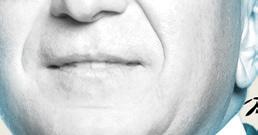





 SVP – GE, PRESIDENT AND CEO –GE INTERNATIONAL MARKETS
SVP – GE, PRESIDENT AND CEO –GE INTERNATIONAL MARKETS




















For organisations that touch people’s everyday lives, navigating complexity de tly is critical. As they evolve to meet a changing world, these companies o ten must make transformational leaps to shape the future of their business, while keeping a laser focus on what really matters.

In 2023-24, GE will undergo a shi t unlike any other in our history. We will welcome a new era of service to our customers and communities as three independent entities – GE HealthCare, GE Vernova and GE Aerospace. The core areas of operations of these three companies are integrally linked to what the world needs – separating will allow for a singleminded focus on better healthcare, cleaner energy and seamless connectivity.
Across all three businesses, there will two key drivers – a focus on sustainable progress and a commitment to tapping into the power of the digital world.
Sustainability as a focus was evident in the year 2022 as the world rallied around the need for a decarbonised future. With energy playing a central role in driving climate security, every pathway for the energy transition must be harnessed – and that will continue to be a priority for GE as we support the transition through renewable energy, hydrogen; carbon capture, utilisation and storage (CCUS); nuclear and others. In aviation, we are now working on what’s next alongside our partners by proving out future technologies
such as open fan design, hydrogen and hybrid electric, and making our operations carbon neutral. In healthcare, our focus on remote solutions means fewer trips when our technicians are repairing or upgrading our machines, which cuts down on travel-related emissions. Here in the Middle East, the focus on sustainable development will take centrestage in 2023 as the UAE hosts the COP28 conference. This is an opportunity to build on the successes achieved at COP27 in Sharm El Sheikh, where GE focused on implementation and partnerships. We signed an agreement with IRENA, ran a GE LM6000 aeroderivative gas turbine on a hydrogen/natural gas fuel blend for the first time in Africa, became a founding member of the Corporate Coalition for Innovation & Technology toward Net Zero and more.
When it comes to digitisation, the last year has also been unprecedented. We have seen the accelerated adoption of digital in healthcare. In the energy space, digital solutions can increase e ciency, flexibility and availability for wind and gas turbines, as well as the grid. And when it comes to aviation, creating the future of flight means harnessing vast amounts of data to ensure people and goods are transported as eciently and sustainably as possible.
At an organisational level, GE is transforming to continue the pursuit of our purpose – building a world that works. January 2023 will start with the creation of GE HealthCare, a company which will drive precision health to improve patient outcomes. GE’s portfolio of energy and digital businesses, which will comprise GE Vernova, is set for a spin-o in 2024, with the mandate of supporting the world’s energy transition and decarbonisation goals. And as GE transitions to become GE Aerospace in 2024, our focus remains strongly on redefining the future of flight.
As we look into a future of new opportunities, we will continue to be a partner in the progress of nations and communities.
SPECIAL REPORT 53
When it comes to aviation, creating the future of flight means harnessing vast amounts of data to ensure people and goods are transported as efficiently and sustainably as possible”
FAHED GHANIM





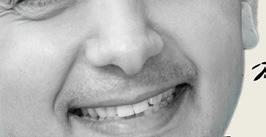

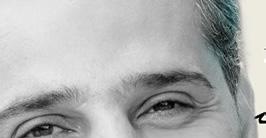





 MAJID AL FUTTAIM – LIFESTYLE
MAJID AL FUTTAIM – LIFESTYLE

The year 2022 has been one of driving impact. But it also came with challenges, which moved the needle on people’s priorities. Net zero has new urgency, health priorities continue to evolve, and customers continue to remain skeptical towards brands, seeking out those that o er hybrid experiences and are purpose-driven. We have taken this onboard throughout 2022 whilst maintaining our deep commitment to understanding and fulfilling our customers’ needs. We’ve continued to grow our portfolio, particularly online – with the launch of seven new tech platforms – expanded into new geographies, and even entered new categories for the very first time.
This constant redesigning of customer journeys enhances the interactions over multiple touchpoints as we focus on omnichannel growth. Keeping customers at the heart of what we do means we cannot ignore the anxieties brought about by economic inflation, which has caused shoppers to reassess their spending priorities. Here, we’ve started to witness the shi t from
the ‘experience’ economy to the ‘moments’ economy – customers choosing smaller moments coupled with smaller purchases.








Despite the decline of real spending, some categories, such as cosmetics, are experiencing double-digit growth globally. This tells us that there are still opportunities to make bold moves and deliberately stake on long-term growth. And so, we did just that; Majid Al Futtaim Lifestyle moved into the beauty and skincare category, namely through our most recent partnership with the iconic beauty leader, Shiseido.
We also capitalised on the opportunity to take our partner brands across borders, introducing CB2 to Saudi Arabia and expanding lululemon across the region and online. We expect athleisure to generate enormous growth as it firmly establishes itself as a core fashion category, driven by growing wellness trends. In fact, a ter lululemon’s regional expansion, we’ve seen an impressive 63 per cent year to date growth.
Retail is detail, not rocket science. We must remain opportunistic and flexible, responding to trends as and when they appear. On the one hand, e-commerce continues to explode; increasing in the UAE by 34 per cent between January and September 2022, and accounting for 11 per cent of total retail sales. In response, we have rapidly accelerated our digital presence, doubling our online revenue in 2022 alone – with a forecast to double it again in 2023. On the other hand, we are witnessing an increased appetite for in-person shopping – a lingering pandemic a ter e ect.
As such, we have built upon our bricks and mortar proposition and opened 15 new stores in 2022. We’re cognisant that the ongoing relevance of ‘physical’ outlets will depend on our ability to deliver a customer experience that seamlessly blends the physical and digital, with minimal friction.

Our home-grown brand, THAT Concept Store, is a great example of this: conceived as a retail destination that o ers additional experiences beyond browsing or buying, customers can also use the instore smart mirrors to digitally request items to the fitting room, book a hair appointment via the mobile app, search the newly launched online platform, and much more.
What is interesting is seeing the way all our touchpoints interconnect. Mobile devices have come to be viewed as an extension of physical stores, as customers use their phones to search for product information, read reviews, and communicate with friends about purchases. There is an increased demand for transparency from and engagement with retailers, which has resulted in us dialing up our social interactions.
As we look to the year ahead, we will undoubtedly see ‘moments’ become the currency of customer experience. Majid Al Futtaim will remain focused on elevating our omnichannel proposition across our business.
SPECIAL REPORT 54
e-commerce continues to explode; increasing in the UAE by 34 per cent between January and September 2022, and accounting for 11 per cent of total retail sales”
CEO
ABDULLAH ALAJAJI

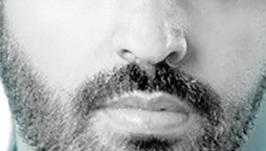
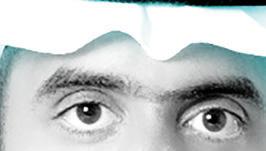 FOUNDER AND
FOUNDER AND












 DRIVEN PROPERTIES
DRIVEN PROPERTIES





Looking back at recent years from the perspective of a real estate industry insider, there’s a strange feeling of not having enough words to describe everything that has taken place, and yet, ironically enough, also being le t speechless. This peculiar feeling is a result of all the tremendous things that happened in Dubai over the past few years, once again confirming that we are lucky enough to live in one of the “greatest places on Earth”.
While we optimistically write our New Year’s resolutions, it’s good to reflect on the things that have created our reality today, all the while making plans for the year we’ve just welcomed. Let’s reflect on several Dubai property fundamentals, that since the autumn of 2020, have changed forever. Here’s how, and to a similar degree, why.
Pandemic tourism and migration
A uent individuals and families around the world, predominantly from Europe, decided to visit Dubai for the first time, since it was one of very few places that was open for tourism. It was the obvious alternative to ski resorts in Courchevel, Gstaad, and other popular winter destinations which had closed borders at the time. As these visitors became more attracted to the prospects of the city, many of them decided to call it home, while others decided to make it a new holiday destination, fuelling demand for property, particularly in the high-end segment of the market.
This, coupled with the Expo Dubai 2020 bonanza, incredibly competitive immigration reforms and golden visa schemes, put Dubai on the world map and heightened its status among its global peers.
Challenges in competing countries in Asia
Hong Kong’s appeal has lessened since China strengthened its influence on the Chinese Special Administrative Region (SAR). This reinforced Dubai’s position as a trade, tourism and financial hub, and has taken significant market share as a result. In addition, Singapore had its borders closed for a very long time – further reinforcing Dubai’s competitive advantage.
The Russia-Ukraine crisis
With the crisis still continuing and sanctions in place on Russia by the global community, Dubai has become a new hub for its high-net-worth denizens, with capital from a uent individuals and institutions from Russia
and its neighbours continuing to pour into the Dubai property market. This took liquidity levels to new highs in Q3 2022, with Russians being among the top foreign buyers in Dubai’s property market. Of course, the strength of the Russian ruble against major currencies has played a pivotal role in making this market a competitive one. This trend is set to continue well into 2023.
Moving forward…
The main catalyst for further growth is China. This market has been closed for nearly three years, at a time when investment from China into Dubai was growing at its fastest rate. We expect this bottleneck to open soon, with the Dubai market benefitting as a result.
In addition, as gaming is introduced in the country, a new population is set to make its way to Dubai, adding a new demographic to the demand mix. Finally, as rent prices expand at their fastest rate, and banks continue to lend to individuals, more individuals are making the property purchase decision, again fuelling demand growth. It will be interesting to see data on mortgage numbers at the end of the year, with borrowing rates growing steadily and three-month Emirates Interbank O ered Rate, also known as EIBOR, at 3.8 per cent.
The bottom line
We believe that the Dubai property market will continue to see exceptional demand in the new year, and that 2023 will be another record year for the market.
SPECIAL REPORT 55
CEO,
This peculiar feeling is a result of all the tremendous things that happened in Dubai over the past few years, once again confirming that we are lucky enough to live in one of the “greatest places on Earth”

Follow us on instagram.com/emiratesman
L OOK SM A R T , L I V E SM A R TE R
C M Y CM MY CY CMY K
BAL KRISHEN RATHORE
 CHAIRMAN AND CEO, CENTURY FINANCIAL
CHAIRMAN AND CEO, CENTURY FINANCIAL











of its fund’s rate to be 1 per cent at the end of 2022, but it ended up being 4.5 per cent. The Fed now predicts that the rate will be 5 per cent by the end of 2023.
Looking at the global growth outlook for 2023, we can expect deteriorating fundamentals due to tighter financial conditions and more restrictive monetary policy. The economy will likely enter a mild recession, with the labour market contracting and the unemployment rate increasing. Consumers who saved money during lockdowns have mostly used up their post-Covid excess cash and are now facing adverse wealth e ects from declines in housing, bonds, equities, and other investments. This negative trend is expected to continue in 2023, as consumers and businesses reduce discretionary spending and capital investments.
The year 2022 has been a tumultuous one, with the Federal Reserve’s acknowledgement that inflation is not transitory and the subsequent rise in prices to a four-decade high of 9.1 per cent in June. The ongoing Russia/Ukraine crisis and the Federal Reserve’s quantitative tightening, in which it reduces the size of its balance sheet by $95bn per month, have further exacerbated market challenges. Previously favourable conditions, such as the Federal Reserve adding liquidity to the system, have turned into headwinds in 2022. The Federal Reserve also implemented the most aggressive rate hikes, leading to a rise in US 10-year treasury yields from 1.51 per cent at the beginning of the year to 4.33 percent in October. These factors have contributed to a 20 per cent decline in the SPX 500 and a 32 per cent drop in the Nasdaq 100. The ARK Innovation ETF, popular among growth stock investors, su ered a 66 per cent loss.


In 2022, volatility was also a prominent issue for investors, with bear markets o ten experiencing violent counter-trend rallies.
In 2023…


… the impact of a tighter monetary policy is becoming more significant, yet central banks are continuing to push forward. The latest projections show that the Federal Reserve expects the median year-end 2023 rate for the fed funds rate to be 5.1 per cent, before being cut to 4.1 per cent in 2024. This is a higher rate than previously indicated. However, investors are not convinced by the Federal Reserve’s hawkish projections and have a good reason for their skepticism. At the end of last year, the Fed expected the upper limit



Going forward, markets are likely to shi t from their current “bad news is good” mentality, where weak economic data is seen as signalling a change in monetary policy by the Federal Reserve, to a “bad news is bad” scenario, where fears of significant declines in profits and job losses could lead to further market losses.
Overall, the outlook for equities in the first half of 2023 is bleak, but there may be a rebound in the second half of the year. Weaker demand, lower pricing power, margin compression, and tighter financial conditions will weigh on equities, but the transition from inflation to disinflation and a shi t in central bank policy towards growth will support a recovery in risk assets in the latter half of the year.

Currently, the earnings estimates are on the higher side, however once analysts revise their estimates, it could turn out to be an opportune time to start accumulating equities. In addition, low valuations may also attract investors and boost equity markets in the second half of 2023. Higher yields present opportunities for investors who have long been starved of income in bonds. Rising interest rates, widening spreads across sectors, and market volatility have significantly impacted fixed-income total returns, making it one of the most challenging years for fixed-income investors in recent history.
Inflation and interest rate forecasts will remain crucial in 2023, as investors try to predict where rates will peak and when the Fed might “pivot” towards monetary easing. Unfortunately, central bank policy rates cannot address production constraints; they can only a ect demand in their economies. This leaves them with a di cult choice: either bring inflation back to their 2 per cent targets by reducing demand to levels that the economy can comfortably handle, or accept higher levels of inflation. For now, they are opting for the first option.

In conclusion, the first half of 2023 is likely to be a challenging, but the latter half could see a recovery.
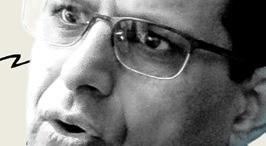
SPECIAL REPORT 57
SHEIKH MOHAMED BIN ZAYED AL NAHYAN, UAE PRESIDENT
"THE UAE IS HONOURED TO HAVE BEEN SELECTED AS THE HOST COUNTRY FOR THE WORLD TRADE ORGANIZATION MINISTERIAL CONFERENCE IN 2024. WE LOOK FORWARD TO FACILITATING CONSTRUCTIVE DIALOGUE BETWEEN WTO NATIONS AND STRENGTHENING INTERNATIONAL COOPERATION FOR A SUSTAINABLE ECONOMIC FUTURE"
SPECIAL REPORT
Lifestyle
Spotlight on

“For two centuries, we’ve shared a special and long-standing bond with Middle Eastern clients who have always had a passion for collecting watches and unique timepieces. They have a deep understanding and knowledge of the maison, mechanical movements and complications”
Bentley Batur
The Batur has begun real-world road trials across Europe following its debut at the Monterey Car Week in August. The limited series of 18 cars is due to begin deliveries mid-2023 after the completion of an extensive engineering programme.
These have already been reserved for customers

gulfbusiness.com January 2023 59
JAN
Christophe Ramel, regional director at Vacheron Constantin
home retail
has enabled home retailers to target and re-target the right customers based on their preferences and in-cart items p.64 23
Technology
A time-honoured legacy
CHRISTOPHE RAMEL, REGIONAL DIRECTOR AT VACHERON CONSTANTIN, TELLS GULF
 BY NEESHA SALIAN
BY NEESHA SALIAN
How would you define Vacheron Constantin’s legacy and why, in your opinion and experience, has it endured for more than 200 years?
Vacheron Constantin has truly endured the test of time. In 1755, 24-year-old master watchmaker, Jean-Marc Vacheron, signed
on his first apprentice, making his intentions clear of starting his business and handing down his skills. This contract is regarded as Vacheron Constantin’s birth certificate, making it the oldest watch manufacturer in continuous production for over 267 years faithfully perpetuating
a proud heritage of watchmaking excellence and stylistic sophistication through generations of master craftsmen.
Over the years, the maison has endured world wars, economic crises and, not to forget, the quartz crisis as well. We were unwavering and steadfast by remaining true to ourselves through tradition, heritage, the transmission of knowledge and innovation.
To date, we are a trusted name in the watchmaking industry. We aim to keep bringing creativity to our designs to remain relevant and keep up with the current times while still maintaining the maison’s uncompromisable values.

Tell us about the brand’s presence in the region.
The Middle East is one of the key markets for Vacheron Constantin worldwide. We really look at it as a priority in terms of development. In our constant quest for excellence, we want to offer our clients the ultimate quality in terms of timepieces of course, but also in terms of retail experience.
Currently, we are present across the UAE, Saudi Arabia, Qatar, Bahrain, Oman, Kuwait and Lebanon through standalone boutiques and authorised retail partners with our latest flagship that re-opened in The Dubai Mall.
For two centuries, we have shared a special and long-standing bond with Middle
Lifestyle / Watches gulfbusiness.com 60 January 2023
Christophe Ramel
BUSINESS HOW THE WATCHMAKER HAS ENDURED THE TEST OF TIME AND TIDE, AND HOW IT CONTNUES TO PAY HOMAGE TO THE MAISON’S DEEP ROOTS IN THE MIDDLE EAST
Eastern clients who have always had a passion for collecting watches and unique timepieces. They have a deep understanding and knowledge of the maison, mechanical movements and complications which brings us closer to them. When it comes to fine watchmaking, there is no compromise on excellence or longevity. We are grateful for the abundant opportunities and generosity this region has shown us and will keep on strengthening this relationship in the future.
Your flagship boutique recently re-opened at The Dubai Mall. What can customers expect to find that’s unique and new?
The Dubai Mall flagship boutique is special not only for its locally inspired design but also because it is one of three flagships around the world. The boutique pays homage to the maison’s deep roots in the Middle East and commitment to outstanding client service.
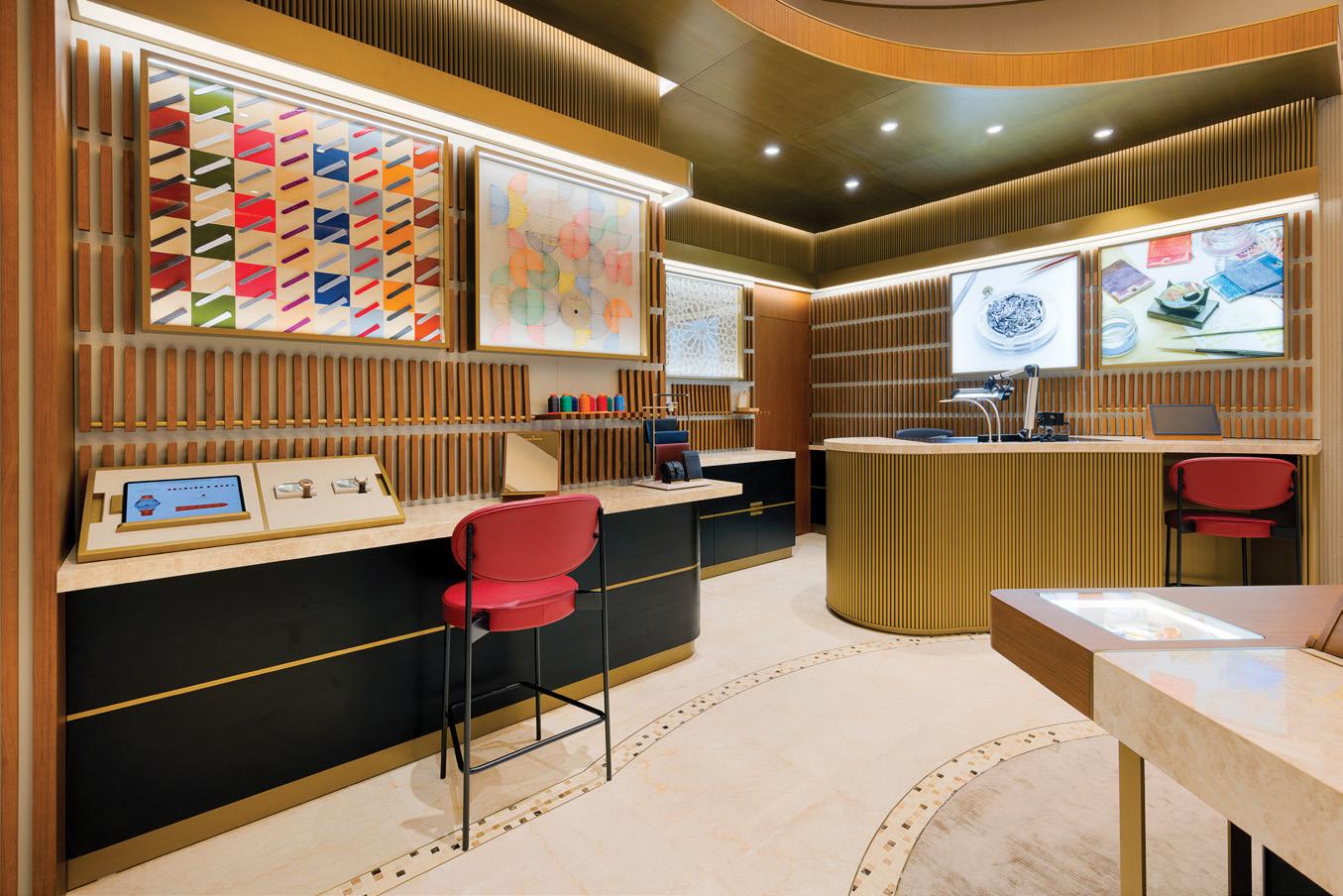
As a demonstration of the maison’s tribute to the Emirati community, the entrance is adorned with the Mashrabiya pattern,
traditional to local architecture, references to which continue inside the space offering a metaphorical and physical journey.
On this occasion, we collaborated with Emirati multidisciplinary designer Aljoud
Lootah. She designed four incredible creations inspired by the maison that are being displayed at the boutique showcasing the ultimate craftsmanship prowess that only human hands are capable of mastering.
Clients visiting the Dubai Mall flagship boutique will get a first-hand sensorial and immersive experience through the world of high watchmaking. For example, they will be able to take a digital and interactive tour through the archives of the maison via the ‘Chronogram’, meet with our in-house watchmaker, customise their own strap, or simply explore the fascinating world of Metiers d’Art.
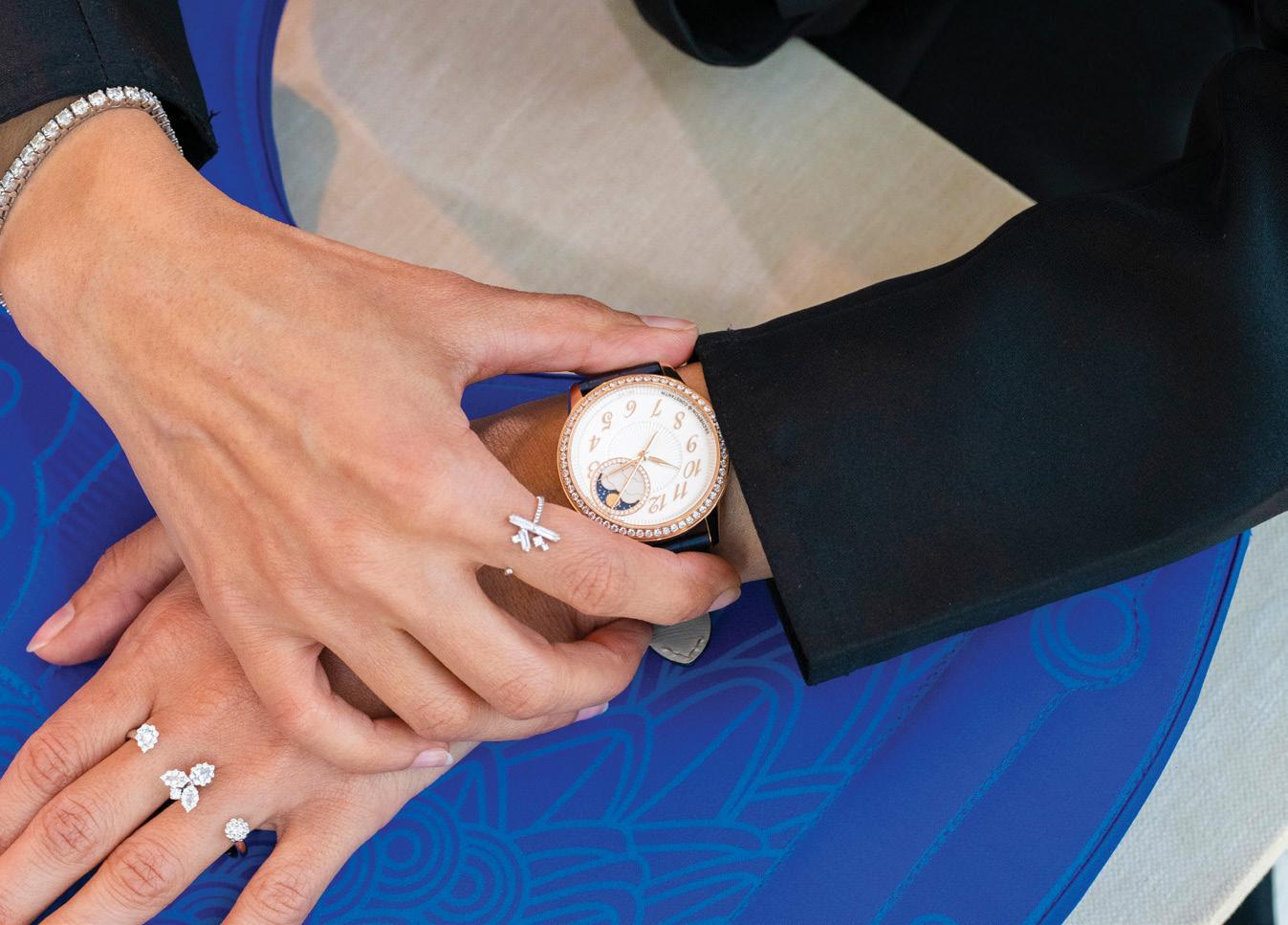
Tell us about the Historiques collection and the reissuing of the legendary 222. How does this reinterpretation pay homage to the brand?
Originally issued for the 222nd anniversary of the maison in 1977, the legendary 222 was designed by Jorg Hysek, marking a turning point in the history of the manufacture, as it made a remarkable foray into the world of “sporty-chic” watches.
Among the various existing 222 references, the one chosen to mark the return of this icon is the Reference 44018 in 18K 3N gold with a 37mm diameter. In keeping with the spirit of the Historiques collection, this new timepiece highlights Vacheron Constantin’s rich aesthetic and cultural heritage through a contemporary reinterpretation, endowed with the latest technical advances to optimise its reliability and comfort on the wrist.
Lifestyle / Watches gulfbusiness.com January 2023 61
“The Dubai Mall flagship boutique is special not only for its locally inspired design, but also because it is one of three flagships around the world. The boutique pays homage to the maison’s deep roots in the Middle East and commitment to outstanding client service”
Vacheron Constantin was one of the first-ever luxury watch brands to begin purchasing back vintage timepieces, refurbishing and selling them as part of the Les Collectionneurs series. Tell us what prompted this strategy. Our flagship boutique in The Dubai Mall is home to the first permanent Les Collectionneurs vintage timepiece collection in the Middle East. “Les Collectionneurs” was created explicitly to unite the passion and admiration of the maison’s connoisseurs and watch enthusiasts.
By using the manufacture’s considerable resources, we collect and restore a series of historical pieces, which are offered for sale in exclusive locations, attracting seasoned collectors as well as young generations eager to learn and delve into the art and history of watchmaking. We realised the interest that watch collectors have in these vintage pieces and wanted to offer them the unique opportunity to have access to them directly through the maison which is a trusted source.
Highlighting the precious link between past and present, we are proud to be enriching these passions and aspire to continue nourishing them with the maison’s history, art and culture.
Are there any other collections that are considered the vanguard of the brand?
We are fortunate to have a wide range of collections for men and women from simple to high complications, so we do not rely on any single collection.
While the Overseas collection has received some significant interest, we find our clients very appreciative of the other collections such as the Traditionnelle, Patrimony and Historiques, to name a few.
We recently launched the new Traditionnelle Moon Phase, an incredible women’s timepiece that is showcased at our Dubai Mall flagship boutique. Entirely paved with 773 diamonds, totalling approximately 4.8 carats, this elegant timepiece displays a high-precision moon phase, which requires no correction in 122 years. It’s a beautiful achievement that blends technicality and aesthetics.
How is the brand embracing the future of timekeeping?
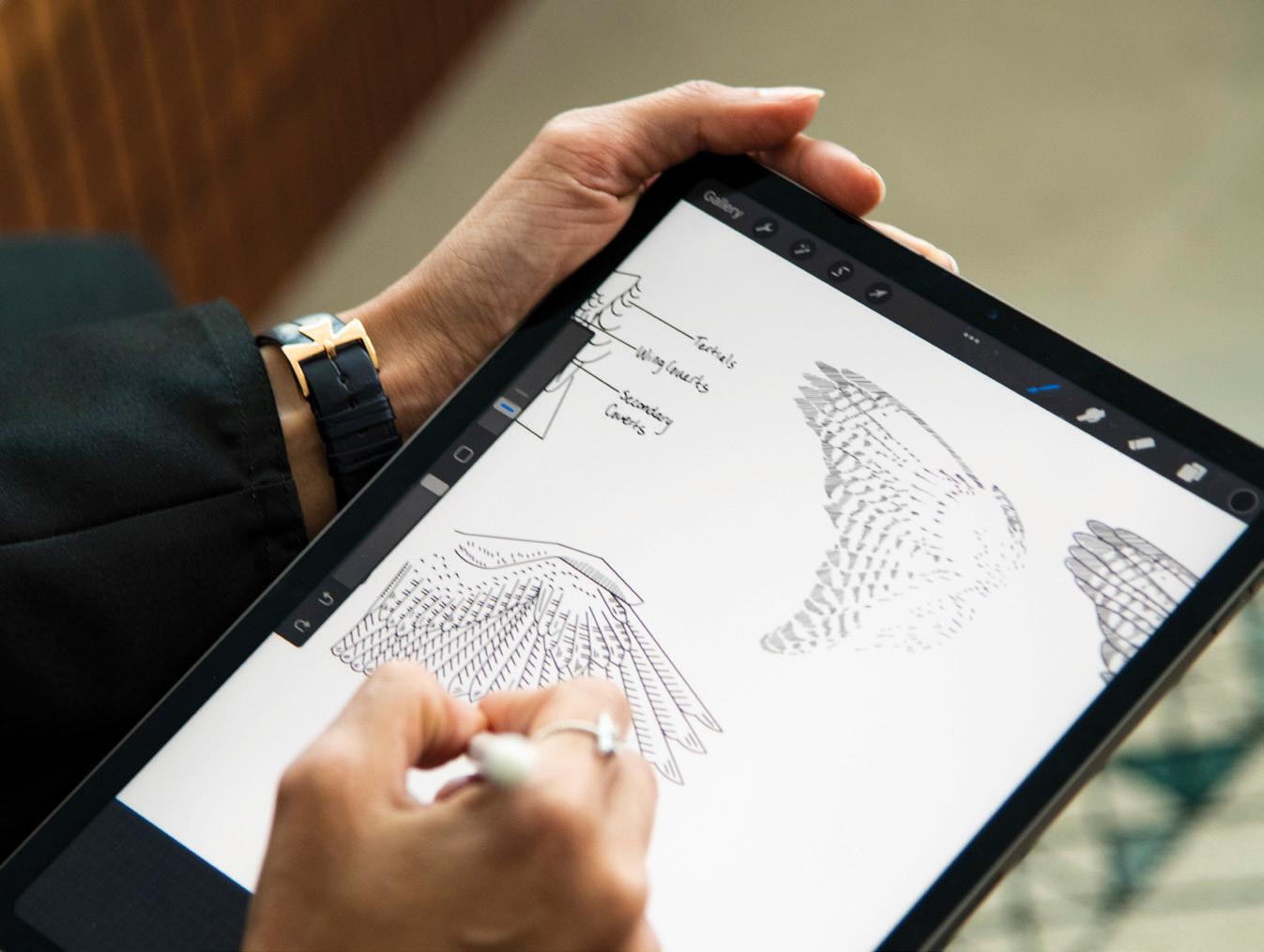
As Francois Constantin used to say, “Do better if possible and this is always possible”.
Our aim is to continuously push the boundaries of high watchmaking while staying true to our DNA to further emotions among connoisseurs, collectors, and clients. This passion for watchmaking brings us all together and translates into creating beautiful timepieces with the highest standards of finishing.
In terms of retail, we are developing a hybrid system for our clients to receive the same level of services both online and in boutiques worldwide. I cannot share more for now, but we have very exciting projects coming this year – both globally and in the region – which I am sure will please watch enthusiasts. Stay tuned.
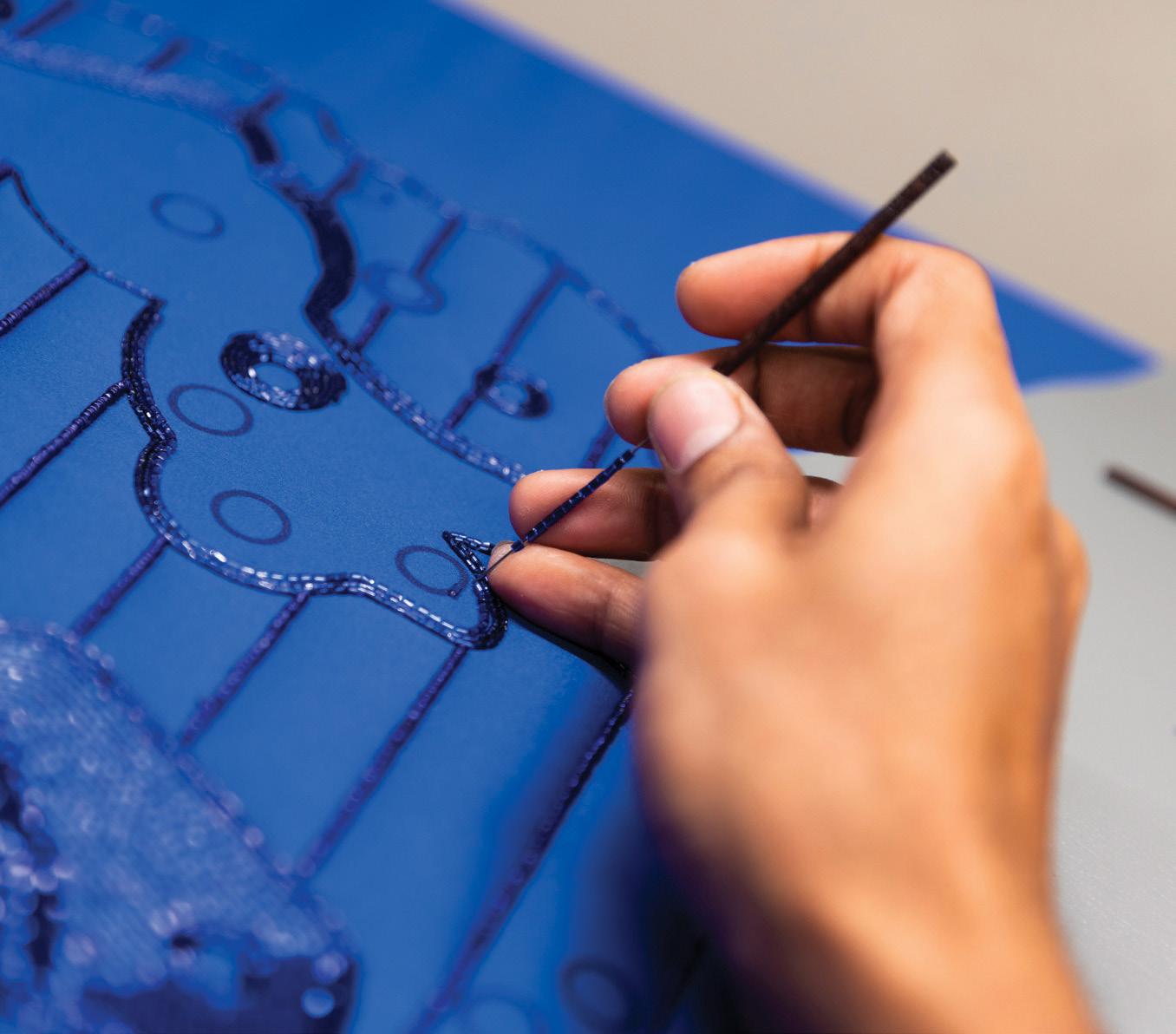
gulfbusiness.com 62 January 2023
OUR FLAGSHIP BOUTIQUE IN THE DUBAI MALL IS HOME TO THE FIRST PERMANENT LES COLLECTIONNEURS VINTAGE TIMEPIECE COLLECTION IN THE MIDDLE EAST
Redefining luxury
Setting new standards in luxury residential real estate, OMNIYAT launches ORLA, managed by hospitality brand, Dorchester Collection




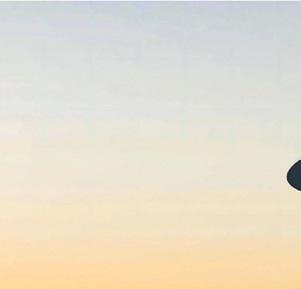


OMNIYAT, the luxury real estate developer, has inaugurated its new architectural masterpiece, ORLA , Dorchester Collection, Dubai. Designed by Foster + Partners and managed by hospitality brand Dorchester Collection, ORLA is situated on a beachfront plot at the apex of Palm Jumeirah’s crescent.

PREMIUM LOCATION
The luxury property enjoys a coveted position situated on a 29,000 squaremetre plot, with 270-degree views stretching from Dubai’s skyline to the turquoise waters of the Arabian Gulf.

ORLA, Dorchester Collection, Dubai, features 86 exclusive two- to fourbedroom residences, three sky palaces and one of the largest mansions on Palm Jumeirah. Each residence is adorned with oversized terraces, double-height ceilings (up to six metres) and decked with European appliances.

Mahdi Amjad, founder and executive chairman of OMNIYAT, says, “Our development philosophy is to create iconic,
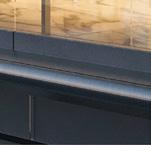
best-in-class projects through collaborations with industry luminaries. ORLA, Dorchester Collection, Dubai, is a signature property like no other that represents the epitome of style and will set the new standards for uber-luxury real estate. When it comes to introducing high-end luxury properties that surpass all global standards, OMNIYAT has built an enviable portfolio of uber-luxury
THE LUXURY PROPERTY ENJOYS A PRIVILEGED POSITION SITUATED ON A 29,000 SQUARE-METRE BEACHFRONT PLOT, WITH 270-DEGREE VIEWS STRETCHING FROM DUBAI’S SKYLINE TO THE TURQUOISE WATERS OF THE ARABIAN GULF

properties designed to cater to the refined needs of affluent investors. Dubai’s leading global position on the real estate map makes it the de facto destination for the ultra-high-net-worth community seeking unique projects that would further elevate their lives.”
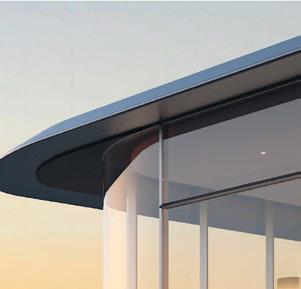
Christopher Cowdray, CEO of Dorchester Collection, adds: “We are delighted to be deepening our partnership with OMNIYAT through more residential projects. ORLA, our fourth project with OMNIYAT, will reimagine the property sector both in the Middle East and globally. It will be an iconic landmark with Dorchester Collection’s renowned hospitality offering.”
EXCLUSIVE AMENITIES
ORLA, Dorchester Collection, Dubai, also features amenities such as a private, resident-only 300 square-metre beach club, a large infinity, temperaturecontrolled outdoor pool, a private cinema, a fitness centre, a business centre with two meeting rooms, a boardroom, multifunctional events space, lounges and a library, among others.


BRAND VIEW
On home ground
There is a saying that states, ‘Home is where the heart is.’
Home spaces that we create have a direct impact not only on our moods, but on our overall well-being. Our lives revolve around them, something that we can decorate, furnish and redecorate. Each home has a unique story to tell and thoughtfully selected furnishings that help create that space is equally important too.
According to Researchandmarkets. com, the global home decor market size is expected to grow from $610.65bn in 2021 to $662.45bn in 2022 at a compound annual growth rate (CAGR) of 8.5 per cent. It is for this reason that the home retail sector is growing every year.



 BY ZUBINA AHMED
BY ZUBINA AHMED
More so, over the last few years, the home retail category has been positively impacted by more than just generational and economic factors. The market itself has become increasingly accessible to consumers, both through more retailers increasing their online presence as well o ering a better price range for goods.
gulfbusiness.com 64 January 2023
HOME RETAILERS ARE ALWAYS ON THE LOOK OUT TO EVALUATE OPPORTUNITIES TO EXPAND THEIR FOOTPRINT AND INCREASE THEIR ASSORTMENT TO ENSURE THAT THEY BECOME A ONE-STOP SOLUTION FOR ALL HOME RETAIL NEEDS
says Sameer Jain, CEO of Landmark Group’s Home Centre, which operates a network of 125 stores across the UAE, Saudi Arabia, Bahrain, Egypt, Kuwait, Oman, Qatar and India.
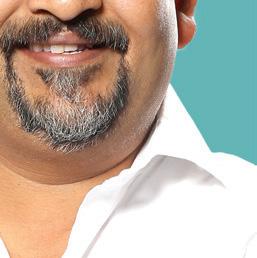

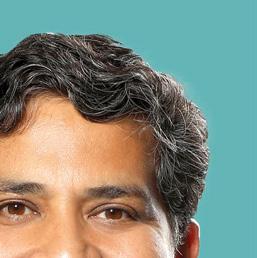
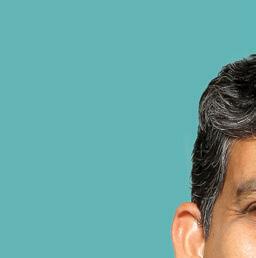
KEY TRENDS

When it comes to trends in the home retail sector, custom-made furniture is the next big thing in the region for renovating spaces. These days, a wide range of furniture can be customised to suit customers’ diverse interior design schemes.
A majority of retailers are leading the way in the direct-to-consumer custom furniture and decor market. With over 30 years of experience, Royal Furniture has been o ering a diverse portfolio of highend customised furniture designs and its own manufacturing units.

Richard Snowball, general manager, Royal Furniture says, “Since its genesis,

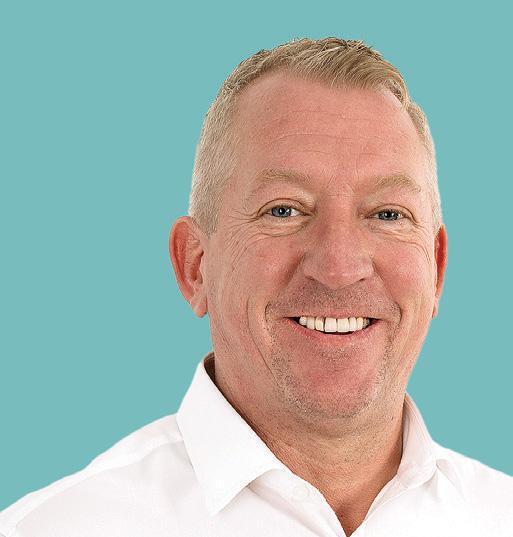

Royal Furniture has cemented itself as a market leader in the industry that has delved into classical styles. However, over the last few years, we’ve evolved with a better understanding of customer input and preferences which is heavily influenced by social media. Customisation has become pivotal to our adjusted business model as we scour the globe and source furniture and raw materials from more sustainable avenues to appease our
commitment to protect the environment. We have also brought in new talent with the right skillset to perpetuate our current business model and have updated much of our catalogue with new sofas in di erent designs and colours.”


The ideal target audience for the home retail sector are the ones looking to purchase quality furniture, catering to all designs, ranges, and budget.

Another regional homeware brand Dwell recently opened their 26th store in the GCC and 4th store in the UAE. Rasool Taj, Dwell’s head of merchandising and buyer, tells us about its USP. “We want to be known as a home store that can help a customer buy, share knowledge and tailor what they buy to their needs. For example,

“To remain relevant and successful, we as a brand constantly evolve and adapt to the changing consumer needs,”
customer-base, whilst fulfilling our
Lifestyle / Retail gulfbusiness.com January 2023 65
“We conduct consumer research studies every year and based on the insights we receive from our customers as well from potential customers, we take actions to fulfi ll these needs”
Sameer Jain , CEO of Landmark
Group’s Home Centre
Richard Snowball , general manager, Royal Furniture
we have a bedding brand called Paradies, it is one of the most superior duvet and pillow brands in the world. If you are a hot sleeper we have cool comfort, if you have neck pain, we have a pillow that can be adapted to suit you. This brand like many others is exclusive to Dwell and o ers something unique to our customers you cannot get elsewhere.”

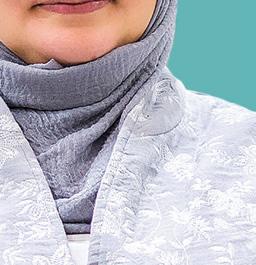

ROLE OF TECHNOLOGY
If quality and value for money is something retailers consider to be as important, technology is also a key enabler for most businesses too. Jain agrees, “We as a brand continuously identify some of the best practices by global retailers in terms of their current digital capabilities and ensure

we invest in these capabilities to build a future ready organisation both on back end and front end. Few examples include launching BNPL services in stores, single view of inventory and WhatsApp Business, among others. We are also constantly evaluating new ideas and technologies such as Point-of-sale based marketing solutions, self-check-out and dynamic web-content
optimisation among others. In terms of providing better post-purchase experience to our customers, we invest in technologies/platforms which help us optimise our delivery lead times and addressing our customer queries at the earliest.”

Snowball elaborates, “We have integrated multiple technologies across our operations and retail stores. The first is Truview, which enables the customers to customise a sofa or bed online and see what the end product would look like. We have also incorporated tech-infused furniture with wireless chargers, speakers, smart lights, USB ports and much more. Furthermore, in collaboration with Dubai Audio, we have launched our home theatre system which is completely voice-controlled. The world has already transitioned to a ‘Phygital’ world, which is a mix of physical in-store shopping and online shopping. Both our brands, Royal Furniture and The Home, have a strong online as well as o ine presence.”

Technology has also allowed home retailers to target and re-target the right customer based on their preferences and in-cart items.
Taj adds: “We have tried over the past couple of years to o er a seamless experience from stores to online. Whether that is with product, range or price we have treated both platforms the same. There is no denying that with the pandemic there was a huge move to shop online however home product is still something you want to see and that has really helped us shape what we do in our stores. We have also been actively using data-driven technologies to curate market strategies for our clients in a more e cient way, aiding brand growth.”
RECALIBRATING THE LANDSCAPE
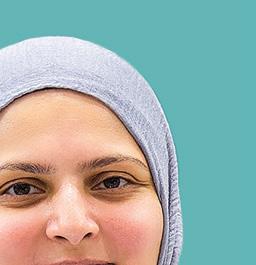
Brands need to be in sync with consumer demands. Jain says, “We conduct consumer research studies every year and based on the insights we receive from our customers as well from potential customers, we take actions to fulfill these needs. For example, one of the findings from the consumer research was that the importance given by consumers for choice and quality has significantly gone up as compared to pre-Covid times. Accordingly, we made appropriate changes in our assortment to reflect these current needs.”
Richard Snowball from Royal Furniture explains further, “Ideally, hyper-customisation and hyper-personalisation for the customer is the way to go. Customer-centric operations and activations are the key to unlocking market potential. Moreover, customer feedback and what you do with it is imperative, not only does it send a positive message to the customer but also builds credibility and trust for the business. Hence, catering to their feedback is important.”
Social media has also been central to the growth of ‘lifestyle brands’ in homeware, says Taj. “Its role is unparalleled among younger consumers. It is the marketplace for trend-driven, fashion-forward homeware, which has boomed in recent years. In fact, when searching for design inspiration within the planning of a space, nearly half of consumers aged 16 to 34 years old look to social media (far surpassing the following closest factor – in-store displays) as the top source of influence for this age band. The highly visual nature of home accessories makes it very compatible with platforms like Instagram and Pinterest.”
that
Lifestyle / Retail gulfbusiness.com 66 January 2023
“We have integrated multiple technologies across our operations and retail stores. The fi rst is TRUVIEW, which enables the customers to customise a sofa or bed online and see what the end product would look like. We have also incorporated tech-infused furniture with wireless chargers, speakers, smart lights, USB ports and much more”
Rasool Taj , Dwell’s head of merchandising and buyer
FUTURE OF HOME RETAIL
An omni-channel approach is necessary for the future of the retail industry. Being available at every customer touchpoint is imperative, whether that’s online, digital, social media or in-store. In terms of future plans, home retailers are always on the look out to evaluate opportunities to expand their footprint and increase their assortment to ensure that they become a one-stop solution for all home retail needs.
Jain reiterates, “In the last three years, we have opened close to 10 stores taking
our overall store count to 70. Our e-commerce website and app attract more than 10 million sessions every month. We have made significant changes in our merchandising and store layouts for ease of shopping for consumers and we will be rolling out these changes to most of our stores in the coming one to two years. We also introduced endless aisles in our stores for consumers to browse through our online assortment which is much bigger.”
The UAE’s home retail eco-system is fairly advanced compared to markets like US or UK. Taj states, “Coming from the UK and having lived and worked in Europe, the Far East and now the Middle East I can honestly say that the choice, style and vision that retailers have here in the home market

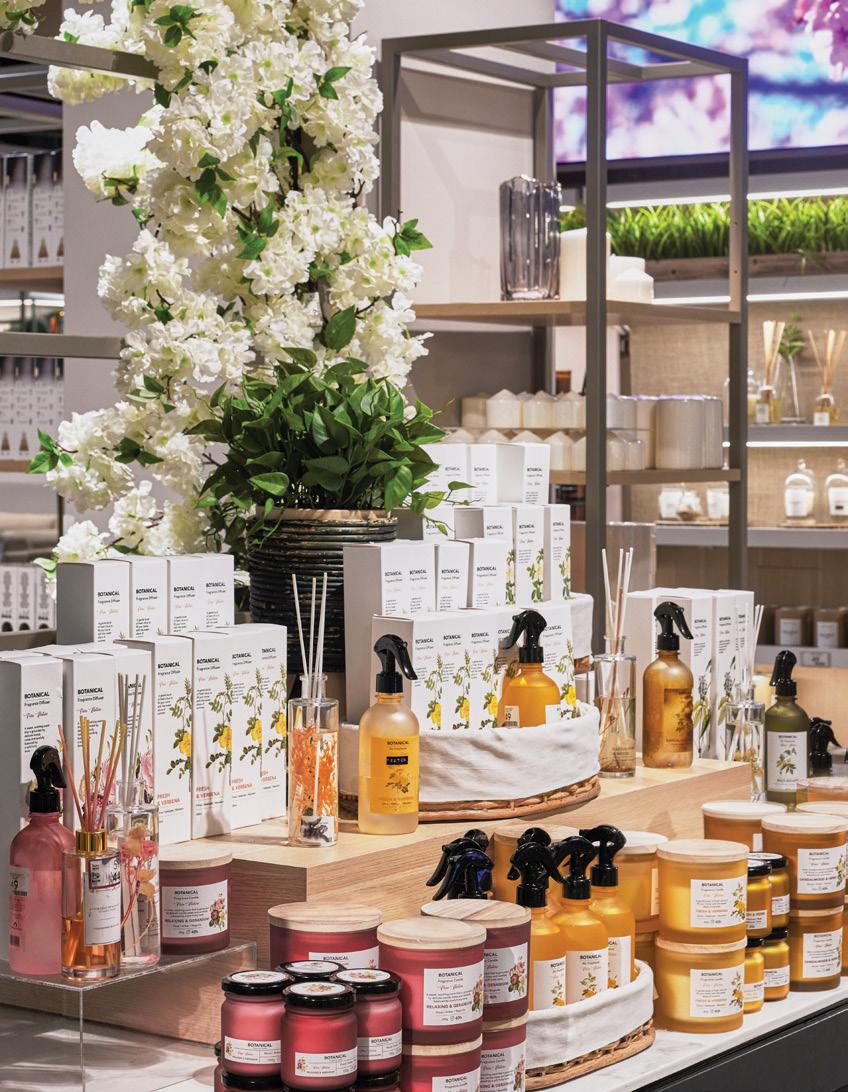
is far superior than in other countries. Whether you are new to the country and need to create your very first home, there are choices for everyone.”
Creating an aesthetically pleasing home has never been more important. The future of home retail is bright, every one of us will always need something for our homes at all stages of our life. Snowball concludes, “ Our prime goal has always been researching the market and focusing on creating products that simplify everyday life of our customers. Through this we are filling the gap for the new surge of nuclear families, newly married couples and expat youth in the region who are setting up their home for the first time which in turn has led to an increase in the demand for furniture products.”
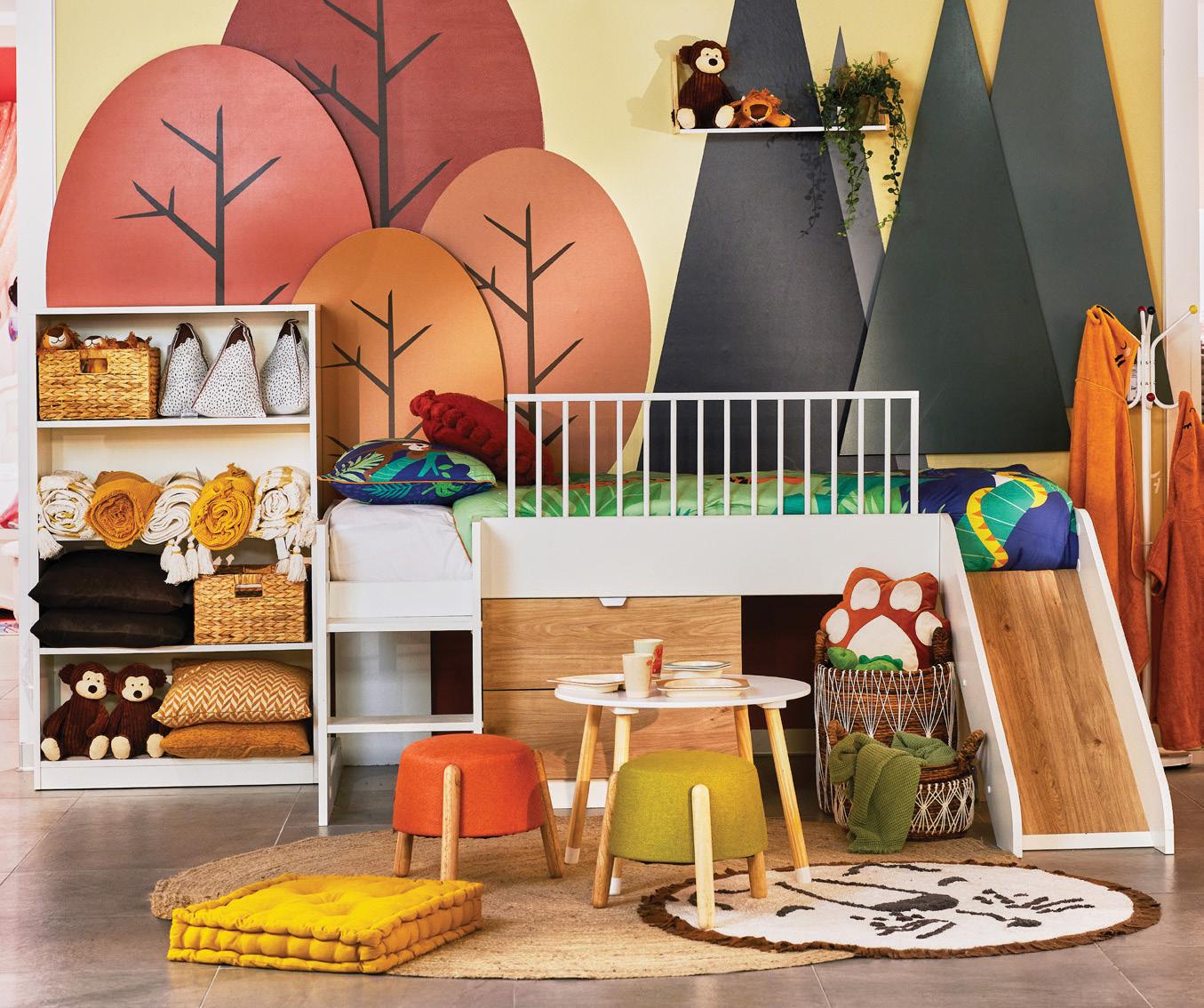
Lifestyle / Retail gulfbusiness.com January 2023 67
“We have tried over the past couple of years to offer a seamless experience from stores to online. Whether that is with product, range or price, we have treated both platforms the same”
A SPECTACULAR LINE-UP
DUBAI’S RETAIL CALENDAR FOR 2023 IS PACKED WITH 18 EVENTS THAT ARE DESIGNED TO MAKE DUBAI ONE OF THE BEST PLACES IN THE WORLD TO LIVE, WORK AND VISIT
BY ZUBINA AHMED
The Dubai Festivals and Retail Establishment (DFRE) has unveiled an exciting line-up of citywide events and activities in Dubai’s 2023 Retail Calendar.


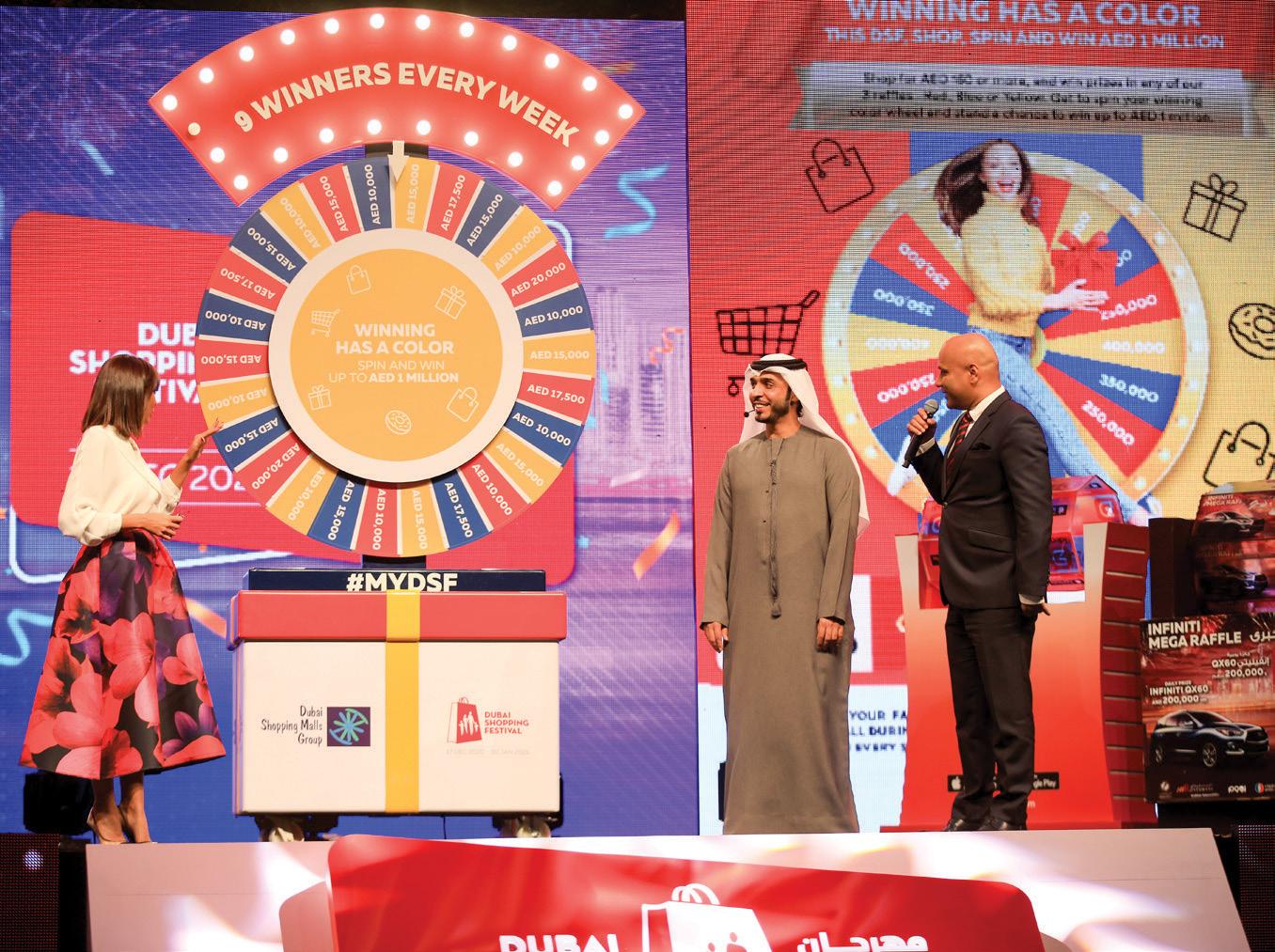
The calendar is packed with a total of 18 events designed to make Dubai one of the best places in the world to live, work and visit. The line-up includes the return of Dubai Shopping Festival, Dubai Fashion Season Spring/Summer and Fall/Winter Collections, Ramadan and Eid in Dubai, Dubai Food Festival, Dubai Summer Surprises and more. Dubai Fitness Challenge will also return for a seventh edition this year.
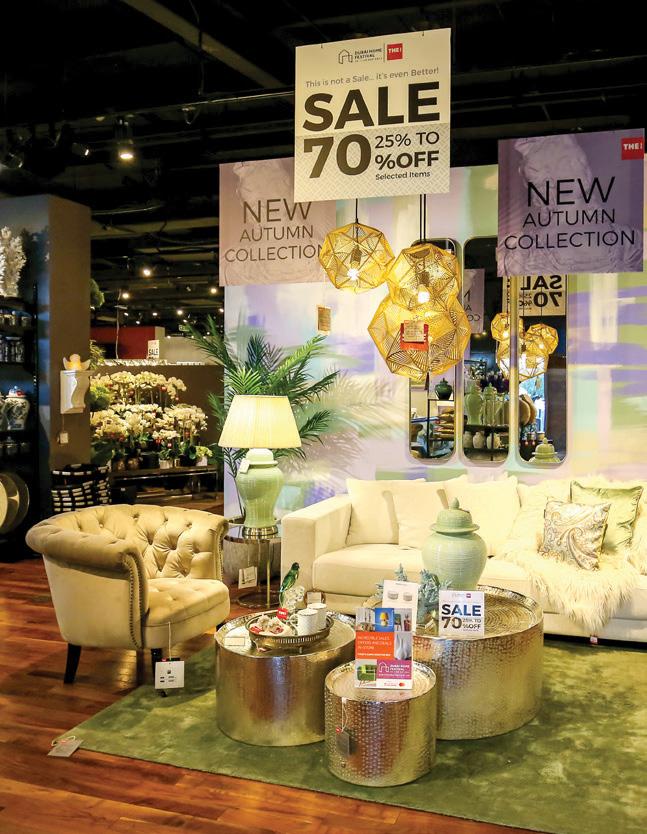
Lifestyle / Shopping gulfbusiness.com 68 January 2023
“The Retail Calendar encompasses a packed 12 months of seasonal festivals and campaigns that support our thriving retail community and drive sustainable growth. Aligned with the interests of our citizens and residents, the calendar is also tailored

to our key inbound business and leisure visitor markets, enabling us to capitalise on the increased footfall we anticipate in Dubai over the coming year,” says Ahmed Al Khaja, CEO at DFRE.
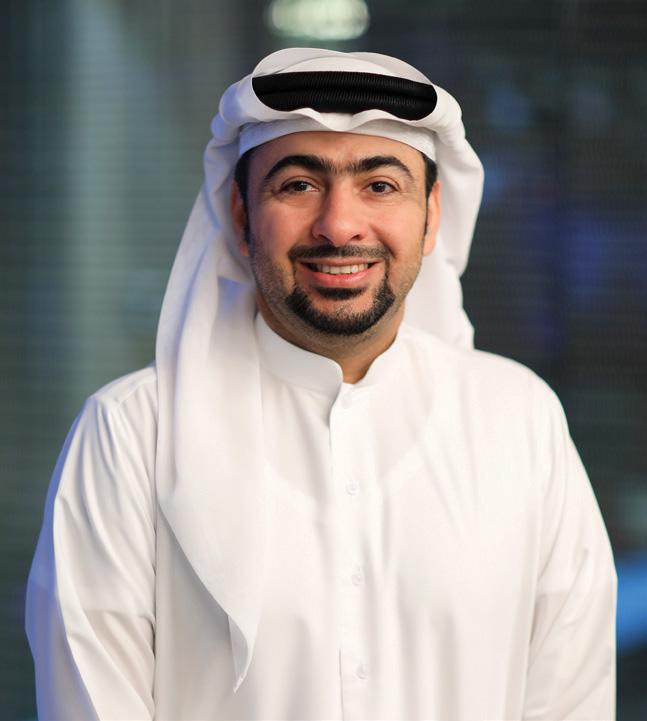
He adds: “In 2023, we will continue to create exceptional events and activations that support Dubai’s position as a world leader in retail and entertainment experiences. The ongoing success of our retail calendar is testament to the unwavering support we receive year a ter year from our partners, stakeholders and sponsors. Looking ahead, thanks to the strength of these partnerships, it’s clear that the city is ready to deliver another year full of unforgettable experiences for everyone to enjoy.’’

2023 15 DEC - 29 JAN 2022 28 APR - 07 MAY 29 JUN - 03 SEP 04 DEC - 25 DEC OFFERS ONLY PERIOD 01 DEC - 03 DEC UAE NATIONAL DAY 28 OCT - 26 NOV 23 MAR- 27 APR 29 JUN - 09 JUL 20 JAN - 29JAN CHINESE NEW YEAR 3 NOV - 16 NOV 13 OCT - 27 OCT 12 JUN - 28 JUN OFFERS ONLY PERIOD 27 JAN - 29 JAN FINAL SALE 07 AUG - 03 SEP 1 SEP - 3 SEP FINAL SALE
FASHION SEASON FALL/WINTER COLLECTION ACROSS Q4
DUBAI FASHION SEASON SPRING/SUMMER COLLECTION ACROSS Q1
DUBAI
DFRE’S 2023 RETAIL CALENDAR FEATURES THE KEY FESTIVALS AND EVENTS Lifestyle / Shopping gulfbusiness.com January 2023 69 [2022] [2023]
COURTESY: DFRE
Ahmed Al Khaja
The SME Story

A dedicated hub for the regional startup and SME ecosystem
INTERVIEW
Leveraging strengths
We meet four entrepreneurs who have leveraged their expertise to diversify their offerings, launch a tech startup and set up a laundry service
it struck other businesses. The launch required us to be in a better position financially and consider expanding the scope post recovery. Our plans to expand are finally surfacing a ter we successfully jumped back with twice the growth since the pre-pandemic days to extend the best quality and convenience post ShoeCare’s R&D phase of almost a year.
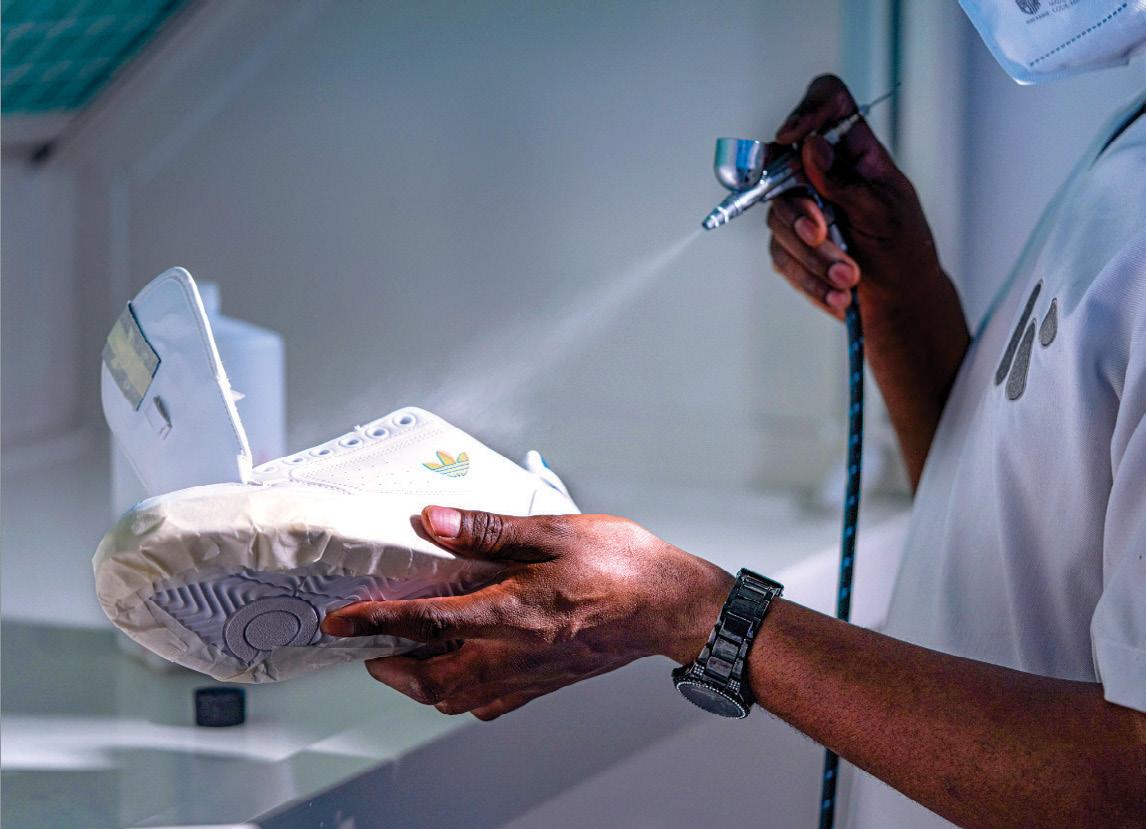
What are some of the challenges you faced when starting o ?
The biggest challenge was finding the right talent as ShoeCare utilises highlyskilled labour. When sourcing new talent, Rami Shaar, CEO, Washmen (ShoeCare)
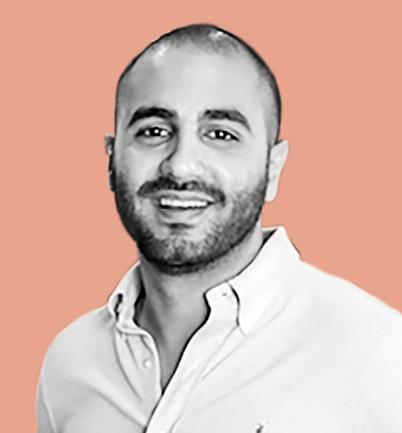
it is essential that we leverage their skills and readjust their mentality to the way we work and the value propositions that give us an edge.
Since we’re just starting off, it was essential to introduce ShoeCare at a competitive pricing and only focus on volumes during the initial phase. When you play the volume game, more o ten than not, it’s not sustainable and one can only find opportunities to make it financially sustainable later down the road.
Hence, a significant challenge was also to have the financial means to be able to absorb losses.
What inspired you to start ShoeCare as a vertical?
Considering the primary business o ering of Washmen is laundry, ShoeCare is a natural complement to our customer base. Expansion into the category of shoes has been on our mind for a few years, but the launch had to wait until we found highly skilled cra tsmanship, which is not readily available in the market. The introduction was originally scheduled before the Covid-19 pandemic which was further delayed as the hit impacted us, just like
gulfbusiness.com 70 January 2023
JAN 23
Give us an overview of your operations.
Our operations have been streamlined to simplify the customer experience from start to finish. The seamless journey begins with a free download of our app, then placing an order and leaving the Washmen bags with your laundry and shoes at the door.
Bags have been categorised into different colours for various services such as press only, wash and fold, clean and press, HomeCare and ShoeCare. Once picked up by our drivers, the bags are taken to the facility and segregated for di erent operations with the use of hightech machinery where each is given the care it needs – right from washing temperatures to following the instructions
given on the care label. Before leaving the facility, every order is still passed through a Washmen Quality Check.
In the case of ShoeCare, our team of experts assess the shoes overnight to evaluate the requirements and discuss the scope of work with the customer the next day.
Depending on the work required, it will be directed to the right workstation, ranging from a stain cleaning station, hand washing station, to a suede and leather cleaning station and also the restoration stations where we have cra tsmanship of colour works and other complex processes.
What is unique about this concept? What’s unique about ShoeCare is our
transparent pricing, which is not a general trend seen in the industry. Our indications on pricing are very reasonable and clear, leaving no reason for customers to turn around the counter and negotiate. We also o er same day pickup and a turnaround as quick as three days.
What are your future plans?
Washmen is set for some exciting growth plans since our current growth has been much better than expected. We were quite conservative with our projections but with the very strong demand that we’re witnessing internally, we will soon see the external conversion.
We have also accelerated our plans to open up a dedicated facility this year. Construction of a 10,000 sq t facility is ongoing for ShoeCare which will later be explored for other categories of accessories as well.
technology service provider, which o ers development services in blockchain, crypto, NFTs and the metaverse.
What gap did you see in the market that necessitated the need for Patang? Low penetration of digitalisation in shipping and logistics industry is the major challenge in the industry. Upon further drilling down, the cargo visibility for multi-modal transportation is a major hurdle for customers and logistics service providers.
Today, enterprise resource planning (ERPs) doesn’t solve business challenges because customers’ expectations are di erent from the organisation's internal digital strategy.
What are some of the challenges you faced when starting o ?
In the logistics tech business, supply chain digitalisation is not a high priority for most customers. It has taken us a lot of time to change this mindset.
Our o er to customers is to digitise their interactions and reduce huge operational costs with real-time interactions through multi-channel platforms such as WhatsApp, social media and emails. In terms of the blockchain and metaverse vertical, the Web3 industry is still in the early adoption stage with limited participation.
What is Patang’s core business model?
Patang is a tech startup that provides digital platform solutions in logistics. We aim to transform the logistics industry with our real-time global visibility platform and digitising customer interactions through its multiple logistics solutions. Along with this, we are a Web3
Most organisations consider customer interaction as the last part of their journey a ter setting up internal process with their ERPs. Customer expectations have changed from having information on the desktop or website to getting notified on WhatsApp or mobile apps.
Patang integrates multiple systems by connecting data providers, shipping lines, telematics service providers, ERP systems and pushing real time information to customers on their preferred mediums.
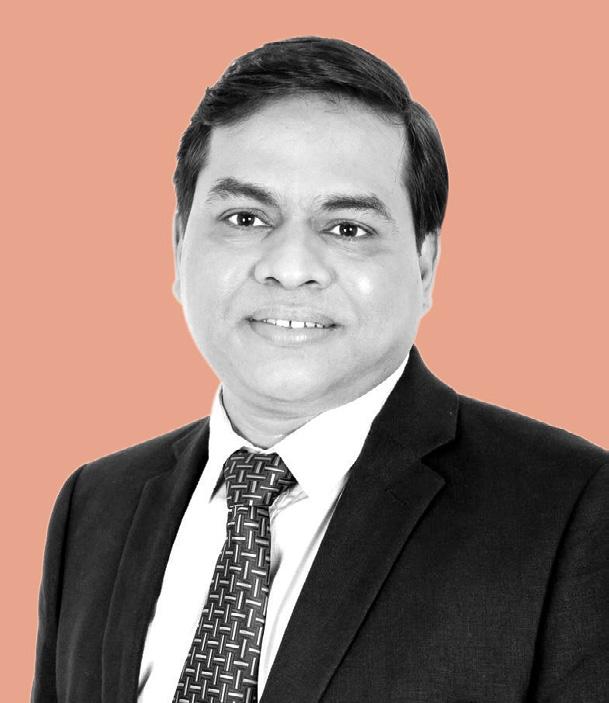
gulfbusiness.com January 2023 71
The SME Story
Prabhakar Posam, CEO, Patang
CONSTRUCTION OF A 10,000 SQ FT FACILITY IS ONGOING FOR SHOECARE WHICH WILL LATER BE EXPLORED FOR OTHER CATEGORIES OF ACCESSORIES AS WELL
CUSTOMERS' EXPECTATIONS HAVE CHANGED FROM RECEIVING INFORMATION ON THE DESKTOP OR WEBSITE TO GETTING NOTIFIED ON WHATSAPP OR MOBILE APPS
Corporates have their concerns over compliance issues and are unable to understand the difference between crypto trading and blockchain as a technology. We help customers understand these technology concepts and how they
can make use of Web3 technologies to o er unique solutions to the market.
Tell us about your operations in the UAE and overseas.
We are headquartered in the UAE and
started our sales and operation from Dubai. We have operations and sales o ces in multiple cities in India.
We are also setting up offices in Middle East, Europe, US and Singapore region. With our strong global network, we will serve our global customers e ectively.

were unwieldy to use, while others had revenue structures that weren’t working for the suppliers that they relied on to provide their range of services.
Apps, which have an excellent central o ering and are profitable in this market, have been trying to integrate other services without a sustainable model for doing so. Promises have been made to investors that this “everything for everybody” strategy will pay dividends. However, when users find that they aren't as simple to use or seamless, they become weary of these apps, and as a result, returns aren’t as anticipated.
We started Astra Tech, using the learnings from observing these challenges.
How is Astra Tech o
in such a scenario?
and businesses. It will also bring together selected consumer technologies, products and services, specifically designed to address ‘platform fatigue’.
What are some of the challenges you faced when starting o ?
We started Astra Tech at a time when the macro economy wasn’t the strongest. To fulfill our ambition, we identified that we needed to commit to finding the right resources and the right customer-centric platforms we could work on.

It was a challenge to seek out and understand how we could work with different teams and suppliers. We also needed to source and recruit the right talent and teams.
What inspired you to start Astra Tech?

We wanted to combat “platform fatigue” and create a platform that does not place the needs of users above partners or suppliers, and vice versa. We wanted to o er something with value to everyone. We noticed that this wasn’t being provided by the apps currently available. Some
ering value
We are building an ‘ultra platform’ featuring an interconnected digital ecosystem. This platform will bring together a multitude of services on one easy-touse platform, ultimately simplifying the way people complete daily tasks – from how we communicate, to shopping and paying for goods and services by providing connectivity between consumers
What are some of the growth, acquisition and expansion plans you have in the pipeline?
We have announced the acquisition of Rizek, a homegrown platform for ondemand personal and home services, which is established in the UAE, Saudi Arabia and Egypt.
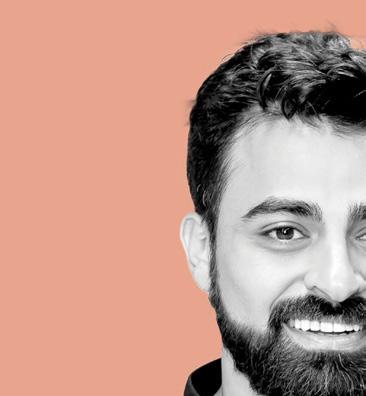
Rizek will give us the access to its on-demand personal and home services
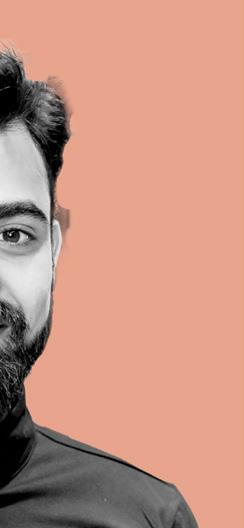
gulfbusiness.com 72 January 2023 The SME Story
“PATANG INTEGRATES MULTIPLE SYSTEMS BY CONNECTING DATA PROVIDERS, SHIPPING LINES, TELEMATICS SERVICE PROVIDERS, ERP SYSTEMS AND PUSHING REAL TIME INFORMATION TO CUSTOMERS ON THEIR PREFERRED MEDIUMS”
Abdullah Abu Sheikh, Founder and CEO, Astra Tech
across various segments including healthcare with home PCR tests and Covid-19 vaccinations.

What are your predictions for how the fintech and e-commerce sectors in the region will evolve going forward? Most apps with a specific primary function are attempting to inorganically
change user behaviour by entering various markets.
Businesses are jumping from one o ering to another, becoming Jack of all trades’ in an attempt to push their users into a profitable unit economic behaviour. This is a strategy that is certain to fail if the fundamentals are not addressed properly.
 Helal Lootah Co-founder, Lune
Helal Lootah Co-founder, Lune


What inspired you to start Lune?
We founded Lune to solve an issue we have personally experienced while trying to understand our bank statements. In fact, it was a real struggle to remember what a transaction line related to in the bank statement when these transactions are usually described in acronyms and symbols. Also, we thought there has to be a better way to setup our spending budgets and goals without having to decrypt raw descriptions and use separate spreadsheets. So, we currently provide a solution that takes into account the local specifics of our region, to help make data ultimately useful for our bank clients.
What is the core concept of Lune?


Lune’s mission is to help banks and other financial institutions augment the




experience of their customers. Through the transaction data enrichment solution, our bank clients are converting raw transaction data into valuable insights, helping their customers understand their spending and income patterns, set budgets and goals, and overall gain more control over their finances.
What are some of the challenges you faced when starting o ?

Just as in every new endeavour, wearing all the hats of a business can be especially exhausting. From getting the idea to a tangible state, while navigating the regulatory landscape and refining it to better fit the realities of the market and establishing the processes for its continuous innovation, has been quite a journey. Additionally, one of the major challenges we faced when starting the business, was figuring out how to fund the endeavour –we didn’t require a large investment from the get-go, but we had to make sure we were in position to keep the business running for the long term.
Tell us about your operations and the funding you have received. We’re headquartered in the UAE and we consider the GCC countries as our home market, with operations in Saudi Arabia,
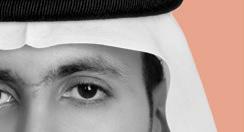
WE SUCCESSFULLY RAISED $850K IN A PRE-SEED ROUND
Bahrain, Oman and Egypt. We are keen to launch operations in the extended Middle East and North Africa (MENA) region as we continue developing and refining our localisation approach to provide value to our clients in their respective locations. Regarding funding, recently, we successfully raised $850k in a pre-seed round backed by Dubai Future District Fund, Flat6Labs and other angel investors.

What are your growth plans for the next 12-18 months?
We have identified a number of key growth factors to continue serving our clients and improving our value proposition with a set of new features that will be announced soon. We have also seen tremendous interest from various financial institutions, fintechs and other players in the MENA region.
What are your predictions for how the digital banking space will evolve over the next year?
We have witnessed a significant focus on digitalisation across all industries over the last few years, and the banking sector has undeniably been at the forefront it. We believe that our focus on data usability could help simplify processes, cut costs and open opportunities to various services of added value that are tailored to the context and needs of the digital banks’ customers.
gulfbusiness.com January 2023 73
“WE HAVE ALSO SEEN TREMENDOUS INTEREST FROM VARIOUS FINANCIAL INSTITUTIONS, FINTECHS AND OTHER PLAYERS IN THE MENA REGION”
The SME Story
BACKED BY DUBAI FUTURE DISTRICT FUND, FLAT6LABS AND OTHER ANGEL INVESTORS
WE ARE BUILDING AN ‘ULTRA PLATFORM’ FEATURING AN INTERCONNECTED DIGITAL ECOSYSTEM
What inspired you to start this business?
We saw a massive gap between the personal nature of health and wellness and the benefits people get from their insurance. We wanted a wellness experience that provides people a gateway into impacting their health and wellness while enjoying the rewards.
Wellx thrives on the principle of prioritising prevention by dealing with problems before they develop. Our wellness experience helps our users lead healthier, happier, lives. The entire globe is shi ting to personalising every product or service they use, and we want to make pursuing a healthy lifestyle fun, impactful, and rewarding.
What are some of the challenges you faced when starting o ?










By the nature of our solution, awareness was a significant element we had to focus on. People must first be aware that they contribute to their health and wellbeing every day, from small choices to bigger ones. Awareness is the first step to improving your health and wellbeing. We’ve been growing rapidly, and as we progress through this journey, we aim to have a global perspective shi t on wellness and completely change how people perceive insurance.





What is the core concept of Wellx and how does it work?


Wellx is built upon improving health


and wellness to help people achieve the best versions of themselves. Insurance helps us make it a reality. We reward our users for taking care of their health and actively impact their wellbeing. Consistently meeting the health goals they choose to pursue will enable them to enjoy monthly cashback, rewards, and exclusive gi ts. Users can enjoy our curated wellness ecosystem that includes first-class health and wellness services and products to promote healthy habits and hobbies.
What are some of the growth and expansion plans you have in your pipeline?
Our expansion is a mark of the dynamic market we are in. We were recently a part of the Sanabil 500 Accelerator programme in Saudi Arabia where we received investment and mentorship. We will be looking to expand into the Saudi market soon.
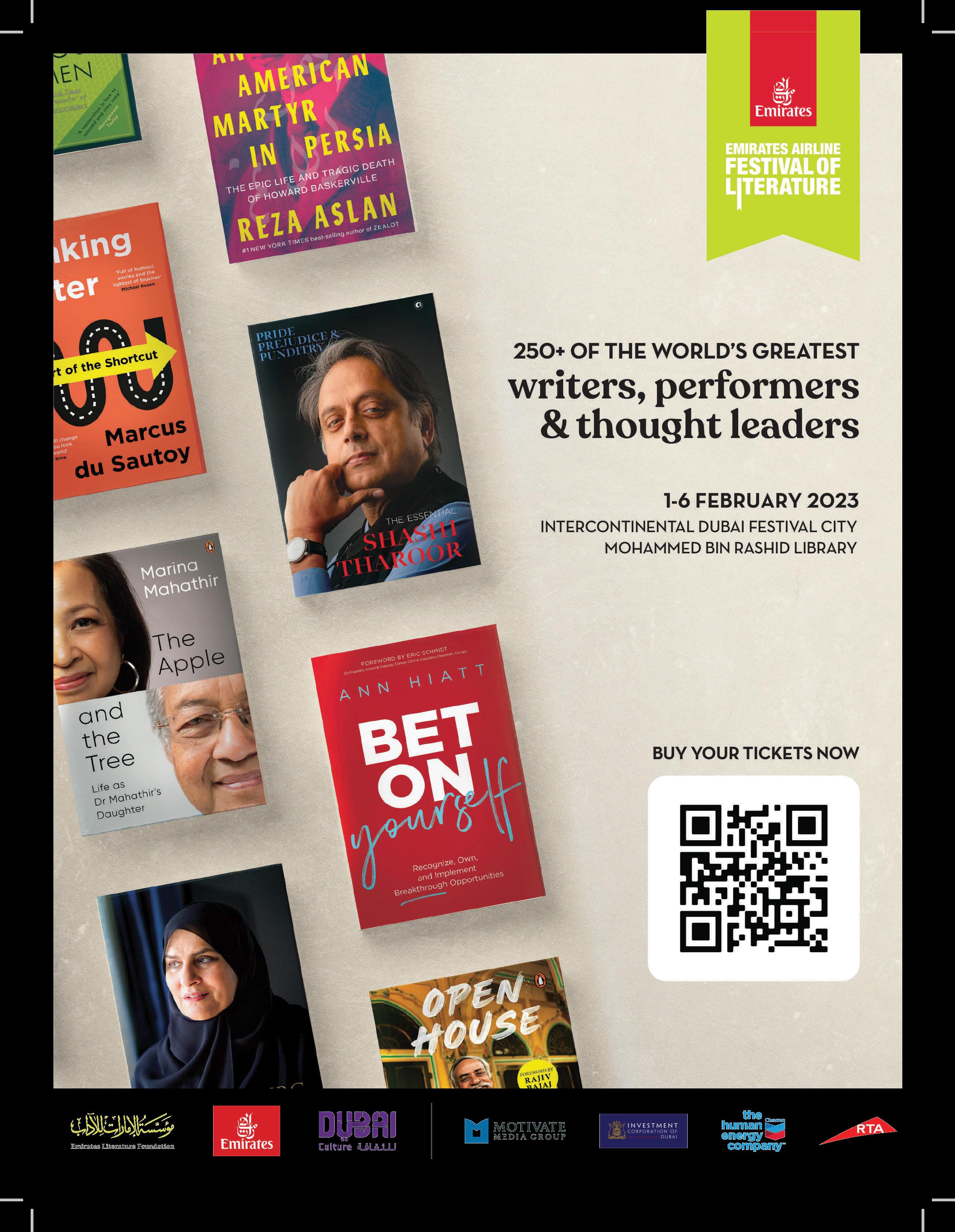
As consumers continue to look to the brands they love, for example Fitbit with Wellxfit, Whoop, and some more very exciting partners that Wellx is onboarding, we will continue to innovate with our insurance products, helping customers achieve their personal wellbeing goals, and using insurance as a way to incentivise good behaviour.
What are your predictions for how the insurtech space in the region will evolve going forward?

Insuretech 1.0 was all about pricing and comparison, and providing end-user the best policies at the cheapest price. The space has matured, and insuretech 2.0 has seen product specialist companies work with incumbents in bringing a whole new dimension of value to endusers. From the Wellx perspective, the insurtech space is now playing a more dynamic role with a focus on gamification of health and wellbeing. There is an incredibly large community of people that are actively taking care of your health and wellbeing, and many more that are looking to join in.
Insuretech 3.0 connects the world of insurance to Web3. With one eye on the future, Wellx already has the ability for consumers to build avatars, and create a fun and gaming environment of their wellbeing in the real world, while tracking their progress and getting incentivised across many di erent platforms.
gulfbusiness.com 74 January 2023
The SME Story
“OUR EXPANSION IS A MARK OF THE DYNAMIC MARKET WE ARE IN. WE WERE RECENTLY A PART OF THE SANABIL 500 ACCELERATOR PROGRAMME IN SAUDI ARABIA WHERE WE RECEIVED INVESTMENT AND MENTORSHIP. WE WILL BE LOOKING TO EXPAND INTO THE SAUDI MARKET SOON”
WE REWARD OUR USERS FOR TAKING CARE OF THEIR HEALTH AND ACTIVELY IMPACT THEIR WELLBEING. CONSISTENTLY MEETING THE HEALTH GOALS THEY CHOOSE TO PURSUE WILL ENABLE THEM TO ENJOY MONTHLY CASHBACK, REWARDS, AND EXCLUSIVE GIFTS
Vaibhav Kashyap and Javed Akberali , co-founders, Wellx


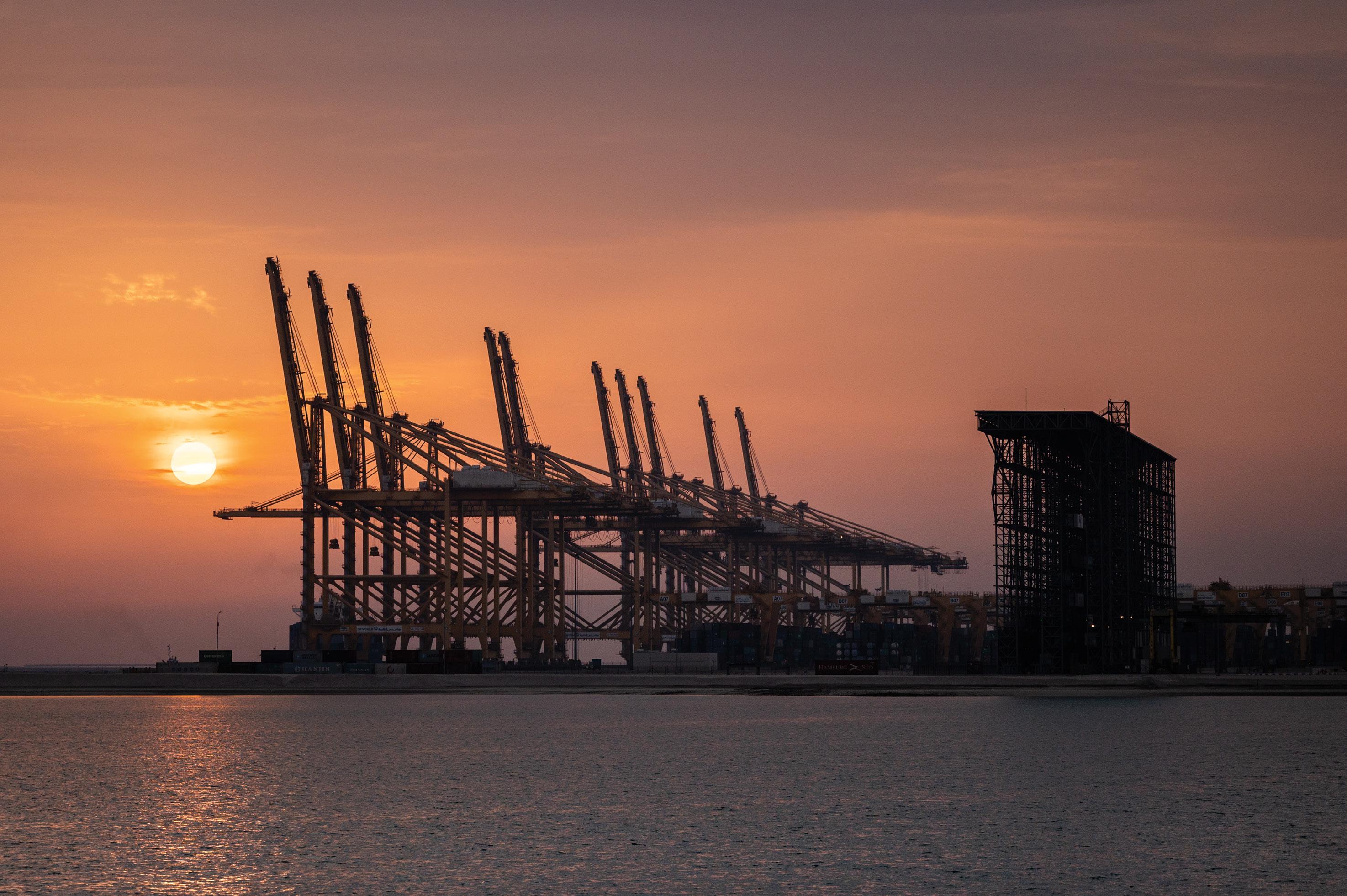

dpworld.ae









































































































































 Hayes , adventurer, author, team and executive coach, and consultant
Hayes , adventurer, author, team and executive coach, and consultant





























 Alan O’Neill Managing director of Kara, change consultant and speaker
Alan O’Neill Managing director of Kara, change consultant and speaker




















































































































































































































































 AUTHORITY
AUTHORITY
















































































































































 CHIEF EXECUTIVE OFFICER, ABU DHABI ISLAMIC BANK
CHIEF EXECUTIVE OFFICER, ABU DHABI ISLAMIC BANK















































 DEPUTY MANAGING DIRECTOR, ASTER DM HEALTHCARE
DEPUTY MANAGING DIRECTOR, ASTER DM HEALTHCARE























 GENERAL MANAGER, MICROSOFT UAE
GENERAL MANAGER, MICROSOFT UAE






























 SVP – GE, PRESIDENT AND CEO –GE INTERNATIONAL MARKETS
SVP – GE, PRESIDENT AND CEO –GE INTERNATIONAL MARKETS

































 MAJID AL FUTTAIM – LIFESTYLE
MAJID AL FUTTAIM – LIFESTYLE












 FOUNDER AND
FOUNDER AND












 DRIVEN PROPERTIES
DRIVEN PROPERTIES






 CHAIRMAN AND CEO, CENTURY FINANCIAL
CHAIRMAN AND CEO, CENTURY FINANCIAL























 BY NEESHA SALIAN
BY NEESHA SALIAN























 BY ZUBINA AHMED
BY ZUBINA AHMED






































 Helal Lootah Co-founder, Lune
Helal Lootah Co-founder, Lune


































